Bénéficiant d’un climat tropical, le Costa Rica est un petit pays d’Amérique centrale. Privilégiez la saison sèche, de décembre à avril, pour votre voyage. Au bord de la mer des Caraïbes, partez observer les oiseaux multicolores du parc national de Tortuguero. Poursuivez votre séjour vers l’ouest, au fil des ponts suspendus du célèbre parc national du volcan Arenal. Pour une parenthèse relaxante, vous pourrez aussi opter pour une semaine « tout inclus » au bord de l’océan Pacifique. Si vous choisissez un circuit au Costa Rica, n’hésitez pas à élargir votre horizon au Panama , ou au Nicaragua , pays frontaliers, ou à vous envoler vers le Honduras .

Voyages Costa Rica
Circuit splendeurs du costa rica.
- Un voyage 100% nature
- Des lodges au milieu de la nature
- Observation de la faune et la flore
Souhaitez vous supprimer ce produit des favoris ? Circuit Splendeurs du Costa Rica
Autotour Richesses naturelles du Costa Rica
Souhaitez vous supprimer ce produit des favoris ? Autotour Richesses naturelles du Costa Rica
Circuit Nature et plages du Costa Rica
Souhaitez vous supprimer ce produit des favoris ? Circuit Nature et plages du Costa Rica
Hotel Punta Leona 4*
Souhaitez vous supprimer ce produit des favoris ? Hotel Punta Leona 4*
Circuit Liberté des Volcans aux Plages du Pacifique
Souhaitez vous supprimer ce produit des favoris ? Circuit Liberté des Volcans aux Plages du Pacifique
Hotel Fiesta Resort tout compris 5*
Souhaitez vous supprimer ce produit des favoris ? Hotel Fiesta Resort tout compris 5*
Club Lookéa Punta Léona 4*
- Au cœur d'une forêt tropicale
- 2 très belles plages sauvages
- Les chambres dans des bungalows
Souhaitez vous supprimer ce produit des favoris ? Club Lookéa Punta Léona 4*
Club Lookéa Punta Léona 4* - Choix Flex
Souhaitez vous supprimer ce produit des favoris ? Club Lookéa Punta Léona 4* - Choix Flex
Hotel Riu Guanacaste 5*
Souhaitez vous supprimer ce produit des favoris ? Hotel Riu Guanacaste 5*
Circuit Nature et Plage en hôtels 2* et 3*
Souhaitez vous supprimer ce produit des favoris ? Circuit Nature et Plage en hôtels 2* et 3*
Hotel Occidental Tamarindo 5*
Souhaitez vous supprimer ce produit des favoris ? Hotel Occidental Tamarindo 5*
Hotel Occidental Papagayo 5* - Adults Only
Souhaitez vous supprimer ce produit des favoris ? Hotel Occidental Papagayo 5* - Adults Only
Circuit & Autotour Sur la Route du Costa Rica et Monteverde
Souhaitez vous supprimer ce produit des favoris ? Circuit & Autotour Sur la Route du Costa Rica et Monteverde
Autotour Les Chemins de la Découverte
Souhaitez vous supprimer ce produit des favoris ? Autotour Les Chemins de la Découverte
Circuit & Autotour Sur la Route du Costa Rica et Rincon de la Vieja
Souhaitez vous supprimer ce produit des favoris ? Circuit & Autotour Sur la Route du Costa Rica et Rincon de la Vieja
Autotour Richesses naturelles du Costa Rica - Extension Escapade à Tortuguero
Souhaitez vous supprimer ce produit des favoris ? Autotour Richesses naturelles du Costa Rica - Extension Escapade à Tortuguero
Circuit Nature et plages du Costa Rica - Extension Escapade à Tortuguero
Souhaitez vous supprimer ce produit des favoris ? Circuit Nature et plages du Costa Rica - Extension Escapade à Tortuguero
Circuit Fôret Tropicale et Plage Ensoleillée
Souhaitez vous supprimer ce produit des favoris ? Circuit Fôret Tropicale et Plage Ensoleillée
Inscription Newsletter
Veuillez entrer une adresse mail valide (exemple : [email protected]).
Vous pouvez-vous désabonner à tout moment, en cliquant sur le lien de désabonnement inséré dans la newsletter.
Le JavaScript semble être désactivé sur votre navigateur. Javascript doit être activé dans votre navigateur pour utiliser toutes les fonctionnalités de ce site.
- Afrique du sud
- Burkina Faso
- Corée du nord
- Corée du sud
- Philippines
- Pays Baltes
- République Tchèque
- Nouvelle-Calédonie
- Nouvelle-Zélande
- Polynésie Française
- Arabie saoudite
- Azerbaïdjan
- Emirats Arabes Unis
- Kirghizistan
- Ouzbékistan
- Iles Canaries
- Iles Cyclades
- Ile Maurice
- Iles Salomon
- Rép. Dominicaine
- Voyage de noces
- + de 10 personnes ?
- Expo U Osaka
- En septembre
- En novembre
- En décembre
- En amoureux
- À la Toussaint
- À Noël et au Nouvel An
- Circuit accompagné
- Voyage en famille
- Toutes les inspirations
- Nos événements culturels
- Carnets de voyage
- La Maison de thé
- Qui sommes-nous
- Notre valeur ajoutée
- Notre engagement responsable
- Notre agence de voyage
- Revue de presse
- Demander un devis
- Contactez-nous
- Prendre un rdv
- Me connecter
- Voyage Amériques >
Voyage Costa Rica
Votre prochain voyage sera inoubliable
Accès rapide
Paradis vert
Un voyage au Costa Rica est une immersion au cœur d’une nature sauvage, magnifique sanctuaire écologique figurant dans le top 5 des destinations de l’Amérique latine. Un dépaysement total au paradis vert pour le voyageur, entre lagunes, plages secrètes et mangroves, lacs, volcans actifs et jungle exubérante où vit le mythique quetzal, symbole de liberté.
Nos spécialistes vous soufflent des idées d’escapades pour tous les goûts, classiques ou hors des sentiers battus , pour la plus belle des évasions en Amérique centrale : circuit accompagné d’un guide naturaliste à la découverte des sites incontournables ; programme écotourisme à deux ou en famille à la rencontre des communautés indigènes pour une expérience de partage inoubliable ; trek & aventure au fil des trésors et merveilles de la biosphère costaricienne ; vacances au Costa Rica combinant Nicaragua et Panama pour un trio centraméricain ; voyage sur mesure de la côte caraïbe à l’océan Pacifique ; autotour du volcan Arenal à la péninsule d'Osa... Et pourquoi pas un voyage de noces au Costa Rica ?
Porte d’entrée et de sortie du Costa Rica nichée dans la verte vallée Centrale, San José invite à flâner dans son centre historique, paré de demeures coloniales datant du boom du café au 19 e siècle et transformées en galeries d’art. Mais le graal que tout visiteur recherche lors d’un circuit au Costa Rica est bel et bien la nature.
Côté Caraïbes, Tortuguero , labyrinthe de végétation luxuriante créé par l’estuaire du fleuve, est une enclave préservée où viennent pondre les tortues vertes et où l'on recense crocodiles, paresseux et espèces d’oiseaux multicolores par centaines. Promenades en pirogue et sentiers de randonnée permettent de partir explorer la faune et la flore endémiques incroyables, que l’on retrouve au parc national Arenal et son volcan roi, ainsi qu’au parc Rincon de la Vieja , à la fois volcanique et boisé. Vous pourrez assister à la ponte des tortues marines, entre octobre et mars, sur la Playa Grande. Non loin, offrez-vous un délicieux moment de farniente au bord du Pacifique, sur les belles plages de Tamarindo bordées de jardins tropicaux, parfaits pour les surfeurs, les amoureux de la nature et d'écotourisme !
De plages paradisiaques en panoramas éblouissants, le patrimoine naturel des Ticos est également grandiose au parc Manuel Antonio , le plus petit des parcs nationaux du pays et le plus fréquenté. Les innombrables espèces d’oiseaux et papillons colorés y côtoient lézards, serpents, iguanes et singes hurleurs. Pour partir en excursion dans une forêt tropicale dense, mystique, brumeuse, cap sur la réserve biologique de Monteverde , perchée à 1 500 m d’altitude. Là, votre itinéraire se termine dans les nuages...
Découvrez notre agence de voyage Costa Rica
Affiner votre recherche

La petite boucle du Costa Rica
Autotour 12 Jours / 10 Nuits
À partir de 1 970 €*

Des Caraïbes au Pacifique
À partir de 1 760 €*

La quintessence du Costa Rica
Circuit accompagné 12 Jours / 10 Nuits
À partir de 3 545 €*

La grande boucle du Costa Rica
Autotour 14 Jours / 12 Nuits
À partir de 2 390 €*

Costa Rica, la pura vida en famille
Circuit accompagné 13 Jours / 11 Nuits
À partir de 4 120 €*

Costa Rica, entre terre et mer
Autotour 13 Jours / 11 Nuits
À partir de 3 590 €*

Duo centraméricain
À partir de 4 540 €*

Voyage de noces au Costa Rica
Autotour 9 Jours / 7 Nuits
À partir de 4 280 €*
Flexibilité
Report sans frais sur toutes nos destinations ou remboursement en cas de fermeture de frontière.

Des conseillers spécialistes connaissant dans les moindres détails leurs destinations
Contact téléphonique 24h/24 , 7j/7 pendant tout votre voyage.
Culture & voyage
Les clés pour bien préparer votre voyage au costa rica.
Conseils de nos experts, témoignages et coups de cœur
L’AVIS D’ALBERTO, CONSEILLER VOYAGES AMÉRIQUE LATINE
« Je suis admiratif du Costa Rica, pays d’Amérique latine qui a su garantir une démocratie, un développement et un modèle économique respectueux de la nature. Volcans, mangroves, montagnes, pleines, plages, piscines naturelles, sources, fleuves et forêts... ses paysages préservés, la diversité de sa faune et de sa flore sont uniques au monde. »
LES 4 COUPS DE CŒUR D’ALBERTO AU COSTA RICA
- Assister à la ponte des tortues marines Doyennes des océans, les tortues marines sont des reptiles impressionnants que vous pouvez facilement admirer lors d’un séjour au Costa Rica. Les plages sauvages servent ici de refuge aux tortues qui viennent nicher et pondre leurs œufs. Sur la côte caraïbe et au parc national Tortuguero, la ponte des tortues vertes s’étend du mois de juin au mois d’octobre. Sur la côte Pacifique, on observe les tortues luths entre septembre et mars et les tortues de Ridley entre juin et janvier. Voir le défilé de centaines de tortues marines, leur silhouette se dessinant à la lueur du ciel étoilé, est un spectacle incroyable… et émouvant !
- Visiter le Centro Neotropico Sarapiquis Consacré au développement durable, à la biodiversité et aux cultures indigènes, ce complexe original permet d'aborder l'histoire de la forêt tropicale et l'interaction de l'homme avec elle et donne un aperçu de la période précolombienne, méconnue. On y trouve un palenque reconstitué, basé sur les constructions précolombiennes traditionnelles de la région, des jardins botaniques et un musée présentant des masques, des céramiques, des costumes… Le Centro Neotropico Sarapiquis propose également un lodge haut de gamme , pour être au cœur de ce projet éco-modèle exclusif. De l'autre côté de la rivière, des sentiers et ponts suspendus, à la fois sur la rivière et à travers la canopée forestière.
- Vivre la "Pura Vida" à l'Aguas Claras à Playa Chiquita Voici l'un des plus beaux établissements de la côte Caraïbe costaricienne. Tenu par un couple d’artistes très stylish , ce magnifique boutique-hôtel compte treize chambres distribuées entre jardin tropical et plage sauvage, décorées avec un artisanat local raffiné et où le blanc prédomine. Avec une politique de développement durable, le chef du restaurant propose une cuisine raffinée avec des aliments exclusivement bio et de saison. Le lieu est idéal pour qui cherche détente et déconnexion.
- Découvrir l'artisanat costaricien au Coco Loco Art Gallery Tout près de la Fortuna, le Coco Loco Art Gallery est un enchevêtrement de petites salles où s’exposent toutes les facettes de l’artisanat costaricien dans une explosion de couleurs. Peintures sur toile d’art naïf, objets décoratifs en bois flottant, poteries ornementales en faïence, miniatures des charrettes de boyeo, splendides masques cérémoniels de la communauté Boruca, vous n’aurez que l’embarras du choix pour ramener un souvenir de grande qualité en France.
OÙ PARTIR AU COSTA RICA ? Notre top 5 des sites costariciens incontournables
- La capitale, San José , nichée au cœur de la vallée centrale, dont le centre historique est paré de demeures coloniales transformées en galeries d’art. Son théâtre national, fleuron architectural du néoclassique, en épatera plus d’un !
- Le trio incontournable des parcs nationaux, au fil de la Panaméricaine : le parc national Arenal et son volcan roi au cône parfait ; la réserve biologique de Monteverde et sa forêt nuageuse où l’on aperçoit le délicat quetzal fendre la brume matinale, moment de frisson rare et exquis ; le parc Rincon de la Vieja , à la fois volcanique et boisé.
- Tortuguero , côté Caraïbes, une enclave préservée où viennent pondre les tortues vertes et où l'on recense crocodiles, paresseux et espèces d’oiseaux multicolores par milliers.
- Le parc Manuel-Antonio , le plus petit des parcs nationaux du pays et où la concentration d’animaux dépasse de loin tous les autres. Les innombrables espèces d’oiseaux et papillons colorés y côtoient lézards, serpents, iguanes et singes hurleurs.
- La péninsule d’Osa : Corcovado et Isla del Caño, pour une immersion dans une nature sauvage et les criques de sable blanc du Pacifique.
LES BONNES RAISONS DE PARTIR AU COSTA RICA Notre top 10 des expériences uniques à vivre au Costa Rica
- Percer les secrets d’un sanctuaire écologique qui a développé avec succès un tourisme durable depuis des décennies et fait office de modèle dans le monde entier.
- Parcourir les sentiers verdoyants des parcs nationaux d’Arenal, de Monteverde et du Corcovado avec un guide naturaliste et s’émerveiller face à la faune et la flore endémiques.
- S’offrir un séjour cocooning dans des lodges exclusifs , comme Aguas Clara à Playa Chiquita
- Rencontrer des communautés reculées pour une expérience immersive inoubliable
- Découvrir une faune marine étonnante de diversité lors de sorties plongée à Cahuita.
- Vivre l’ambiance « pura vida » , le leitmotiv national, comme unique philosophie épicurienne partagée de tous, en goûant à la cuisine caribéenne ou au groove du reggae.
- Assister à la ponte des tortues marines , entre octobre et mars, sur la Playa Grande, sur la côte Pacifique.
- S’offrir de délicieux moment de farniente sur les belles plages de Tamarindo, Manuel Antonio ou Samara, véritables édens pour les surfeurs, les amoureux de la nature et d'écotourisme.
- Faire le plein d’aventure en multipliant les activités ludiques : descente en rafting à Sarapiqui, kayak dans les mangroves, initiation au surf à Tamarindo, pirogue à travers la forêt caribéenne à Tortuguero...
- Faire une parenthèse culture au milieu de ce bain de nature , en visitant le musée de jade et le musée de l’or de San José.
QUAND PARTIR AU COSTA RICA ? La meilleure période pour partir au Costa Rica
La saison sèche, de fin décembre à avril, est la meilleure période pour s’envoler pour le Costa Rica : le soleil domine sur la côte Caraïbe comme sur la côte Pacifique !
Autotour Costa Rica
Rien de tel qu’un autotour au Costa Rica pour explorer les trésors du champion de l’écologie et de l’écotourisme. Au volant de votre voiture, en solo, entre amis ou en famille, le pays des Ticos se prête à merveille à un road trip grâce à des routes parfaitement répertoriées par nos systèmes de navigation.
Circuit accompagné Costa Rica
Enclin au calme et au retour aux sources, vous rêvez de partir en circuit accompagné au Costa Rica pour lâcher prise au cœur d’une nature originelle ? En effet, si ce petit pays centraméricain fascine tant et s’est imposé, en moins de trente ans, parmi les destinations préférées des voyageurs-philosophes de tous horizons, c’est avant tout grâce à une volonté politique pacifiste et avant-gardiste/p>
Voyage sur mesure Costa Rica
Au volant de votre véhicule ou conduit par un chauffeur, mettez les étapes incontournables au programme de votre voyage sur mesure au Costa Rica , champion de l’écotourisme qui ravit les amoureux du bien-être et de l’environnement.
Découvrez le Costa Rica autrement :
Hors des sentiers battus Costa Rica
Trek Costa Rica
Voyage de noces Costa Rica
Voyage famille Costa Rica
Voyage à deux Costa Rica
Ecotourisme Costa Rica
Besoin d'un conseil?

01 53 63 13 40
Prendre un rendez-vous
- Nos villes et étapes au Costa Rica
- Nos suggestions de voyage
- Infos pratiques
Tortuguero , petite Amazonie caraïbe ; Arenal , où vous accédez à la canopée grâce aux ponts suspendus ; Monteverde au cœur de la forêt tropicale nuageuse ; Manuel Antonio bordé des grandes plages de sable blanc de la côte pacifique ; Rincon de la Vieja et sa forêt tropicale sèche, emblème du Guanacaste… Autant de parcs nationaux incontournables à tout voyage au Costa Rica , au départ de San José , ville moderne cachant encore quelques jolies demeures du XIXe siècle, héritage des barons du café. Dans la région de Puerto Viejo, ne manquez pas la réserve biologique de la Selva et le Centro NeoTropico Sarapiquis, centre original de développement durable.
Voyage en Argentine
Voyage aux Bahamas
Voyage au Belize
Voyage en Bolivie
Voyage au Brésil
Voyage Canada
Voyage au Chili
Voyage en Colombie
Voyage à Cuba
Voyage en Equateur
Voyage Etats Unis
Voyage aux Galapagos
Voyage au Guatemala
Voyage en Jamaïque
Voyage au Mexique
Voyage au Nicaragua
Voyage au Panama
Voyage en Patagonie
Voyage au Pérou
Voyage en République Dominicaine
Voyage en Uruguay
Voyage au Venezuela

Inscrivez-vous à notre newsletter pour recevoir nos inspirations de voyage en avant-première
Soyez informé en avant-première de tous nos voyages et de tous nos circuits
- Contact : [email protected] Prendre un rendez-vous en ligne Du lundi au samedi de 10h à 19h 76, rue Bonaparte Paris 6 ème Europe & Orient : 01 56 81 38 30 Inde : 01 56 81 38 38 Asie : 01 40 51 95 15 Chine : 01 40 51 95 00 Afrique & océan indien : 01 56 81 38 29 Amérique du Nord : 01 53 63 13 43 Amérique Latine : 01 53 63 13 40 Australie & îles du Pacifique : 01 70 36 35 40
- Qui sommes nous ?
- Notre Maison de thé
- Nous rejoindre
- Votre agence de voyage à Paris
- Votre voyage de A à Z
- Voyage groupes
- Idée voyage
- Écotourisme
- Voyage sur mesure
- Nos brochures
- Calculateur CO²
- Sécurité & confidentialité
- Conditions générales de vente
- Conditions générales d'utilisation
- Mentions légales
- Charte avis voyageur

© Les Maisons du Voyage
Costa Rica Tours, Adventures & Vacations
Our 10 favorite costa rica tours & adventures for 2024-2025, beaches & rainforest, costa rica quest, adventure pacifica, costa rica's mountains and beaches, discover costa rica, costa rica family vacation, coast to coast multisport, costa rica highlights, costa rica escape, wild costa rica corcovado, get inspired to travel to costa rica, active trips, great for families, kayaking trips, wildlife & rainforests, whitewater rafting trips, our top 6 costa rica adventure cruises for 2024-2025, can't find what you're looking for we've got you covered, costa rica travel tips & vacation guide, 10 best costa rica activities for nature lovers, best time to travel to costa rica, costa rica national parks and natural reserves worth visiting.
- Manuel Antonio National Park : This is the quintessential Costa Rica natural paradise where the beach seamlessly meets the rainforest, offering encounters with boisterous monkeys, adorable sloths, and exotic tropical birds.
- Arenal Volcano National Park : Located to the north of San Jose, Arenal Volcano presents a tropical paradise complete with soothing hot springs, dense rainforests, and the awe-inspiring presence of Volcan Arenal, a towering, billowing giant that defines the region.
- Monteverde Cloud Forest Reserve : As one of Costa Rica's original eco-tourism hotspots, Monteverde Cloudforest offers enchanting cloud forest walks, exhilarating canopy ziplines, immersive visits to local farms, and the chance to stay in ecologically friendly lodges.
- Corcovado National Park: Often referred to as "the most biologically intense place on Earth," Corcovado is a remote and pristine park where you can find diverse wildlife, including jaguars and tapirs.
- Tortuguero National Park : Nestled on Costa Rica's lesser-visited Caribbean coast, Tortuguero, meaning "sea turtle breeding spot" in Spanish, provides a unique opportunity to witness green turtles in their natural environment.
- Palo Verde National Park: This park is popular among birdwatchers, especially during the dry season when migratory birds congregate in large numbers.
- Irazu Volcano National Park : Its proximity to San Jose makes it a popular destination for those seeking a glimpse of an active volcano and its crater lakes.
- Poas Volcano National Park: Another accessible volcano park near San Jose, Poas is known for its active crater and stunning vistas.
Getting to Costa Rica & Back - Transportation Guide
Costa rica travel overview, costa rica family vacations, top costa rica adventure activities.
- Whitewater Rafting : Experience thrilling rapids on world-class rivers like the Pacuare and Sarapiquí.
- Hiking & Trekking : Traverse diverse landscapes, from volcanic craters to cloud forests and coastal trails.
- Zip Lining - Canopy Climbing : Soar above the treetops and enjoy panoramic views of lush rainforests.
- Snorkeling : Discover vibrant marine life in the crystal-clear waters of Costa Rica's coastal areas.
- Sea Kayaking : Paddle along serene coastlines, mangroves, and remote beaches, exploring hidden coves.
- Rainforest Wildlife Viewing & Adventures : Encounter exotic species such as sloths, toucans, and monkeys in their natural habitats.
- Canyoning: Rappel down waterfalls and navigate through rugged canyons in Costa Rica's mountainous regions.
- Horseback Riding : Explore the countryside, beaches, and forests on horseback, experiencing nature up close.
Birding in Costa Rica
- Hummingbirds: Marvel at dozens of hummingbird species, each with a unique iridescent plumage and behavior. Keep an eye out for them in lush rainforests and gardens throughout the country.
- Resplendent Quetzal: This magnificent bird, known for its vibrant green and red plumage, calls the cloud forests of Monteverde and other highland regions home.
- Rufous Motmot: Found in the dense undergrowth of rainforests and along riverbanks, the Rufous Motmot is known for its distinctive racket-shaped tail and vibrant plumage.
- Kingfishers: Keep an eye on riverbanks and mangroves, especially in the Pacific and Caribbean coastal regions, for a chance to spot various kingfisher species.
- Toucans & Aracaris: These iconic birds with large, colorful bills are often seen in the canopy of tropical rainforests, particularly in Tortuguero and Corcovado National Parks.
- White-collared Manakin: Look for this striking bird in lowland rainforests, where males perform elaborate courtship dances to impress potential mates.
Costa Rica’s Favorite Attractions
- La Fortuna: Located near the Arenal Volcano, La Fortuna is famous for its hot springs, lush rainforests, and outdoor adventures like hiking, zip-lining, and wildlife watching.
- Santa Teresa: A laid-back beach town on the Nicoya Peninsula, Santa Teresa is known for its excellent surfing conditions, stunning sunsets, and vibrant local scene.
- Nicoya Peninsula: This beautiful peninsula is a haven for nature lovers, offering pristine beaches, diverse wildlife, and opportunities for hiking, snorkeling, and exploring charming coastal towns.
- Playa Conchal: Known for its unique crushed-shell beach, this is a popular destination for sunbathing, swimming, and snorkeling in crystal-clear waters.
- Lake Arenal: Costa Rica's largest lake, Lake Arenal, offers water activities such as windsurfing and boat tours with the Arenal Volcano as a stunning backdrop.
- Playa Samara: A tranquil beach town on the Nicoya Peninsula, Playa Samara is a great spot for swimming, kayaking, and enjoying a relaxed atmosphere.
5 Top Things to Do in Manuel Antonio National Park, Costa Rica
Travel tips for exploring costa rica.
- Learn Some Spanish: While many Costa Ricans speak English, learning some basic Spanish phrases can enhance your experience and interactions. Spanish is the official language, and using polite greetings like "hola" (hello) and "gracias" (thank you) can go a long way in fostering positive connections with locals.
- Pack Accordingly: Bring lightweight, breathable clothing, comfortable walking shoes, and don't forget insect repellent and sunscreen. The tropical climate can vary, so it's wise to have layers for different elevations and activities.
- Currency and Payments: Costa Rican colón (CRC) is the local currency, but U.S. dollars are widely accepted. Carry some cash, but credit cards are commonly used. However, smaller establishments may prefer cash, so having some colones on hand is advisable.
- Respect Nature: Help preserve Costa Rica's natural beauty by following eco-friendly practices like recycling and avoiding single-use plastics. Costa Rica is a leader in sustainable tourism, and respecting the environment is a shared responsibility.
- Local Cuisine: Don't miss out on trying traditional dishes like gallo pinto (rice and beans), casado (a typical lunch), and tropical fruits. Costa Rican cuisine reflects the country's rich cultural heritage and is a delightful culinary experience.
- Explore National Parks: Visit Costa Rica's incredible national parks and reserves to experience the country's diverse ecosystems and wildlife.
- Enjoy "Pura Vida": Embrace the "pura vida" lifestyle, which translates to pure life and represents a laid-back, positive attitude. It's a way of life in Costa Rica and embodies the friendly and welcoming spirit of the people.
- Respect Wildlife: Keep a safe distance from animals in the wild and never feed them. Wildlife encounters are best enjoyed from a distance. This not only ensures your safety but also protects the animals and their natural behaviors.
- Tipping: Tipping is customary in Costa Rica, with 10% being a common practice in restaurants. In addition to restaurants, it's also customary to tip tour guides, drivers, and hotel staff for exceptional service.
Our Favorite Eco-Lodges in Costa Rica
Costa rica travel videos.
Costa Rica Travel Reviews & Stories
Exploring costa rica with our family, pura vida travels, costa rica travel faqs.
Do I need a visa to visit Costa Rica? You will need a passport that's valid for at least 6 months in order to travel to Costa Rica, but a visa is not required for tourism.
When is the best time for a trip to Costa Rica? The most popular time to visit Costa Rica is during the dry season from December to April, but many people enjoy the less crowded months of the green season from May to November, when daily showers might be possible. Overall, there's never a bad time to visit and the temperatures are relatively consistently warm year-round.
What are the best regions to visit in Costa Rica? Costa Rica offers diverse regions, each with unique attractions. The Pacific Coast is famous for its beautiful beaches and rich marine life. The Caribbean Coast offers vibrant culture and lush rainforests. The Central Valley is home to San José and several coffee plantations. The Northern Plains are known for volcanoes and hot springs, while the Osa Peninsula is a must-visit for wildlife enthusiasts.
If I only have 8 days and have never been, what do you recommend I do? For first-time visitors with 8 days, a well-rounded itinerary might include:
Day 1-2: Explore San José and nearby coffee plantations or Poás Volcano.
Day 3-5: Head to Arenal Volcano for hot springs, hiking, and waterfalls.
Day 6-8: Visit the Pacific Coast, perhaps Manuel Antonio National Park for wildlife and beaches, or the Nicoya Peninsula for a more laid-back beach experience.
Is it necessary to book tours in advance? While some popular tours and accommodations can book up during peak season, many tours can be arranged on the spot. However, booking in advance ensures you get your preferred activities and guides.
How do I get to Costa Rica, and which airport should I fly into? Most international visitors arrive in Costa Rica via Juan Santamaría International Airport (SJO) in San José. Another option is Daniel Oduber Quirós International Airport (LIR) in Liberia, which is convenient for those heading to the Pacific Coast or the Guanacaste region. Both airports offer numerous international flights and are well-connected to major destinations in Costa Rica.
Do I need to rent a car in Costa Rica? Renting a car can provide flexibility, especially if you plan to explore multiple regions. However, Costa Rica also has a well-developed network of shuttles, taxis, and domestic flights that make it easy to get around without a car.
Is Costa Rica safe for travelers? Costa Rica is one of the safest countries in Central America. However, it's always wise to take standard precautions, such as avoiding isolated areas at night and securing valuables.
How hard is rafting in Costa Rica? Costa Rica offers rafting experiences for all levels. The Pacuare River is popular for more adventurous rafters, with class III-IV rapids. For a gentler experience, consider the Savegre River, which offers class II-III rapids and is suitable for beginners and families.
Is ziplining safe in Costa Rica? Yes, ziplining in Costa Rica is generally safe. The country has well-established zipline tours with professional guides and high safety standards. Most operators use high-quality equipment, follow strict safety protocols, and offer thorough briefings before the activity. However, it's important to choose reputable tour companies and ensure that the operation is certified. If you follow the guidelines provided by the guides, ziplining can be a thrilling and safe experience.
Will I see monkeys in Costa Rica? Yes, Costa Rica is home to several species of monkeys, including howler monkeys, capuchins, and spider monkeys. They are often spotted in national parks like Manuel Antonio, Corcovado, and Tortuguero.
What kind of wildlife can I expect to see? Costa Rica is known for its biodiversity. In addition to monkeys, you might see sloths, toucans, parrots, jaguars, and a variety of reptiles and amphibians. National parks like Corcovado and Tortuguero are hotspots for wildlife viewing.
What should I pack for a trip to Costa Rica? Pack light, breathable clothing, a rain jacket, sturdy shoes for hiking, swimwear, insect repellent, sunscreen, and a hat. Binoculars and a camera are also great for wildlife viewing.
Is tipping customary in Costa Rica? Tipping is, of course, not required on any of our trips, however it is always appreciated. If you'd like to tip, budget $2-10/person/day for the guides and $1-3/person/day for the drivers.
Will I need power adapters or converters in Costa Rica? Costa Rica uses 110 volt, 60 cycle electricity, with two flat prongs. This is the same as the United States, so you will not need a power converter unless you are traveling from another country.
What is internet access like in Costa Rica? Internet access in the developed parts of Costa Rica is pretty strong and high speed. In public areas you might find a WiFi hotspot, and most restaurants and hotels will also have high speed internet. You could also easily find a cyber cafe with a good connection.
Will I have access to WiFi during my cruise? Maybe, but don't count on it. Some ships or yachts do offer free WiFi, but more often than not these boats focus more on the experience and comfort rather than connectivity to the internet.
What are the bathrooms like in Costa Rica? Costa Rica has standard western flush toilets, but per local tradition, you should throw your toilet paper in the waste basket next to the toilet to avoid clogging the pipes.
Can I use my cell phone while in Costa Rica? If you have a GSM phone, you can use international roaming, or to avoid roaming charges, use an unlocked smartphone and simply replace the SIM chip with a local chip from Kolbi, Claro, or Movistar and then charge it with a balance based on how much you plan to use it. This can usually most easily be done in the airport upon entry at various kiosks.
Can I drink tap water in Costa Rica? In general, yes - unless otherwise told - it is safe to drink the tap water and eat any foods washed with it; however, if your cruise visits other neighboring countries, like Colombia, Panama, or Cuba, it is not safe to assume that you can drink the tap water there too.
Are credit cards generally accepted? Are ATMs accessible? In the more developed parts, you can use your credit card and find ATMs fairly commonly, but smaller stores and more remote destinations will likely be cash-only. Fortunately, most of our tours are all-inclusive, so all of the meals and activities from the beginning to end of your itinerary are included in the price, unless you decide to depart from the itinerary or add on extra activities.
Should I purchase travel insurance? Absolutely! Having travel insurance is very important just to make sure that you're covered no matter what happens - a small investment now can save you thousands if something doesn't go as you expect it to. Our Once You're Booked page has more details on this, including discounts through one of our partner companies.
Top Costa Rica Travel Destinations
- Central America & Mexico
- Manuel Antonio
- Monteverde Cloud Forest
- Osa Peninsula - Golfo Dulce
- Pacuare River
- Puerto Viejo
Costa Rica Trips by Departure Date
- 2024 Costa Rica trips (65)
- 2025 Costa Rica trips (65)
- 2026 Costa Rica trips (56)
- September 2024 (62)
- October 2024 (60)
- November 2024 (62)
- December 2024 (59)
- January 2025 (57)
- February 2025 (60)
- March 2025 (58)
- November 2025 (54)
- December 2025 (58)
Top Experiences in Costa Rica
- Costa Rica Land Tours (24)
- Costa Rica Cruises (14)
- Costa Rica Beaches (10)
- Costa Rica Small Ship Cruises (8)
- Costa Rica Family (7)
- Costa Rica Active (5)
- Costa Rica Wildlife & Safari Exploration (4)
- Costa Rica Honeymoon (3)
Costa Rica Trips by Duration
- 6 day trips (4)
- 8 day trips (15)
- 9 day trips (11)
- 11 day trips (4)
Costa Rica Trips by Activity
- Costa Rica wildlife viewing (31)
- Costa Rica snorkeling (22)
- Costa Rica whitewater rafting (20)
- Costa Rica rainforest exploration (18)
- Costa Rica kayaking (15)
- Costa Rica ziplining (14)
- Costa Rica horseback riding (11)
- Costa Rica hiking (10)
- Costa Rica village visits (8)
- Costa Rica wilderness lodge exploration (7)
- Costa Rica fishing (7)
- Costa Rica archaeological site visits (3)
Why Travel With Adventure Life
Recognized by.

Costa Rica Tours & Vacations

Biodiverse, brilliantly colourful and naturally breathtaking, Costa Rica embraces a slower pace of life.
An adventure hotspot for some, a cultural haven for others and a tropical paradise for most, Costa Rica definitely lives up to its translation as the ‘rich coast.’ And as you journey under lush jungle canopies and through laidback surf towns, you’ll soon be rich with memorable experiences. Lean into the slower pace of life as you become a pro at spotting toucans in Monteverde’s steamy cloud forests or listening out for the distant whoop of white-faced capuchins in Manuel Antonio. The phrase ‘hustle and bustle’ isn’t in Costa Rica’s vocabulary, as you’d expect from a country whose unofficial motto is ‘ pura vida ’ – the pure life.
Our Costa Rica trips
Let's create an exclusive trip for your group.
Costa Rica tour reviews
Filter by rating
Costa Rica Experience
Classic Costa Rica
Central American Journey
Costa Rica at a glance
Capital city.
San Jose (population approximately 340,000)
Approximately 5.1 million
(GMT-06:00) Central America
CALLING CODE
Electricity.
Type A (North American/Japanese 2-pin) Type B (American 3-pin)
Learn more about Costa Rica
Culture and customs.
Costa Rican culture can be summed up in two words: 'pura vida', or the pure life. It's as a greeting, farewell and a way to show appreciation. Like any good life motto, pura vida is better experienced than explained. It means being friendly and polite, taking it easy and being thankful for what you have. Costa Ricans' carefree way of life, coupled with living in one of Central America's most progressive and prosperous nations, makes the locals some of the happiest in the world.
You'll find that people in Costa Rica are generally in less of a hurry than most North Americans or Europeans. Following what is affectionately known as 'Tico time', people will often be fashionably late, except for things with schedules – Tico time does not apply at work, the movies or the train station.
Costa Ricans (or Ticos and Ticas) are known for their conflict-averse nature. Peace is so highly valued here that their army was abolished in 1949, with all funds reallocated to create an 'army' of teachers instead.
History and government
Ancient history.
Like most Central American countries, indigenous communities thrived for thousands of years as hunter-gatherers, and it's believed that humans have lived in Costa Rica's jungles and rainforests for as many as 10,000 years. However, with no urbanised civilisation like the Aztecs or Mayas, and little to no cultural preservation during the time of Spanish colonisation, not much is known about Costa Rica's true indigenous populations.
Colonization, independence and trade
At the time of Spanish colonisation, it's estimated that 400,000 people lived in what is now known as Costa Rica. Christopher Columbus arrived in the region in 1502 on his fourth voyage, leading to the settlement of the first Spanish colony in Costa Rica.
As settlements grew, indigenous populations dwindled due to disease and forced labour. After around a century, the population had fallen to 20,000, and a century later, down to 8000.
In 1821 the Americas broke free of Spanish control, following the Mexican War of Independence. Costa Rica became part of the Federal Republic of Central America in 1823, before gaining complete independence in 1838
Costa Rica eventually found its feet in the global coffee trade, and by the end of the century, coffee crops accounted for nearly 90% of Costa Rica's exports and 80% of its foreign income. Not only was coffee production an indicator of wealth in Costa Rica, it was also a powerful political tool prompting the emergence of other industries, including the banana trade, which surpassed coffee exports in the early 20th century.
Costa Rica's economy relies on eco-tourism, and the country has championed the idea that the 'rich coast' refers not to resources dug from the ground but to the natural wonders above ground. The easygoing attitude of Ticos comes from a love of their country and pride that their democracy has endured in a conflict-ridden region.
Eating and drinking
Costa Rican cuisine is wholesome and fresh, with influence from Spanish , South American , and Caribbean culinary traditions. On the Caribbean coast, you'll find dishes with Afro-Caribbean flair, usually featuring more meats, spices and coconut milk.
Capital city, San Jose, not only has an up-and-coming food scene but has established itself as the craft beer hub of Costa Rica. Enjoy seasonal samplings on a San Jose Bites and Sites tour with Urban Adventures
What to eat in Costa Rica
- Gallo pinto Gallo pinto, the most common side dish in Costa Rica and across the Americas is served alongside meals morning, noon and night. It’s made of rice, beans, onions, peppers and spices, and the name translates to ‘speckled rooster’ because of the pops of colour in the rice.
- Casado If you eat at a ‘soda’ or a traditional Costa Rican restaurant, when travelling, chances are a casado will be on the menu. Although there are multiple variations of this tasting plate, you’ll likely get served up some gallo pinto, fried plantains and salad with either chicken, beef or fish, and freshly squeezed juice, covering all your food groups in one.
- Chifrijo Chifrijo is a common bar snack in Costa Rica. The word is a combination of its two main ingredients – chicharrones (fried pork rinds) and frijoles (beans). The chicharrones and beans are layered together and topped with guacamole and pico de gallo and served with fresh tortilla or plantain chips for dipping.
- Ceviche While ceviche is probably more often associated with Peru, the Tico version is a delicious variation. Made with raw fish cured in citrus juice, onions, coriander and peppers and served with tortilla chips or fried plantains, this dish is light, refreshing and a great start to a meal.
- Patacones Patacones are deep-fried green plantains that are ideal for a snack or as a dipping device for chifrijo, guacamole or pico de gallo.
- Sopa negra Sopa negra is a Costa Rican black bean soup, often flavoured with tomatoes and spices and served with egg and coriander.
- Rondon Rondon is a seafood chowder that comes from Jamaica. Other Caribbean countries who’ve adopted the recipe have put their own spin on it with their choice of seafood – fish, crab, small lobster – as well as the coconut milk broth and spices.
- Arroz con leche Sweet tooths can rejoice with this Central and South American dessert staple of arroz con leche – a spiced, sweet rice pudding made with cinnamon, cloves and raisins. Try it as a warming snack or a special dessert.
- Pejibayes This unusual fruit comes from a type of palm known as the peach palm – the same tree that heart of palm comes from. After boiling for a few hours and discarding the inner seed and outer skin, the fruit is finished with a squeeze of lime or a dollop of mayonnaise to eat the local way. The taste has been likened to a mix between a squash, potato and cashew.
What to drink in Costa Rica
- Coffee Costa Rica produces some of the best coffee in the world, so you’re set for your caffeine fix during your time in Costa Rica. It has both the ideal soil composition and the perfect elevation to grow the perfect coffee crop, so be sure to sample as many fresh local brews as you can.
- Alcohol If you’re looking for drinks of the alcoholic variety, try guaro – a liquor made from sugar cane, best enjoyed in a guaro sour (with lime, simple syrup and soda). The craft beer scene is growing quickly here as well, so look for microbrews from a multitude of small local breweries. And if you’re wondering how to say cheers, just say ‘pura vida’ again!
- Naturales Naturales – sometimes also called refrescos or batidos – are delicious fresh fruit juices blended with either milk or water. You can find them all over the country at small kiosks or booths in a variety of flavours like mango, pineapple and guanabana.
Geography and environment
Costa Rica is known for its incredible beaches and magical rainforests. But the backbone of this coastal nation is truly stunning mountain ranges, many of which contain both active and dormant volcanoes. You’ll also find heaps of waterfalls, lakes and rivers throughout the country. For this reason, adventure sports such as zip-lining, whitewater rafting and cycling are popular in inland destinations such as La Fortuna and Montverde, and adventure-packed activities are a popular way to experience the country.
Costa Rica’s diverse topography is home to many microclimates, and the temperature and weather can vary dramatically depending on elevation and how close you are to the coast. Rainforests, cloud forests, jungles and mountains exist side by side. The varied land and climate foster over 5% of the world’s total biodiversity.
Costa Rica is home to over 500,000 species of plants and animals. Those seeking to spot local wildlife will be enthralled by Costa Rica’s unique flora and fauna. And the spectacular variety of wildlife isn’t limited to the land – scuba diving is another popular activity, with Costa Rica boasting some of the most beautiful bays, beaches and reefs in the world.
Four of the most beautiful beaches in Costa Rica
Tortuguero National Park One of Costa Rica’s best-kept secrets, this national park is the unspoilt paradise you’ve been searching for. Take a dip in Tortuguero’s warm turquoise waters, or just relax on the idyllic shores.
Manuel Antonio A true eco-playground, you can spend a day exploring misty rainforests and searching for sloths and monkeys before cooling off on one of the delightful beaches. Head into Quepos town for some good food and fiery nightlife after the sun sets.
Jaco Once a sleepy beach town, Jaco’s proximity to San Jose has made it a one-stop shop for those seeking big waves and even bigger parties. The gateway to national parks and active adventures , there’s no denying Jaco’s uber-cool surf-town vibe.
Corcovado Well off the tourist trail, Corcovado isn’t your average beach experience. Boasting diversity of colour, landscape and wildlife, Corcovado is perfect for those seeking beaches with character and charm. Oh, and it’s got the largest primary forest in the American Pacific, if you needed another reason to visit.
Whether you’re buying souvenirs or groceries, your best bet in Costa Rica is to shop at local markets. Although there are large, American-style grocery stores, they can be a little pricey. The best deals on fresh produce can be found at a feria, or farmers market. Most towns have a weekly feria where you can buy tropical fruits and vegetables. And if you happen to miss the weekly market, you’ll often see street vendors selling select items like avocados and mangoes every day.
Head to the Mercado Calle Nacional de Artesania y Pintura (National Craft Market) in San Jose for the best selection of handmade goods and souvenirs. Here you can stroll through dozens of stalls selling handmade hammocks and painted oxcarts as well as t-shirts and shot glasses that say ‘pura vida’. Also in San Jose, the Mercado Central is a great place to grocery shop and pick up souvenirs. Vendors offer everything from fresh produce to coffee to leather goods.
You’ll often see carved wooden masks for sale but, while all of them are beautiful, for a truly authentic mask you can buy directly from indigenous communities who make them.
As in any destination, check that any souvenirs made from natural materials have been ethically sourced. Avoid buying products made from rainforest woods that were not sustainably harvested, sea turtle shells and other animal products. Before heading home, check with your local customs officials to ensure that you are able to bring certain items back into your home country. Australia and New Zealand, for example, have strict quarantine laws regarding some materials, such as food and wooden objects.
Festivals and events
Costa Ricans definitely know how to throw a party, and place a lot of importance on food, family and community. Many Costa Rican festivals celebrate the country’s farming and ranch heritage, and a lot have a Catholic element. No matter which festival you’re celebrating, you’re pretty much guaranteed a deep dive into Tico culture. Here are a few of the biggest festivals in Costa Rica:
Las Fiestas de Zapote
This festival, celebrated from Christmas until New Year’s Eve every year in the town of Zapote, is a week-long fiesta. It’s home to the biggest rodeo in Costa Rica, many carnival games, as well as rides and food stalls.
Palmares Fiestas
After the festivities of Christmas, New Year’s and the Zapote festival have wound down, it’s time for the Palmares festival. In mid-January, more than one million Ticos and tourists head to the town of Palmares for one of the largest festivals in Costa Rica. Revellers drink beer, enjoy food, listen to international acts and watch traditional bullfighting and the ‘tope’ – a horse parade through the streets.
Fiesta de los Diablitos
The ‘Festival of the Little Devils’ is celebrated twice each year (in December and February) in the indigenous communities of Boruca and Rey Curre. The festival celebrates the triumph of the original inhabitants over the Spanish conquistadors, with dancing and performances featuring costumes and painted masks.
Limon Carnival
If you’re travelling to Costa Rica in October, you’ll probably find yourself in the festive spirit as you touch down, as this is the month of Carnival. Notably, it’s when the Caribbean town of Puerto Limon celebrates this annual festival, with elaborate costumes, floats, parades and food stalls aplenty, spread across two weekends.
Public holidays that may impact travel include:
Juan Santamaria Day
Guanacaste Day
Our Lady of Los Angeles Feast Day
Independence Day
Natural Cultures Day
Please note: Costa Rica's public holidays may vary.
Further reading
For inspiring stories to prepare you for your Costa Rica adventure, check out these books:
- Green Phoenix: Restoring the Tropical Forests of Guanacaste, Costa Rica – William Allen
- The Ticos: Culture and Social Change in Costa Rica – Mavis Hiltunen Biesanz
- Off the Map – Dorien Kelly
- The Costa Rica Reader: History, Culture, Politics – Steven Palmer and Ivan Molina
- Mamita Yunai – Carlos Luis Fallas
- Unica Looking at the Sea – Fernando Contreras Castro
- Monkeys are made of Chocolate: Exotic and Unseen Costa Rica – Jack Ewing
Costa Rica travel FAQs
Do i need a covid-19 vaccine to join an intrepid trip.
Trips from 1 January 2023 onwards
From 1 January 2023, Intrepid will no longer require travellers to provide proof of vaccination against COVID-19 (excluding all Polar trips and select adventure cruises).
However, we continue to strongly recommend that all Intrepid travellers and leaders get vaccinated to protect themselves and others.
Specific proof of testing or vaccination may still be required by your destination or airline. Please ensure you check travel and entry requirements carefully.
When is the best time to visit Costa Rica?
Year-round tropical warmth means there really isn’t a bad time to visit Costa Rica. December to April are normally the driest months; however, Costa Rica’s diverse topography and blanket of rainforests suggest that you should be prepared for at least some rain any time of the year – a very small price to pay for such lush surroundings.
The good news is that even during the rainiest of seasons, the rainfall tends to be limited to a couple of hours a day – just enough time for you to enjoy a cup of Costa Rica's acclaimed coffee in one of its many cafes.
The most popular time to visit Costa Rica is between December and March – the driest and hottest months along the Pacific Coast. May to October brings the most rainfall across the country, but this is dependent on the region, as the wetter seasons are extended on the Osa Peninsula and northern sections of the Caribbean Coast.
Do you need a visa to travel to Costa Rica?
Generally, Costa Rica grants visas to most countries’ passport holders for a period of 90 days, providing travellers have a valid passport, a return or onward ticket and their trip is for leisure. Some countries’ citizens must apply for a visa before leaving their home country, but most do not.
Visas are the responsibility of the individual traveller. Entry requirements can change at any time, so it's important that you check for the latest information. Please visit the relevant consular website of the country or countries you’re visiting for detailed and up-to-date visa information specific to your nationality. Check the Essential Trip Information section of your tour itinerary for more information. This is for general information only and may be subject to change. It is your responsibility to obtain relevant visa and travel information required for entry, departure and travel to each country or region you visit on your trip. You should confirm these with the relevant embassies and/or consulates.
Last updated: 14/12/2023
Is tipping customary in Costa Rica?
While tipping isn't mandatory in Costa Rica, rounding up the bill and leaving spare change at restaurants and cafes is standard practice. Many restaurants do add a service charge to the final bill which is usually a 10% gratuity; however, 500 colones (or around USD 1) of local currency is an appropriate extra amount.
What is the internet access like in Costa Rica?
Costa Rica's cities and tourist centres have wi-fi and internet access available in hotel lobbies and internet cafes. Internet access is less available in rural and remote areas.
Can I use my mobile while in Costa Rica?
Mobile phone coverage is generally good in Costa Rica's cities and metropolitan areas, although expect limited coverage in remote or mountainous areas. Ensure you have global roaming activated with your carrier if you wish to use your phone while in Costa Rica, but, be sure to check with your service provider first to find out about any fees you may incur, as sometimes this can be expensive.
Costa Rica has one state-owned phone provider – Kolbi – as well as a selection of private companies, should you wish to purchase a SIM while abroad. Depending on what connection and coverage you need during your stay in Costa Rica, a prepaid option with one of these providers may be the cheapest way to go.
What are the toilets like in Costa Rica?
Costa Rica's toilets are a mixture of flushable and squat toilets, so be prepared to encounter both. Carry your own supply of toilet paper and soap or hand sanitizer, as these aren't always provided.
Can I drink the water in Costa Rica?
Although tap water is considered safe to drink in Costa Rica's cities, it's probably a good idea to avoid drinking tap water in Costa Rica. For environmental reasons, try to avoid buying small bottles of water. Ask your leader where filtered water can be found as some hotels provide this, so you’re able to use a reusable bottle. It's also advisable to avoid ice in drinks and to peel fruit and vegetables rather than eating washed or unwashed produce.
Are credit cards widely accepted in Costa Rica?
Major credit cards are accepted by most large shops, hotels and restaurants, although smaller vendors and market stalls often only accept cash, so be sure to have a combination of both when travelling.
What is ATM access like in Costa Rica?
ATMs are easily found in large cities and airports, although are less common in rural and remote areas. When travelling out of the city, come prepared by having enough cash, as ATMs aren't always an option.
Is Costa Rica safe for LGBTQIA+ travellers?
Generally speaking, Costa Rica is a safe destination for LGBTQIA+ travellers. Same-sex relationships are legal and, in 2015 Costa Rica became the first country in Central America to recognize gay relationships; however, recognition of same-sex marriage is currently pending government approval. In many places in Costa Rica, public displays of affection might attract unwanted attention, but there are a few places in Costa Rica with a thriving LBGTQI scene. Quepos has long been known as the LGBTQIA+ capital of Costa Rica, and the actual capital, San Jose, has a good number of gay bars and clubs.
For more detailed and up-to-date advice, we recommend visiting Equaldex or ILGA before you travel.
If you are travelling solo on an Intrepid group tour, you will share accommodation with a passenger of the same gender as per your passport information. If you don’t identify with the gender assigned on your passport, please let us know at time of booking and we’ll arrange the rooming configuration accordingly. A single supplement is available on some tours for travellers who do not wish to share a room.
What is the weather like in Costa Rica?
Being in the deep centre of Central America, Costa Rica gets hot and oh so humid. However, there’s a whole number of microclimates inside its borders – that’s a fancy way of saying that the terrain is pretty hilly – so depending where you are in the country, the temperature may fluctuate. Generally speaking, Costa Rica enjoys a tropical climate year-round with temperatures averaging at 18°C minimum and 27°C maximum.
Costa Rica’s Pacific Coast has tropical heat almost all year round. March is the driest and hottest month, and May to October brings the wet season to the region. The Western Central Valley, including cities like San Jose, indirectly follow the Pacific Coast’s weather trends.
The Caribbean Coast has pretty steady rainfall all year round with no distinct dry season. September to October and February to March are considered the best months to travel to this side of the country as they are drier than most, but still experience rainfall. The Eastern Central Valley usually follows a similar weather pattern.
Is Costa Rica accessible for travellers with disabilities?
Intrepid is committed to making travel widely accessible, regardless of ability or disability. That’s why we do our best to help as many people see the world as possible, regardless of any physical or mental limitations they might have. We’re always happy to talk to travellers with disabilities and see if we can help guide them toward the most suitable itinerary for their needs and, where possible, make reasonable adjustments to our itineraries.
Much of Costa Rica’s travel highlights are based around the coast and in nature, so depending on travellers’ level of mobility, this may present obstacles. Many national parks are difficult to visit for travellers using a wheelchair, as jungle paths are mostly remote and not stable. Manuel Antonio does have wider paths and more accessible routes to venture into the rainforest, and the wide boardwalks and beaches are wheelchair friendly. The capital, San Jose, is a bit tricky to get around, with rough sidewalks and a lack of ramps. There are, however, taxi companies in the capital that offer wheelchair-accessible vans.
If you do live with a visual, hearing or other impairment, let your booking agent or group leader know early on so they’re aware and suitable arrangements can be made. As a general rule, knowing some common words in the local language, carrying a written itinerary with you and taking to the streets in a group, rather than solo, can help make your travel experience the best it can be.
What to pack for a trip to Costa Rica
Packing for a trip to Costa Rica doesn't have to be difficult as long as you take into account the weather conditions you're likely to experience while you're over there. This means packing lightweight, comfortable clothing, walking shoes for exploring, appropriate sun protection items like sunscreen and hats, and a backpack so you can carry your camera and a reusable drink bottle.
What language is spoken in Costa Rica?
Spanish is the official language of Costa Rica, however, there are five indigenous languages that are still spoken throughout the country, as well as a mixture of English, Portuguese, German, and French spoken by a percentage of the population.
How do I stay safe and healthy while travelling?
From Australia?
Go to: Smart Traveller
From Canada?
Go to: Canada Travel Information
From the UK?
Go to: UK Foreign Travel Advice
From New Zealand?
Go to: Safe Travel
From the US?
Go to: US Department of State
The World Health Organisation also provides useful health information.
Do I need to purchase travel insurance before travelling?
Absolutely. All passengers travelling with Intrepid are required to purchase travel insurance before the start of their trip. Your travel insurance details will be recorded by your leader on the first day of the trip. Due to the varying nature, availability and cost of health care around the world, travel insurance is very much an essential and necessary part of every journey.
For more information on insurance, please go to: Travel Insurance
Does my trip support The Intrepid Foundation?
Yes, all Intrepid trips support the Intrepid Foundation. Trips to this country directly support our global Intrepid Foundation partners Eden Reforestation Projects and World Bicycle Relief. Intrepid will double the impact by dollar-matching all post-trip donations made to The Intrepid Foundation.
Eden Reforestation Projects
Eden Reforestation Projects are helping to mitigate climate change by restoring forests worldwide; they also hire locally and create job opportunities within vulnerable communities. Donations from our trips support restoration across planting sites in 10 countries around the globe. Find out more or make a donation World Bicycle Relief
World Bicycle Relief provides people in low-income communities with bicycles to mobilise school kids, health workers, and farmers in far-out areas – giving them access to vital education, healthcare, and income. Donations help provide Buffalo Bicycles – specifically designed to withstand the rugged terrain and harsh environment of rural regions – to those who need them most. Find out more or make a donation
Get the Hottest Deals First!
"pura vida,” meaning pure life
Explore More
Destination must-see's.
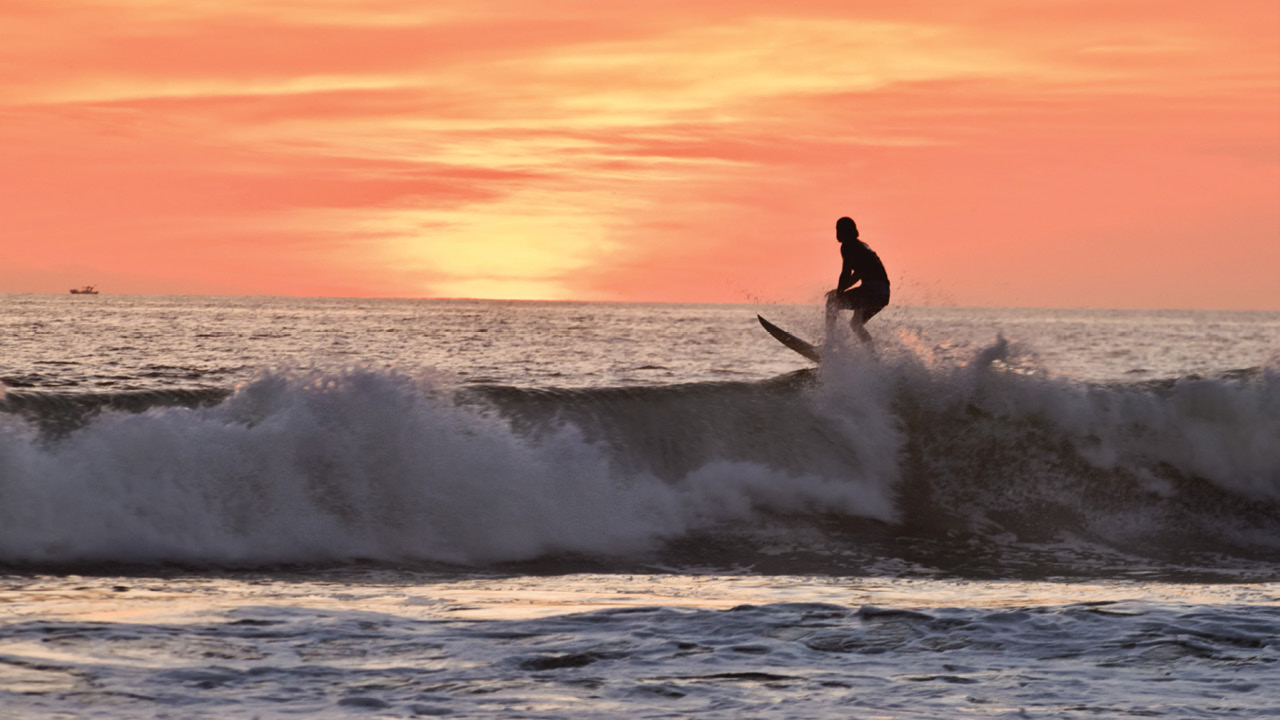
Guanacaste:
One of the most popular provinces in Costa Rica, it is called the tropical paradise. Located in the far northwest corner of Costa Rica, it is not only diverse, but exotic as well. It lies between two mountains with a beautiful sandy coast. Its hot and dry climate makes it a popular location for surfers trying to escape the cold winter months in the northern latitude.
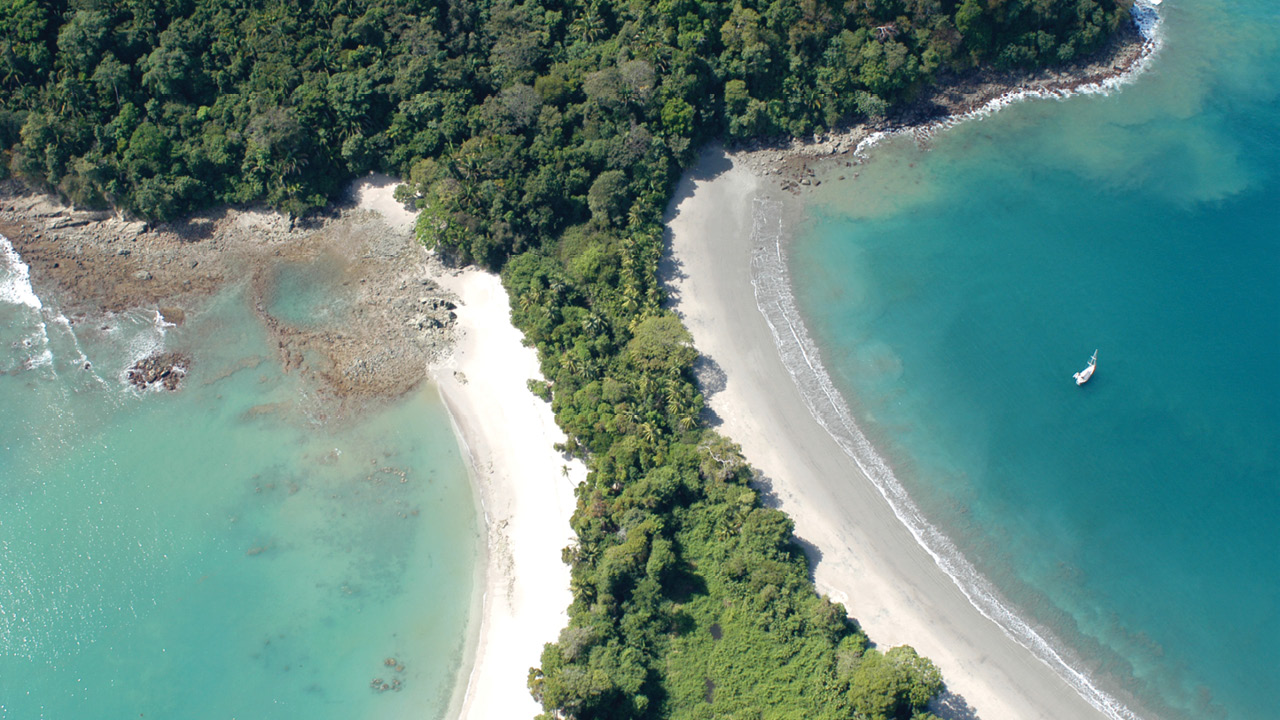
Manuel Antonio National Park:
This is the smallest of Costa Rica’s national parks, but it is considered one of its best. It is recognized for its vast biodiversity and is home to many of Costa Rica’s endangered species. It features lush tropical forests, lagoons, mangroves, and white sandy beaches. You’ll find well-marked trails that allow visitors to explore freely, but there they limit the amount of visitors because of the park’s popularity
Arenal Volcano:
Currently lying dormant, this massive, ancient volcano was the country’s most active volcano for over 40 years. Looming over the landscape, Arenal dominates the horizon in the rainforest. Around the volcano you can visit the wildlife refuge, take a sky trek, raft the river, or repel a waterfall.
Tortuguero National Park:
This Park is unique as it is better traveled by boat rather than by foot. There are boat tours or kayak and canoe rentals available for visitors. There is a trail that travels along the beach where you can observe turtle nesting in their natural habitat. Other than turtles you will also find a variety of animals here such as jaguars, macaws, tapirs, and over 300 species of birds, reptiles, and other mammals.
Destination Must-Do's
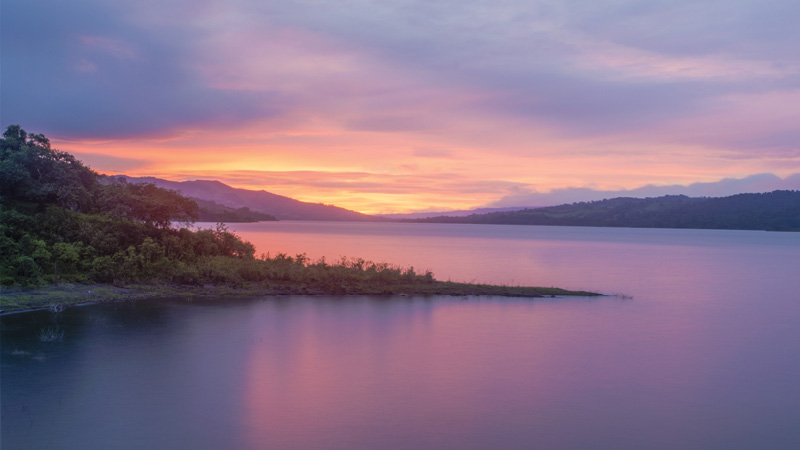
Lake Arenal Cruise:
This vast and pristine lake sits at the base of the majestic Arenal Volcano. It is considered the country’s most spectacular lake offering numerous water activities and of course a beautiful view. They have a multitude of cruises such as a volcano viewing and nature tour, romantic sunset cruise, fishing excursion, or bird watching cruises.
Tamarindo Beach:
Once a sleepy fishing village, it has grown into the area’s most developed and accessible tourist town. This sun-drenched setting consists of soft beige sand, tide pools, and some of the most stunning sunsets. The beach hosts several international surf competitions. Besides surfing, the main activities to do here are sport fishing, scuba diving, snorkeling, swimming, and horseback riding.
Monteverde Cloud Forest (Hanging Bridges):
The skywalk is a combination of suspension bridges and walking trails that bring you through the lush Montverde rainforest. There are six bridges and the trails are about a mile and a half long. Local guides lead you on the tour teaching you about ecology. The canopy of this tropical forest was widely unknown due to its towering height until these suspension bridges were created and opened up a whole new world to visitors.
Coffee Plantation:
Costa Rica is known for its impeccable coffee. The coffee bean is socially, economically and politically important to the country. The highland areas surrounding San Jose and the Tilaran Mountain range is where you will find many coffee plantations as they have the ideal climate for growing coffee. To fully understand the importance, take a plantation tour that gives you a chance to try the world’s freshest cup of coffee.
Expert Advice

With some free time in San Jose I would visit the popular Spirogyra Butterfly Garden, a small piece of paradise.
When packing, think in layers to account for temperature changes. I also highly recommend a raincoat or poncho and sturdy shoes you can get wet. It’s called a rainforest for a reason!

The local currency of Costa Rica is the Costa Rican Colon. US dollars are also widely accepted in most tourist areas, though colones may be required for some small purchases.
Featured Tours to Costa Rica
Costa Rica: A World of Nature featuring Tortuguero National Park, Arenal Volcano & Manuel Antonio National Park

Tropical Costa Rica

See Our Travelers On Tour
Brochures that feature our costa rica tours, find a travel agency.
Once you've found the perfect Collette tour, your local travel agent can assist you in making reservations. To find a preferred travel agent in your area, please enter your 5-digit zip code, then click Search.
Enter a Whole or Partial Zip Code
Please tell us everything, we want it all.
We really value your feedback, please be open an honest. Tell us where we can improve, how we can get better. This feedback is anonymous, but if you would like us to get in touch with you regarding an issue provide your email address as part of your feedback and we will get right back to you.
Talk to an Expert
Please fill out the form below, and a Collette Expert will contact you shortly.
- Yes, I'm a Travel Professional
- Yes, I am working with a Travel Professional
- I am traveling with 8 or more travelers
View or Download

Welcome to the official site of Costa Rica
Welcome to Costa Rica! This beautiful country is known for its stunning beaches, lush rainforests, and incredible wildlife. Whether you’re looking for adventure or relaxation, Costa Rica has something for everyone.
Some of the top attractions include Arenal Volcano, Manuel Antonio National Park, La Paz Waterfalls, Papagayo Peninsula, Tamarindo beach, Rio Celeste, Monteverde Cloud Forest and Corcovado National Park.
You can enjoy activities such as surfing, snorkeling, fishing, ziplining and hiking. Costa Rica is also home to many unique and diverse animal species such as sloths, monkeys, birds, turtles and more. We hope you enjoy your stay!

The Costa Rica Essentials
Essential Costa Rica is about promoting organic ingredients, unspoiled nature and authentic experiences.

Fill your calendar with the most wonderful natural and wildlife events.

Sun and Beaches
Costa Rica occupies a privileged spot with beaches in the Caribbean Sea and the Pacific Ocean.

Costa Rica is a land of volcanoes, rainforests and cloud forests, huge waterfalls and mighty rivers.

If stress is a part of your daily life, Costa Rica is the cure.

Costa Rica has a great place to experience nature’s wonders with your children; the country is a must for families!

Costa Rica is considered one of the most bio-diverse regions in the world.

Costa Rica in English, means rich coast. Every cruise ship visiting Costa Rica understands why.
Costa Rica has a wholesome environment and is an excellent place for families.

The richness of Costa Rica stems from the cultural diversity of its people.

Honeymoon & Weddings
Costa Rica is waiting for you to live this experience.

Where to Go?
Located on the central Pacific coast, the Puntarenas region extends from Punta Conejo south to Puerto Caldera to the mouth of the Bongo River. The region’s rich coastline overlooks small islands, inlets, beaches and beautiful natural wonders. The port town of Puntarenas serves as the center of the region and is home port to a ferry that carries visitors over to the tip of the Nicoya Peninsula.

South Pacific
The combination of breath-taking white-sand beaches, sweeping mountain views and an ideal tropical climate has made Guanacaste one of Costa Rica’s most popular regions. It boasts many of the country’s popular beaches, including Playa del Coco, Playa Flamingo, Playa Conchal and the Papagayo Peninsula. By day visitors can challenge themselves with a surf lesson, cool off under a waterfall at Rincón de la Vieja National Park, discover the craters of an active volcano with the same name and more before enjoying the active nightlife in Tamarindo.

Northern Plains
Recognized as home of Arenal Volcano National Park, which boasts 75% of Costa Rica’s bird population, the Northern Plains present endless activities for visitors. Excursions range from hiking and waterfall rappelling to canopying and exploring via a hanging bridge tour. Those looking for activities on the water will find that Lake Arenal is an ideal location for canoeing, fishing and kite surfing.

Central Valley
Those in search of cultural and natural attractions will find both in the Central Valley region. Home to the destination’s capital city, San José, many of Costa Rica’s most popular museums can be found in this urban setting including the Gold Museum, Jade Museum, National Museum and Children’s Museum, in addition to the architectural jewel of San José, the National Theatre.

Central Pacific
Beautiful beaches, wildlife sanctuaries, lagoons, rivers and waterfalls make the Central Pacific region an ideal destination for visitors in search of variety. The region stretches from the city of Puntarenas to Dominical de Osa and is made up of some of Costa Rica’s most visited areas including Monteverde, Quepos, Jacó, Bahía Ballena and Manuel Antonio. The region’s climate creates a unique landscape that transitions from tropical wet forest to tropical forest to tropical dry forest, providing the opportunity to observe a wide range of plants and animals.

The diverse coastline of the Northern Caribbean region attracts anglers, naturists and water enthusiasts in search of unique experiences. The North Caribbean region is famous for its interconnected canals and for Tortuguero National Park, where visitors have the opportunity to witness green turtles nesting. Limón City, the largest city on the country’s Caribbean coast, is perched in the center of the coast. The Southern Caribbean boasts some great beaches and picturesque parks, which are complemented by the area’s inviting culture.
Planning your Trip to Costa Rica
Suggested itineraries
Accommodations
Restaurants
Other Activities
Local Travel Agencies
Travel Tips

Costa Rica Blog
Latest news and articles about costa rica.

Costa Rica National Parks
Explore our world famous national parks.

Costa Rica's traveler tips
First hand information for your dream vacaction, #essentialcostarica, share your experience, .


- Help Centre
- 1-855-863-0357
Start Searching
- Packages
- All-Inclusive
- Cruises
- Rental Cars
- Hotels
* Indicates required fields
Rental Period:
pickUpDate - dropOffDate
Pick-Up: pickUpTime - Drop-Off: dropOffTime
Pick-Up Location:
pickUpAddress
pickUpAgencyName
pickUpAgencyAddress
Drop-Off Location:
Same as Pick-Up Location
dropOffAddress
dropOffAgencyName
dropOffAgencyAddress
Coupon Override
Please call.
For drivers under the age of 25, additional fees and/or restrictions may apply.
For information and assistance in completing your reservation, please call:
We're unable to find your location.
Alaska Cruise Tours:
A cruise tour is a voyage and land tour combination, with the land tour occurring before or after the voyage. Unless otherwise noted, optional services such as airfare, airport transfers, shore excursions, land tour excursions, etc. are not included and are available for an additional cost.
Vacation Packages
Adventure-lover's paradise, whether you seek an adventure, a family-friendly retreat, or a romantic getaway for two, you'll find it in costa rica..
Incredible wildlife, thick jungles, laid-back beaches, and magnificent volcanoes are just a few things that set Costa Rica apart. Spend the day on a scenic excursion, then return to your resort and relax on the beach as the sun dips below the horizon. Awaken refreshed and embark on another adventure. Costa Rica is waiting.
Costa Rica Hotels
Costco Member Reviews
The Costco Star Rating assigned to each hotel is only intended as a guideline. The rating is based on information that has been compiled by Costco Travel buyers and might differ from other references.
Property offers the ultimate in elegance and sophistication, with highly personalized service and hospitality.
Property offers upscale design and decor, superior dining venues, manicured grounds, and a high level of service and hospitality.
Property offers above-average accommodations, service, comfort, facilities and grounds.
Property offers basic accommodations, decor, facilities and grounds.
Featured Deals
Costa rica: planet hollywood package.
All-Inclusive Resort Digital Costco Shop Card Stars Kids Club
Costa Rica: Four Seasons Resort Costa Rica Package
Luxury Resort Digital Costco Shop Card Daily Resort Fee Included
Costa Rica: The Westin Reserva Conchal Package
All-Inclusive Resort US $ 50 Spa Credit Westin® Kids Club
Costa Rica: Secrets® Papagayo Package
All-Inclusive Resort Adults Only Digital Costco Shop Card
Costa Rica: Dreams® Las Mareas Package
All-Inclusive Resort Digital Costco Shop Card Explorer's Club for Kids
Costa Rica: W Costa Rica Package
Luxury Resort Daily Breakfast for Two, US $ 75 Spa Credit Daily Resort Fee Included
Costa Rica: Andaz Peninsula Papagayo Package
Luxury Resort Daily Breakfast Daily Resort Fee Included
Costa Rica: JW Marriott Guanacaste Package
Daily Breakfast for Two Food and Beverage Credit
More About Costa Rica
The laid-back people and their Pura Vida lifestyle add to the warm and inviting allure of Costa Rica. The country offers miles of beaches and fantastic national parks, allowing endless opportunities to take in the wildlife. Here, tourists can enjoy river rafting, surfing, and zip lining while hanging out with macaws, sea turtles, and sloths.
You will also find various accommodation options that fit your vacation desires. You can choose to stay at a hotel, an all-inclusive resort, or a boutique eco-lodge in the mountains. Around every corner is something to be discovered, creating memorable moments for guests. A vacation to Costa Rica is an experience just waiting to start.
Content provided by Costco Travel experts. Copyright © Costco Travel. All rights reserved.
Before You Go
- To make it easier to replace your passport if it’s lost or stolen, in addition to your passport, take a photocopy of your passport information page (keeping it separate from your actual passport).
- Carry only a limited amount of cash, just enough for gratuities and incidental purchases. Major credit cards are widely accepted and can be replaced if lost or stolen.
- Always lock your hotel room door (including patio and balcony door on any level of the building) and use the peephole before opening the door.
- Store your valuables (such as cash, credit cards and airline tickets) in the hotel’s in-room safe or front desk safety deposit box.
- If you must carry valuables on your person, do so in a pouch or money belt concealed under your clothing. Purses and backpacks can be easy targets for thieves.
- For complete and current safety and security information, including travelers' tips, public announcements, travel advisories and more, please visit the Government of Canada official website at https://travel.gc.ca.
- December through February: 26° to 27° (Winter)
- March through May: 28° to 28° (Spring)
- June through August: 27° to 27° (Summer)
- September through November: 27° to 26° (Autumn)
The Costco Traveler Blog
Why visit athens, city getaways, palm springs: where the sun goes to vacation, explore more travel, winter getaways.
Cool Off or Stay Warm
View Destinations
Exotic Voyages
Why Just Dream It? Cruise It!
Set Sail to Exciting Destinations
Rental Car Low Price Finder
Book Now, Pay at the Counter
Compare Up to Four Brands
Member reviews become available after at least 5 are received in order to provide you with an accurate picture of this travel product.
We are processing your payment.
Do not refresh your browser or exit this page.
- Find Your Trip
- Vacation Ideas
- Travel Tips
Customized Costa Rica Vacations, since 1999.

Custom Vacations to Costa Rica

10 Days in Costa Rica: The Perfect Costa Rica Itinerary
Experience the best of Central America’s pristine nature and endless adventure with this guide to planning the perfect 10-day itinerary in Costa Rica.
Costa Rica is well known as a land of eye-opening nature and rich biodiversity – a pathway laid ever since the government essentially banned logging nearly 30 years ago.
Travellers from near and far flock to national parks and nature reserves to see it for themselves. Sadly, many visitors cut their trip too short, and frankly, many guidebooks hardly mention some of the country’s most stunning locations (I’m looking at you, Corcovado National Park ).
I just returned from my third research trip to Costa Rica and discovered even more incredible rainforest hikes, secluded beaches, and rare wildlife sightings. Flying, driving and taking buses through the country, I dialled in on how to maximise your time here for the best possible trip.
Chatting with locals, listening intently to tour guides and doing my best to uncover hidden gems, I have created IMHO the perfect 10-day Costa Rica itinerary.
Start out with learning about the history of this (mostly) military-free country in the capital before setting off to the incredible jungles, forests, and coasts where nature is in top form. I’ll guide you through adventures in Arenal , how to make the most of a visit to Manuel Antonio and take you to the best snorkelling spot you’ve never heard of if you have a little extra time.
Ready to experience pura vida for yourself? Embark on this 10-day Costa Rica itinerary.
Costa Rica Itinerary
Costa rica itinerary day 1: san josé .
San José is the capital city of Costa Rica and is full of important historical and cultural landmarks from pre-Columbian times to the present.
The bustling neighbourhoods have parks and green spaces, offering a place to chill out and get a sense of local life before heading out for the national parks and jungles. Expect colonial architecture, Costa Rican restaurants, and bustling plazas and you won’t be disappointed.
Things to Do in San José
National museum of costa rica.

Located in the Bellavista Military Barracks, the bright yellow fortress serves as a reminder that Costa Rica hasn’t had a military since the end of the civil war in the mid-20th century.
Walking around outside, you’ll find pre-Columbian artefacts and a beautiful butterfly garden. Inside, you’ll find a dynamic collection displaying indigenous artwork, videos explaining the country’s political history, and a first-hand look at the prison cells where inmates lived and slept.
It’s truly a time capsule, and if you look closely you can see graffiti from prisoners and bullet holes on the walls from the war.
Book your tickets in advance here .
Dinner at Restaurante Silvestre
Get yourself ready for a 10-day itinerary by eating at (arguably) the best restaurant in Costa Rica’s capital city. Restaurante Silvestre by Santiago Fernández Benedetto offers exceptional modern cuisine in a dramatic setting, located in an art deco mansion.
The restaurant has been open for less than a decade, located amongst the colonial architecture and trendy storefronts in Barrio Amón.
Make reservations ahead of time (the outdoor space is lovely) and try the chef’s tasting menu, where you can try 7 courses of beautifully prepared local produce, seafood, and meat dishes for $105 (¢54 000). The menu changes often, but one constant is the laid-back setting, colourful platings, and excellent wine list.
Getting to San José
San José is the most common location to begin and end a Costa Rica itinerary, and worked out beautifully for me on my last visit.
Fly into Juan Santamaria International Airport – SJO and hire a car for your trip or take a private transfer to your hotel.
Suggested Stay
Grano de oro hotel .
Grano de Oro is a beautiful 4-star hotel in the heart of San José near the best museums and parks. Dark hardwood panels and antique furniture contrast with lush plant life right outside the windows, giving it an upscale, old-school feel.
The hotel includes free parking and breakfast on-site, making it a perfect location to kick off your Costa Rica road trip.
Check Prices and Availability for Grano de Oro Alternatively, Check All Accommodation in San José
Costa Rica Itinerary Day 2-4: Arenal & La Fortuna
OK, it’s time to hit the road. We’re getting your incredible Costa Rica trip itinerary moving with a 3-night trip to Arenal and La Fortuna to get up close and personal with the 5,436-foot volcano and its beautiful surrounds.
Arenal is an area prime for adventure activities like whitewater rafting and lush jungle hikes. It’s also perfect for relaxing, and I quickly fell in love with the volcanic hot springs around the area.
Here’s a look at a few things you need to prioritise during your days in Arenal and La Fortuna.
Things to Do in Arenal & La Fortuna
Hike arenal volcano.
Ok, you technically can’t hike to the top, but the two trails at Arenal 1968 Volcano Trails offer scenic views of the mountain and Arenal Lake from up close. You can even see the lava tracks dating back to the 1968 eruption.
This 2.9-mile hike is pretty easy, only gaining around 500 feet of elevation throughout. That said, there is some climbing involved, and I broke a sweat pretty quickly as temperatures are frequently over 26.6°C (80°F).
Photograph Lake Arenal

When you’re done hiking, take Ruta 936 South for about 30 minutes. Here, you’ll find Mirador Lake Arenal.
This is one of the best vantage points in the park, so be sure to bring your camera and a good lens to Costa Rica’s largest lake.
You’ll capture stunning views of nearby Arenal Volcano from the easternmost section of the lake.
Walk Across the Hanging Bridges

Visiting the Místico Arenal Hanging Bridges is a must when you visit Arenal. The private nature park northwest of Arenal Volcano is home to 15 bridges across 3 kilometres of lush jungle forests.
You can go on a guided tour or on your own, which fits nicely into a 3-day visit to Arenal. If you choose the latter, you can really take your time and explore every corner of the park.
Místico has a lot to look at inside and out. You can see Lake Arenal, Arenal Volcano, and it features both highland and lowland rainforests. If you’re scared of heights, you may not want to look down, as the tallest suspension bridge reaches 45 metres (148 feet).
Swim at Fortuna Waterfall
Fortuna Waterfall is a true highlight when visiting Arenal and a beautiful way to spend the second day of your trip to Fortuna.
My first piece of advice is to start your day early and get to the office before 7am After paying $18 for a ticket, you can take the hike into the park.
The hike is only about 45 minutes round trip, but you’ll want plenty of time in the water. Here, you can splash around the natural pool while looking up at the massive 76-metre (246-foot) fall above.
Swim in the waterfall and soak in the hot springs on this guided tour .
Chill Out in the Hot Springs
Baldi Hot Springs is one of my favourite places in Arenal. Why? You can choose from 25 different volcanic pools to soak your weary bones after a couple of days of hiking around Arenal.
It costs $30 per person and is open from 9 am to 10 pm, giving you all the time you need to relax and soak in the mineral-rich waters in style.
The drive from the waterfall is only about 10 minutes, providing enough time to take a slight detour back to your hotel if you want to freshen up.
Whitewater Rafting on Balsa River
Meet in town on your final day in La Fortuna before embarking on a day of white water rafting down the Balsa River.
Whether you’re a beginner or have a few trips under your belt, the class II and III rapids are sure to liven up your day. I didn’t get a chance to go on my most recent visit, but I’ve heard that you splash past a waterfall and cruise down 10 kilometres (6 miles) on a total thrill ride.
Paddle through the jungle on a whitewater raft .
Getting from San José to Arenal & La Fortuna
From San José you’ll want to hire a car or take a bus to La Fortuna, which will be your home base when visiting Arenal.
On my most recent trip I rented a car, which cut the journey down to 3 hours. But your itinerary allows you to take a private or public bus and still have plenty of time to see the top landmarks.
If you don’t drive,I suggest booking with Interbus , which offers smaller shuttles for only $65 per person. Bonus points for AC.
The Royal Corin Thermal Water Spa & Resort
This adults-only luxury resort offers stylish rooms and suites with ridiculously close views of Arenal Volcano.
I loved that it has free parking (since we drove to La Fortuna), and the outdoor thermal pool is an authentic touch that is perfect for relaxing between hikes and adventures.
Check Rates and Availability for The Royal Corin Thermal Water Spa & Resort
Alternatively, Check All Accommodation in La Fortuna on Booking.com
Costa Rica Itinerary Day 5-6: Monteverde

Now it’s time to discover one of Costa Rica’s hidden gems, Monteverde. Explore an endless stretch of misty rainforest and wildlife along the continental divide over 4,5000 feet above the Pacific Sea.
Located south of Lake Arenal in the Cordillera de Tilarán Mountains, it offers incredible opportunities to see wildlife and plantlife up close. It’s popular for bird watching, and jungle hikes may reveal rare animals like howler monkeys and jaguars.
Things to Do in Monteverde
Walk above the cloud forest at monteverde cloud forest biological preserve.
The main event when you visit Monteverde is exploring the 10,500 hectares of Monteverde Cloud Forest Biological Preserve. It’s well-known for its suspension bridges, with 8 of them leading you through incredible wildlife trails above ground.
Since 1972, scientists and a group of Quakers have helped protect this land to learn more about the world’s biggest cloud forest.
You can spend a half day walking the park, which consists of around a half dozen different trails that take 5-6 hours to complete.
Walk High Above the Rainforest on a Guided Stroll Over the Famous Suspension Bridge
Monteverde Orchid Garden
On your second day in Monteverde, visit the Monteverde Orchid Garden in the nearby town of Santa Elena.
The park is home to one of the world’s largest orchid collections, with over 450 varieties in total. Tickets are $17 and allow you to explore the mesmerising flowers in their native Costa Rica.
The founder, “Papo,” began collecting orchids that had fallen on the ground in the forests and slowly brought them to the park. Now, over 100 are in bloom each day in the indoor and outdoor gardens.
Reserve your time slot ahead by booking here.
Birdwatching at Curi-Cancha Reserve
If you want to spot the most elusive birds in Monteverde, Curi-Cancha Reserve is the perfect place to do it. 96 hectares of vibrant virgin and secondary forests are home to hundreds of birds, along with monkeys, wildcats, and sloths.
You can visit on your own for just $20 (₡10,225) or book a guided tour. My advice? I found it’s much easier to spot birds in the jungles when you have someone familiar with their habits and calls guiding you (and that stands for all the nature-led activities in Costa Rica).
You can find rare birds like the three-wattled bellbird or the stunning resplendent quetzal with its bright green and red feathers.
Find Rare Birds With an Expert Guide in Curi-Cancha Reserve
Wildlife Viewing At Night
Even though you’re walking the same paths you did during the day, I urge you to add this to your itinerary when you visit Montverde.
Taking a nighttime tour gets you up close and personal with the abundant wildlife when many of the nocturnal creatures come out. You may see two-toed sloths, armadillos, frogs, and snakes staying up past your bedtime when you visit Monteverde at night.
See the Best of Monteverde After Dark on a Nighttime Tour
Getting from Arenal to Monteverde
You can drive or take a shuttle from La Fortuna to Arenal on your Costa Rica itinerary.
I drove and it took about 3 hours, travelling up and around Lake Arenal. Because Children’s Eternal Rainforest separates the location, you take Ruta 142 northwest before dropping back down on Ruta 145.
You can also book a combination van and boat tour , which allows you to actually float across Arenal Lake for only $39 door-to-door. Winner.
Hotel Belmar
This luxury property features upscale accommodations with beautiful hardwood walls, floors, and furniture to match.
Room rates include breakfast and parking on-site, making it a great jumping-off point for exploring Monteverde.
Check Rates and Availability for Hotel Belmar on Booking.com
Alternatively, Check All Accommodation in Monteverde on Booking.com
Costa Rica Itinerary Day 7–9: Manuel Antonio

On my most recent research trip to Costa Rica, I finally got to explore Manuel Antonio .
Sure, you’ve heard of the national park (if you haven’t, get ready to experience one of the most biodiverse areas in the country). But while admittedly a bit confusing, Manuel Antonio is also the name of the nearby town.
It’s full of beaches, boutique hotels, and charming indoor/outdoor restaurants overlooking the jungles and ocean.
Grab your beach blanket, slather on the sunscreen (and bug spray) and adventure to Manuel Antonio for the next leg of your Costa Rica itinerary.

Things to Do in Manuel Antonio
Chill out at playa espadilla.

The best way to get to know Manuel Antonio is to just walk around and check out the airy restaurants and splendid beaches between the jungle and coasts.
Playa Espadilla is a perfect example of everything Manuel Antonio offers, boasting some of the best beaches in Central America. Whether you’re keen to lounge on a chair with an umbrella ($25 each) or want to try your luck at surf lessons, there are lots of amenities around to make the most of the beach.
Going later in the day allows you to stay for sunset. No joke, this is easily one of the most gorgeous sunsets I’ve seen anywhere in the world. Eat your heart out, Oia .
Snorkel at Playa Biesanz
Playa Biesanz is one of those rare treats that’s a hidden gem hiding in plain sight. Located just up the road from the much larger Playa Espadilla, this is the perfect way to start your first day in Manuel Antonio.
If you came to snorkel, this is your place. You can rent gear on the beach or free dive to see colourful fish and sea turtles below.
Manuel Antonio National Park
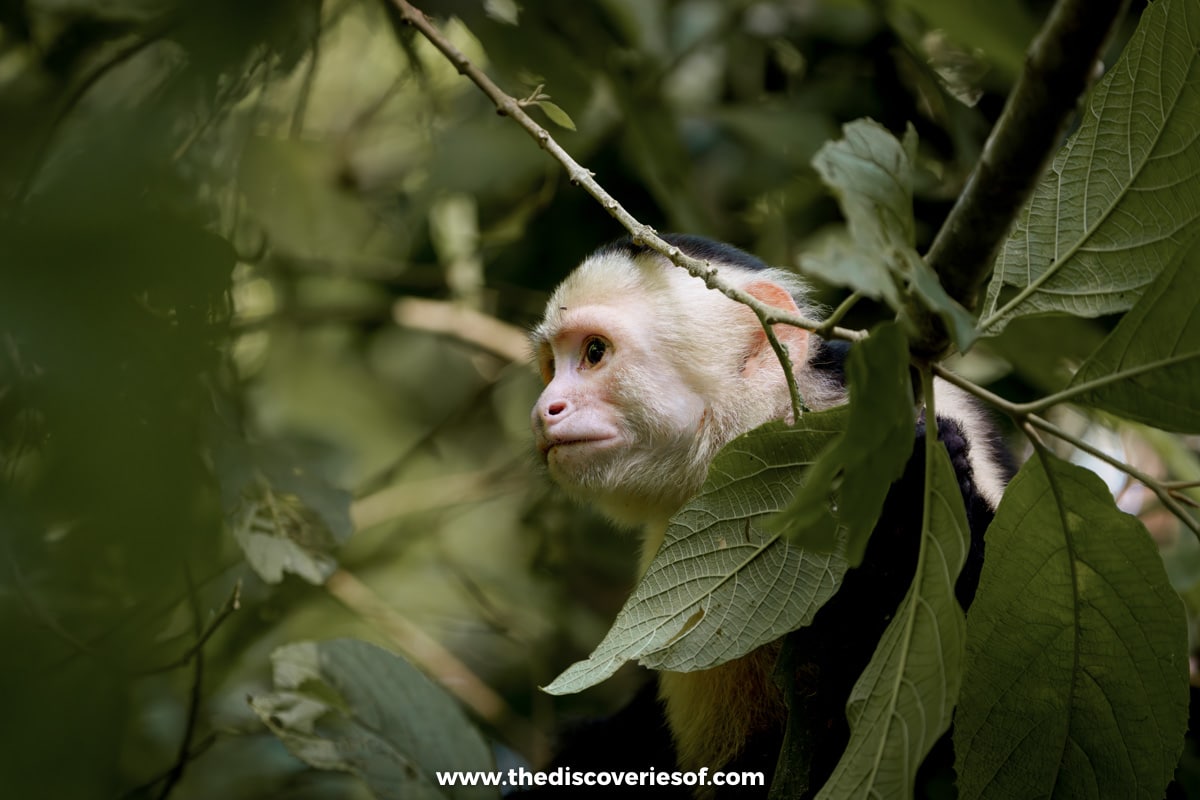
When you visit Manuel Antonio, you’ll want to dedicate the better part of your second day to exploring the national park.
Start your day at the gates at 7 am for the best chance at seeing the two-toed sloths, 4 types of monkeys, and hundreds of birds when they’re at their most active.
You don’t need a guide to visit, but borrowing their telescope and picking their brains for fun facts is well worth the extra money. It’s around $20 for a standard ticket and $70 with a guide, but that price includes admission, transportation, and their knowledge of the park.
After the tour, you can break off on your own, which is a perfect opportunity to laze at the popular Manuel Antonio Beach or (pro tip) walk over to the less crowded Playa Espadilla Sur.
Be sure to book your tickets way in advance. It’s a busy park (to say the least), so you’ll want to secure your timed entry to ensure you hit the trail before larger crowds arrive and tickets frequently sell out days in advance during high season.
Dinner at Food Truck En Todos
When you’ve had enough fun in the sun, do stick around for what was one of my favourite discoveries near the park.
A bright yellow school bus with a sign that reads “Magic Bus,” En Todos serves up no-nonsense cuisine in an al fresco setting by Manuel Antonio Beach.
Order a set of tacos for around $10-$12 (₡5,000-₡6,0000), have a beer or two, and just chill out. That’s what you’re here to do, isn’t it?
Getting There
Walk up the beach toward Espadilla Beach, and you’ll find it about halfway.
Rainmaker Conservation Park

On your last day in Manuel Antonio, take a quick day trip to Rainmaker Conservation Park to discover what I consider to be one of Costa Rica’s best-kept secrets.
When you arrive at the private nature reserve, you’ll pay $22 to enter. Once inside, prepare to be blown away.
1,500 acres of lush jungle forests is home to hundreds of birds, butterflies, and reptiles. I saw parrots, toucans, and loads of other wildlife in the time I was there. But what makes it really special is that much of your hike is along a canopy walkway, where you are viewing nature from the top of the rainforest trees.
Bring your camera and pack your swim trunks for the natural pools that form along the waterfalls.
Take Ruta 34 northeast of town, about 40 minutes.
Dinner at Cafe Agua Azul
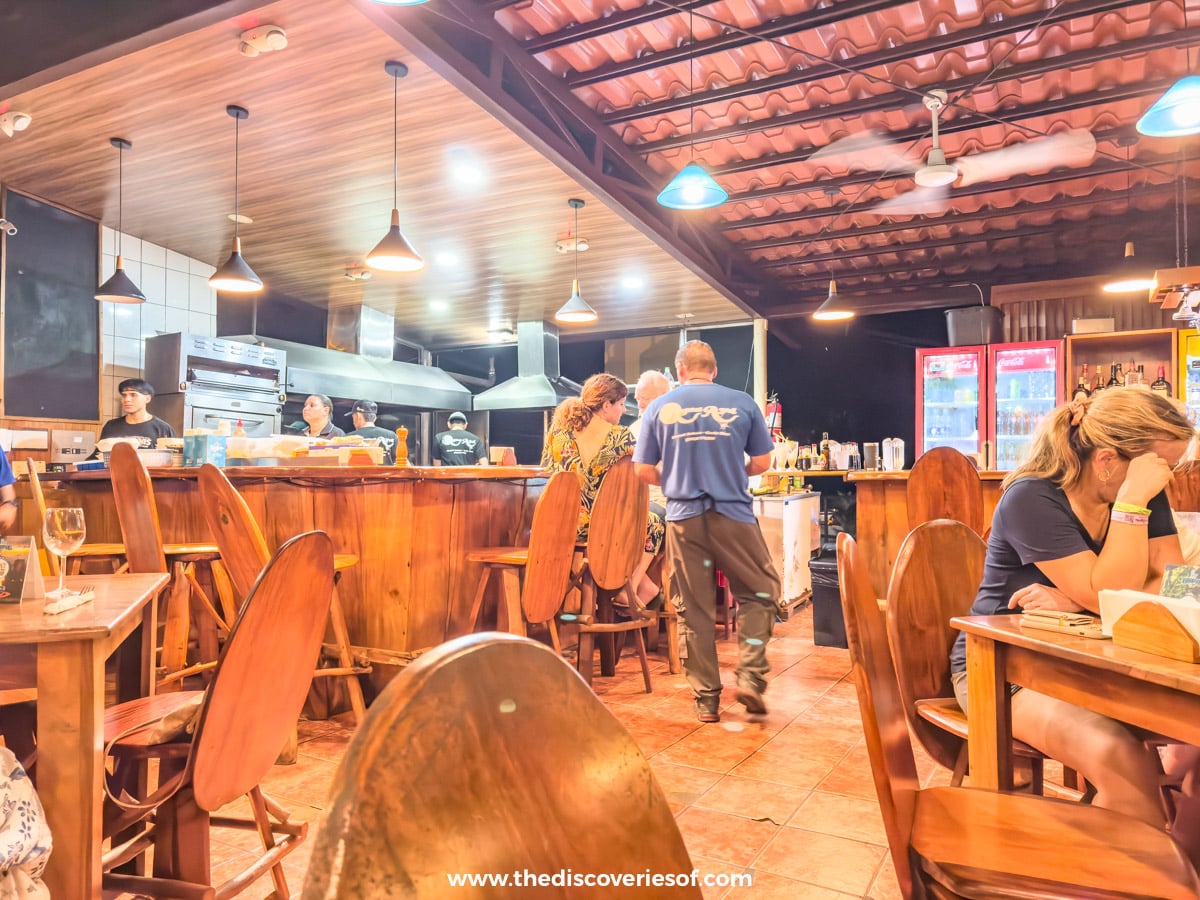
Quepos is the main village that’s essentially an extension of greater Manuel Antonio. There are lots of restaurants to choose from, but trust me, you should head to Cafe Agua Azul .
The stylish restaurant has plenty of space, but you want to reserve a seat on the patio if you can.
I loved everything we tried at the restaurant, with plenty of delicious seafood and a plantain stack (think freshly fried and topped with guac) that is a must-order.
Cocktails are delicious, and I had one of the best margaritas I’ve had in a long time.
Getting to Manuel Antonio
The easiest way to Manuel Antonio is to drive from Monteverde. If you don’t hire a car, you can take a private shuttle with AC (highly recommended) for around $75 (₡38,350) per person.
Suggested Stay

I stayed at La Vela Boutique Hotel and think it’s really a hidden gem.
Tucked away just steps from the national park entrance, you’ll enjoy cosy beds, private terraces, and a great breakfast with excellent pancakes. It’s also close to the main beach, Playa Manuel Antonio, so bring your swimsuit.
Check Rates and Availability for La Vela Boutique Hotel on Booking.com
Alternatively, Check All Accommodation in Manuel Antonio on Booking.com
Costa Rica Itinerary Day 10: San José
After a full itinerary checking out Costa Rica’s best national parks, wild jungles, and pristine beaches, it’s time to head back to San José.
Spend a few hours scoping out colonial architecture and visiting a bustling marketplace before heading to the airport.
Things to Do in San José
San josé central market.
San José Central Market is a great place to shop for souvenirs to take home on your last day in Costa Rica. It also offers a peek into a market that’s nearly 150 years old and has been a focal point of local culture and cuisine.
Located just a couple of blocks from the fountains and pavilion at Parque Central de San José, the long indoor market has around 200 vendors selling anything from snacks to souvenirs.
Arrive hungry and try gallo pinto (a seasoned dish of rice and beans) and some fresh fruit to start the day. Then, browse for clothing and trinkets before trying a scoop of ice cream at the legendary La Sorbetera de Lolo Mora. Trust me.
The market opens a bit later in the day than many, opening at 11 a.m. most days of the week (10 a.m. on Sundays).
Pre-Columbian Gold Museum
Browse through hundreds of gold artefacts at this subterranean museum below Plaza de la Cultura.
The Pre-Columbian Gold Museum has a beautiful collection of jewellery and artwork, most of which are made with ancient gold. Look closely at the details of each piece, which often have people or animals etched into the precious metal.
You can also see replicas of an indigenous village and royal grave, offering a glimpse into Costa Rica’s ancient past.
National Theater of Costa Rica
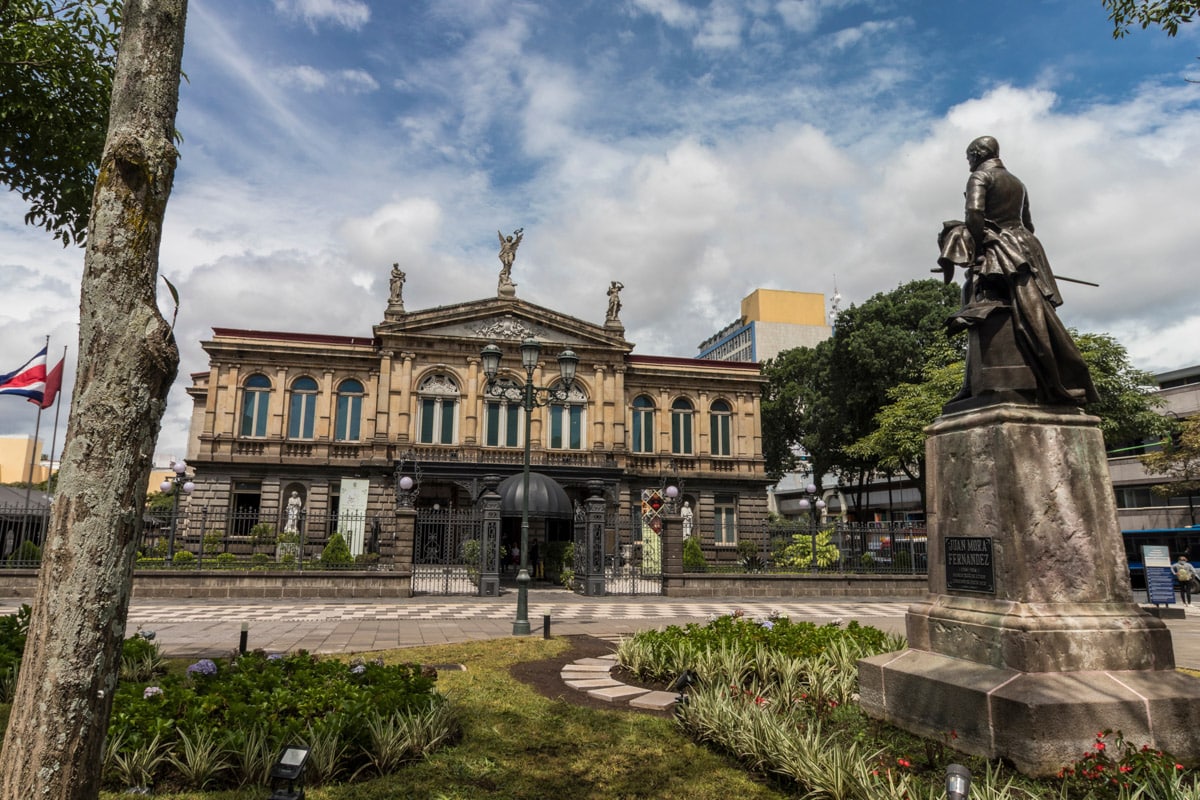
Wrap up your trip to Costa Rica by walking over to the National Theater of Costa Rica, which is also in the Plaza de la Cultura. The Neoclassical building looks much older than it is, with its imposing facade and ornate theatre inside.
Walk around and see the ridiculously ornate decor with gold-trimmed walls, extravagant chandeliers, and murals covering the ceiling.
If you have time to see a show, I highly recommend booking a ticket to sit in the beautiful seats for a concert or ballet performance.
Getting to San José from Manuel Antonio
Fly from Quepos (XQP) to Juan Santamaría International Airport in San José (SJO) on Sansa Airlines . A round-trip ticket ranges from $200 to $250 (₡102,850 to ₡128,560) and takes about 30 minutes each way.
If you’d rather drive, it takes about 3.5 hours from Manuel Antonio back to San José.
After a week of adventure, a hot shower, soundproofed room, and breakfast buffet is exactly what you need. Gran Hotel Costa Rica all the above, just steps from San Jose’s best museums and attractions.
Check Prices and Availability for Gran Hotel Costa Rica on Booking.com
Alternatively, Check All Accommodation in San José
Have More Time? Add These To A 14-Day Costa Rica Itinerary
Planning a Costa Rica itinerary for 14 days? Here are two incredible additions to round out your trip.
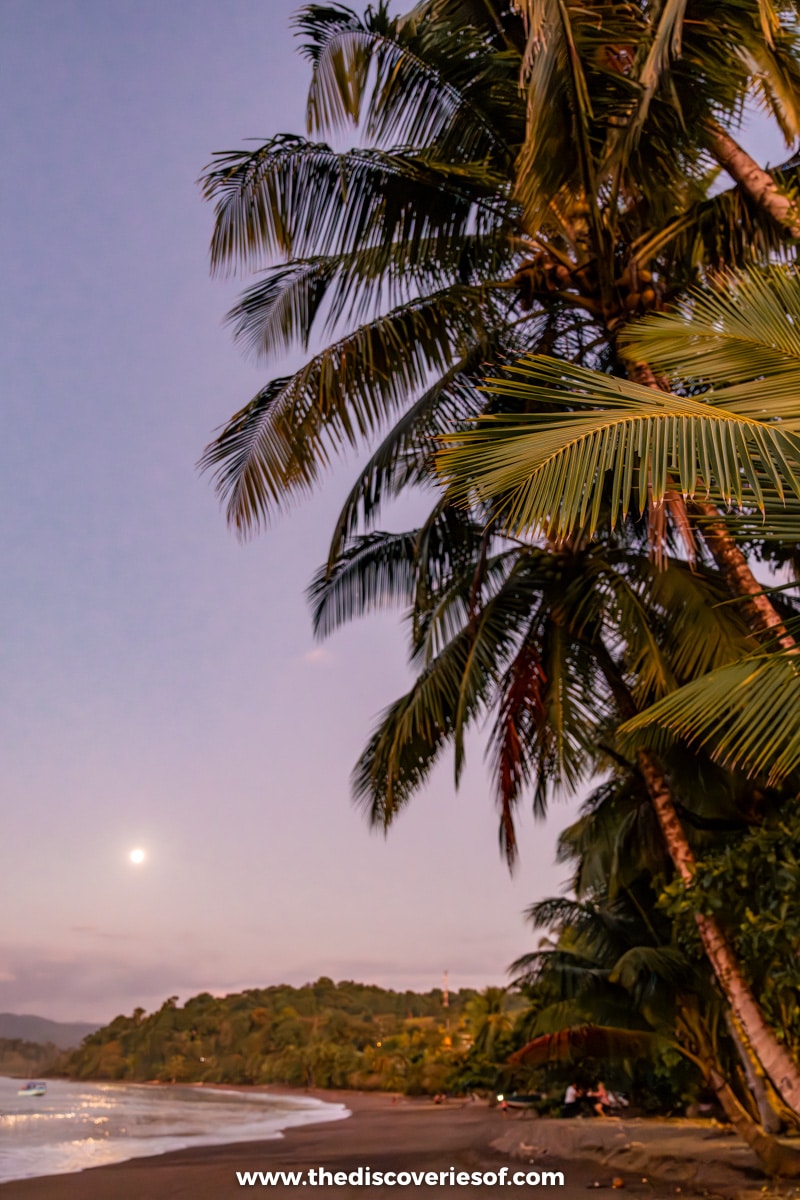
Drake Bay is best known as the launching point for Corcovado (more of that below), but it’s also a charming destination in its own right.
Pull up from the dusty dirt roads to the colourful houses perched on the rocky jungle shores of the Pacific Ocean and you’ll immediately feel Pura Vida all around you. Drake Bay is not only a great place to see Corcovado, but you can experience a few of the Osa Peninsula’s hidden gems.
If you only have time for one activity besides lazing on the beach or enjoying immaculate sunsets from bars and restaurants along Playa Colorada, I have just the place.
Take a guided tour to Isla del Cano Biological Reserve and see why I can say without a doubt in my mind it’s the best snorkelling destination I’ve ever been to. No sooner did we plop off the boat and into the water, shoals of fish surrounded us, turtles (so many turtles!), and even the occasional shark.
Drake Bay also offers one of the best hidden beach hikes anywhere in the world. Take the six-hour out-and-back hike to Playa San Josecito to see colourful birds, lively monkeys, and crystal clear waters at the white-sand beach.
Corcovado National Park
Corcovado National Park is a bucket-list destination along the Osa Peninsula in southwestern Costa Rica. It’s teeming with wildlife and accounts for a staggering 2.5% of the world’s biodiversity.
If you have an extra couple of days, don’t miss a chance to visit the national park. You’ll need to do a lot of planning ahead, however, as the national park caps the visitor limit to around 300 per day, and you can only enter the park on a guided tour from one of the six ranger stations.
From Drake Bay, your best bet is to schedule an overnight or day trip with Sukia Travel . They offer a chance to see the park with local guides who specialise in sustainable, eco-conscious tours.
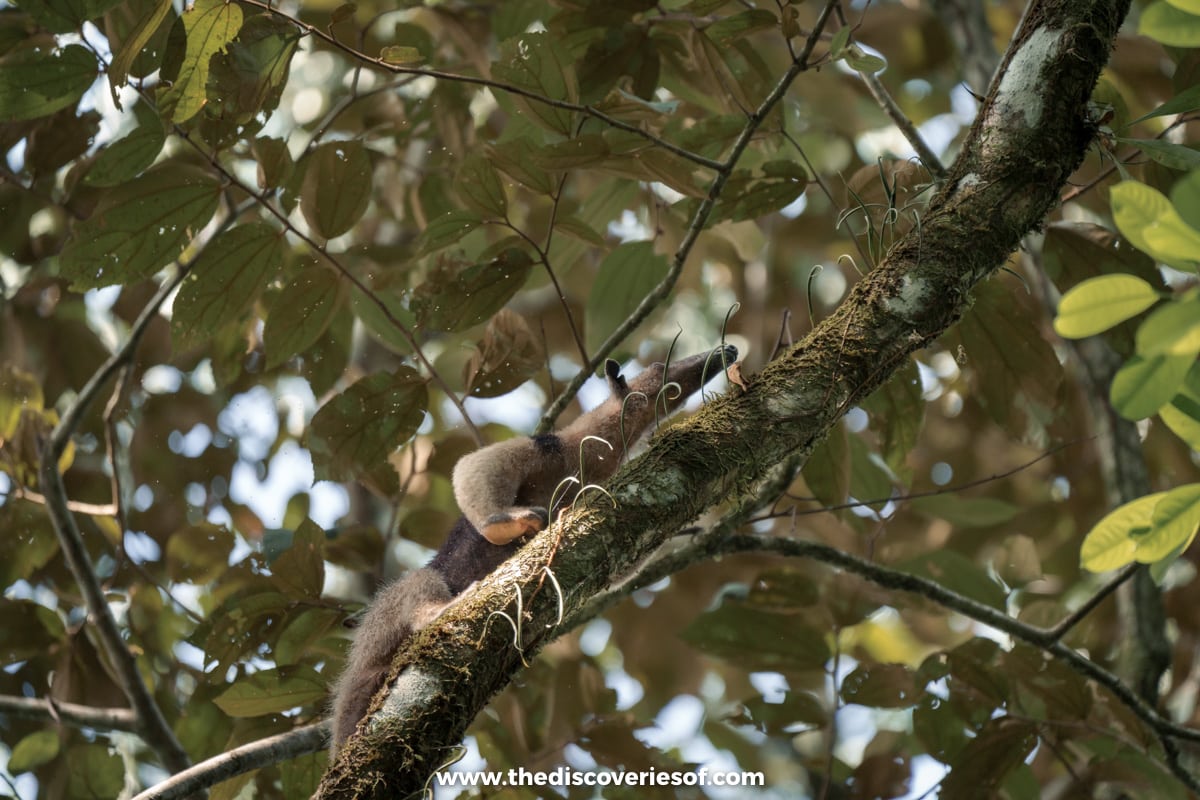
The amount of wildlife you’ll see from the first few minutes is jaw-dropping. I saw Baird’s Tapir, two-toed sloths, toucans, and peccaries (all on the first day).
I went on a three-night tour, during which we hiked around Sirena Station and from San Pedrillo to Los Planes. It was epic and gave us a chance to see some of the park’s more remote sections, like Los Planes.
But if you only have the time for a day trip, it’s still totally worth doing. You can schedule a one-day visit to Sirena Station, where you’ll get a chance to experience many of the most sought-after wildlife sightings and return to Drake Bay on the same day.
Why You Really Should Visit Corcovado National Park
Handy Tips for Planning Your 10 Days in Costa Rica
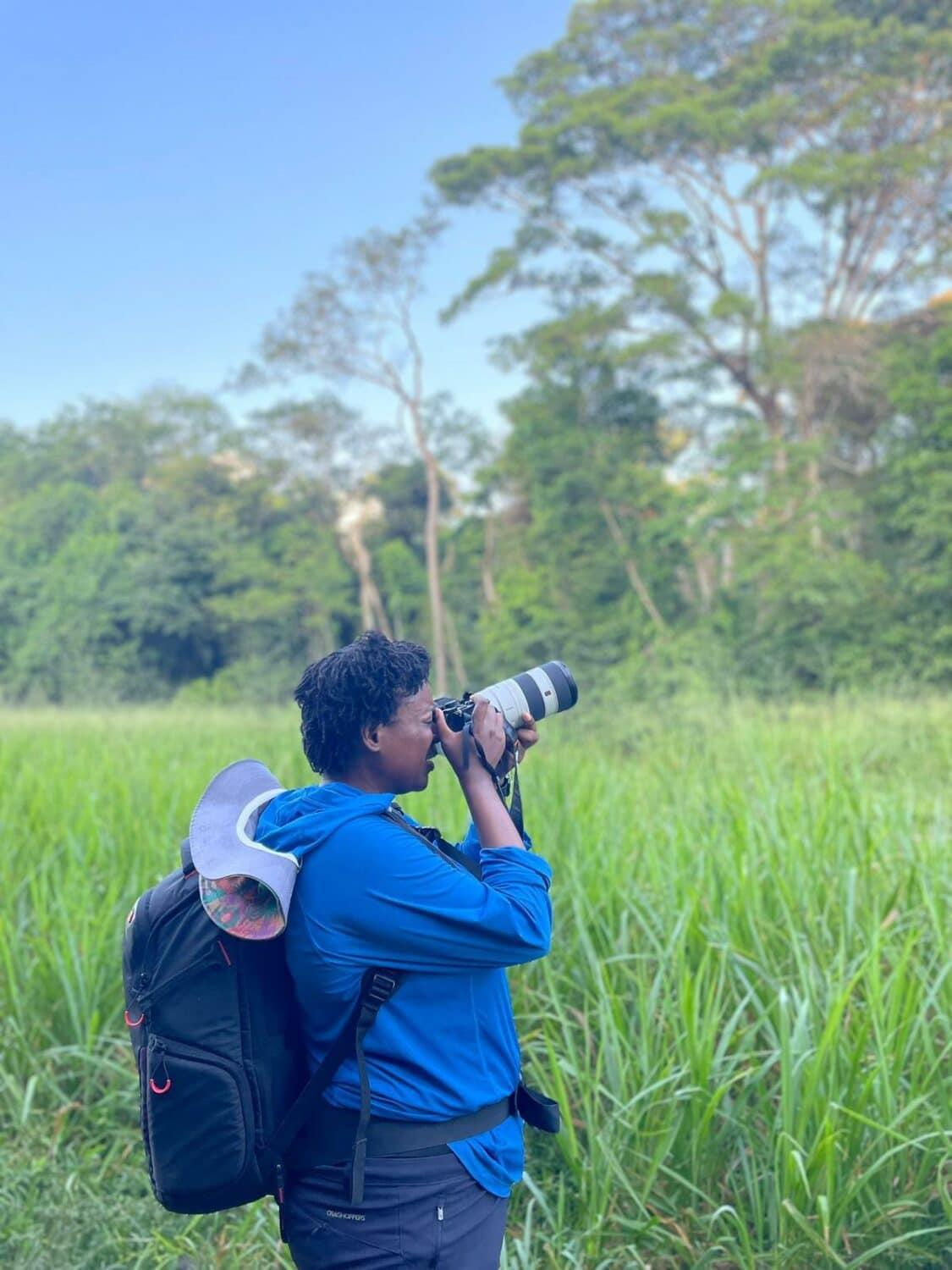
Top Tips
- Add travel insurance before your visit for any unexpected medical bills or delays.
- Take caution walking around at night. Pickpocketing and robberies can occur, especially if you walk away from touristy areas.
- Make your hotel reservation ahead of time especially in the dry season(December to April). Popular national parks, landmarks, and hotels fill up fast.
- When you hike through national parks and private nature reserves, be aware of your surroundings. Venomous snakes, Africanized bees, and poison dart frogs all live in the jungles so stay on the paths and don’t divert from the trail.
- Costa Rica beaches are beautiful, but some dangers do lurk in the waters. Wear a rashguard to prevent jellyfish stings, and always look out for sharks and crocs when the tides come into lagoons.
- Bring a strong bug spray with DEET and anti-insect sleepwear for the many bugs you’ll encounter.
- Get a 4×4 vehicle if possible and try to avoid driving at night.
- Carry cash, especially when you visit remote areas. Always have both USD and Costa Rican Colones on you as some places prefer one or the other.
What to Pack
Visiting Costa Rica means you’re going to spend a lot of time outside. Prepare for days hiking in the jungle or swimming at the beach, and pack the following clothing and supplies.
- Travel backpack with rain cover
- Small daypack (choose one that fits in your main backpack)
- Swimwear
- Quick dry towel
- Sunglasses (during the dry season)
- Lightweight clothing for travel, hiking, and daily use
- Waterproof jacket
- Anti-insect sleepwear
- Comfortable trainers for airports, cities, and towns
- Water shoes or sandals (transfer can get your feet wet)
- Water-resistant hiking boots
- Hiking socks
- Hiking poles (for Corcovado beyond Sirena Station)
- Reusable Water bottle – I recommend a two-litre water bladder that can fit inside your daypack
- Small first aid kit with anti-itch cream and antibiotics
- Basic toiletries and feminine hygiene products
- Camera with a zoom lens and extra memory
- Electrical chargers and a universal travel adaptor
- Binoculars (for national parks)
- Noise-cancelling headphones or earplugs
- Head torch (for hiking early and late in the day)
- Padlock for lockers at national parks
Best Time to Visit
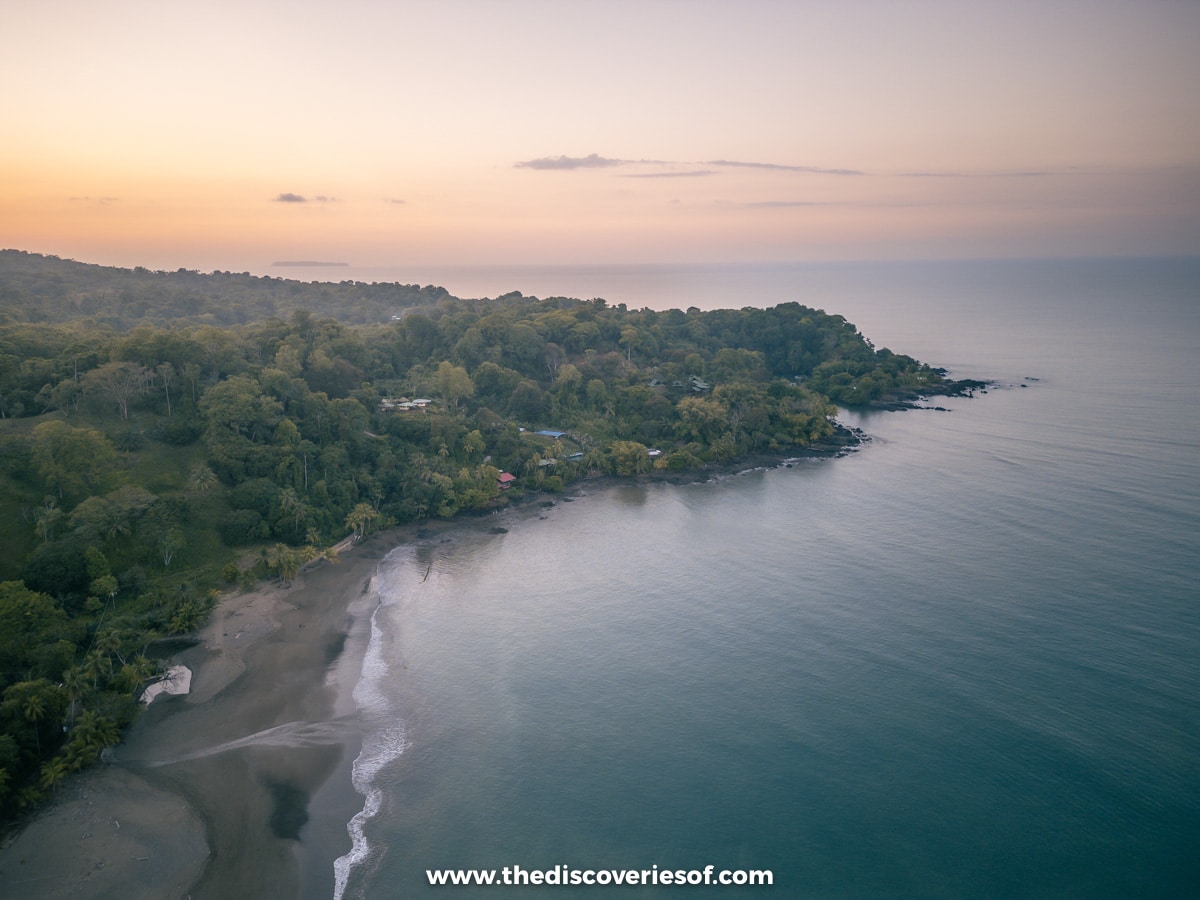
Visiting Costa Rica is best from December to April. This is the dry season, so you’re going to have the best luck on this itinerary, visiting the beaches and national parks.
If you want to save a little money, you can visit in November or May and get mostly good weather and better hotel rates.
Getting Around
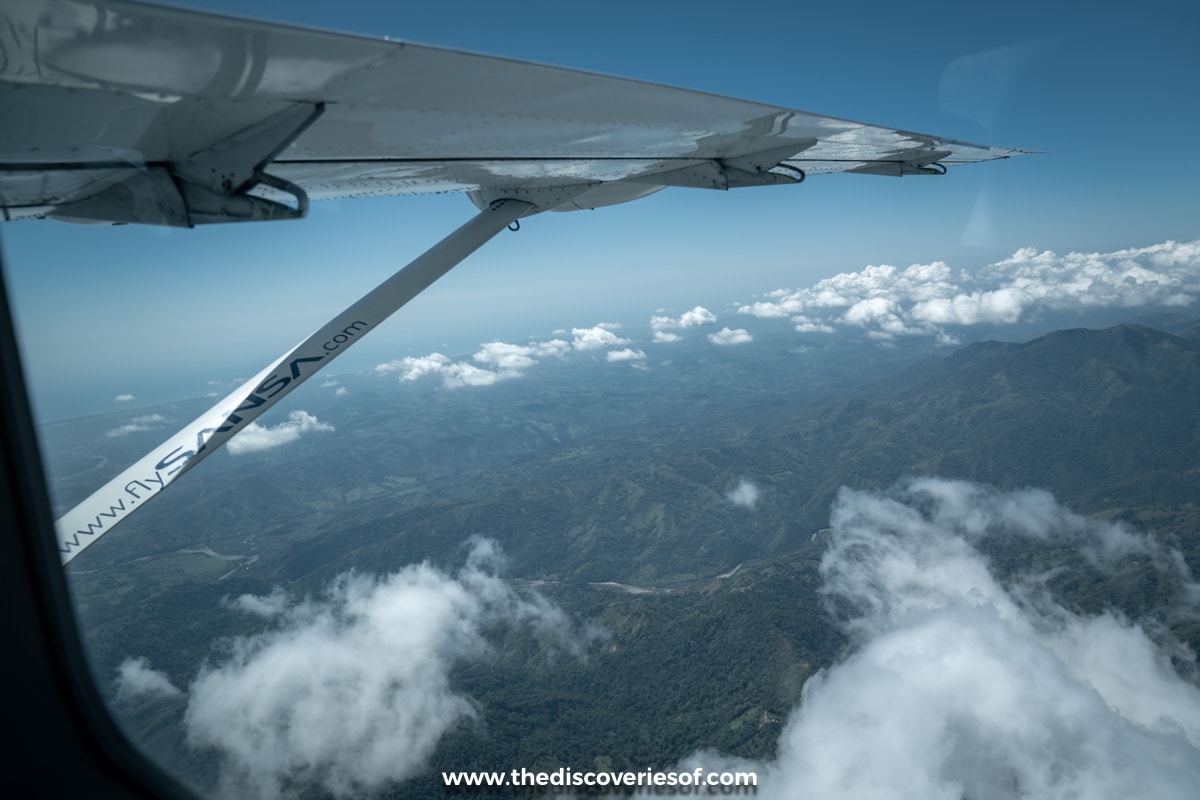
Getting around Costa Rica takes more planning than many other places I’ve been. The roads and public transportation aren’t always reliable, and you need to book transportation into national parks and remote areas in advance to avoid them selling out.
You can reach most major tourist destinations by plane, bus, or shuttle. Sansa Airlines offers reliable flights at affordable prices, and Interbus is a popular tourist shuttle, or you can rely on the local bus system (which is cheaper but takes longer to get around).
I suggest hiring a car in San José and driving to the destinations on this itinerary. If you plan to add Corcovado, you can fly from San José to Drake Bay and take a water taxi to the national park.
Costa Rica Itinerary Map
Read More Costa Rica Guides
- Incredible Things to do in Costa Rica
- The Insider’s Guide to Visiting Manuel Antonio
- Why You Need to Visit Corcovado National Park
- Arenal & La Fortuna Travel Guide
Read My Costa Rica Travel Guide
Love This? Save and Share on Pinterest

I’m Julianna Barnaby - a professional travel writer and geek extraordinaire. I started The Discoveries Of to help you to discover the best of new destinations from around the world.
Discovering new places is a thrill - whether it’s close to home, a new country or continent, I write to help you explore more and explore differently.
Related Posts
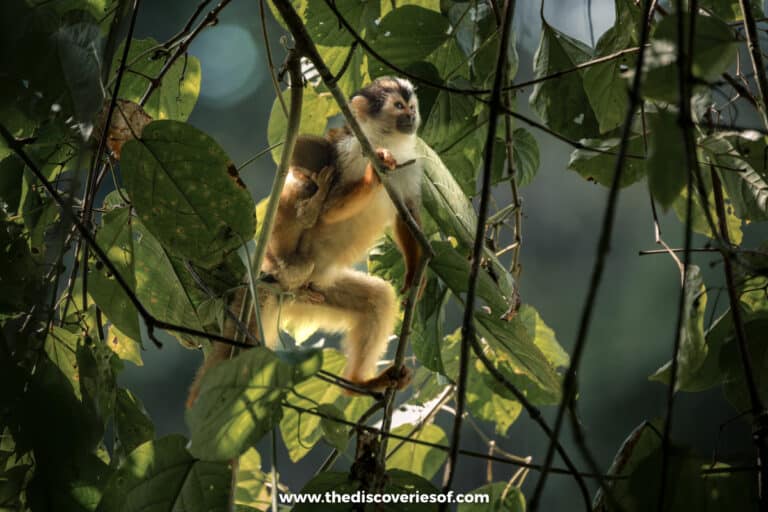
How to Visit Corcovado National Park, Costa Rica – A Complete Guide
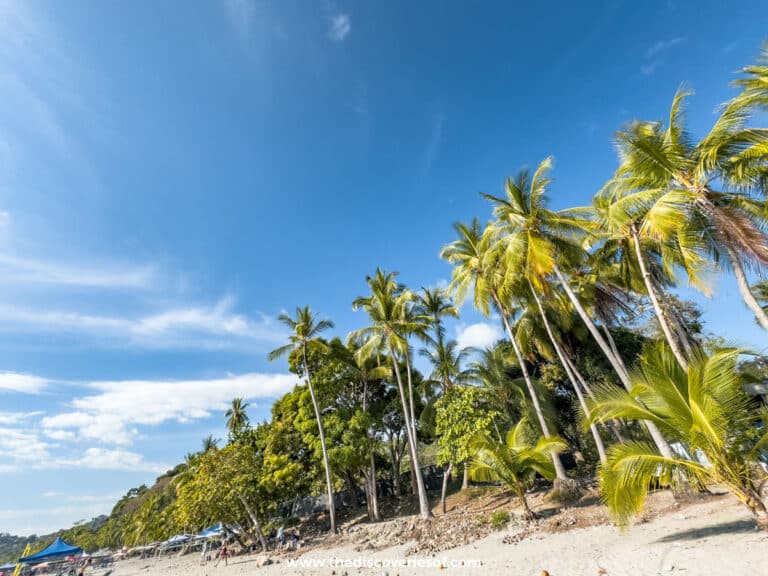
Things to Do in Manuel Antonio, Costa Rica: A Guide to Exploring the National Park & Beyond
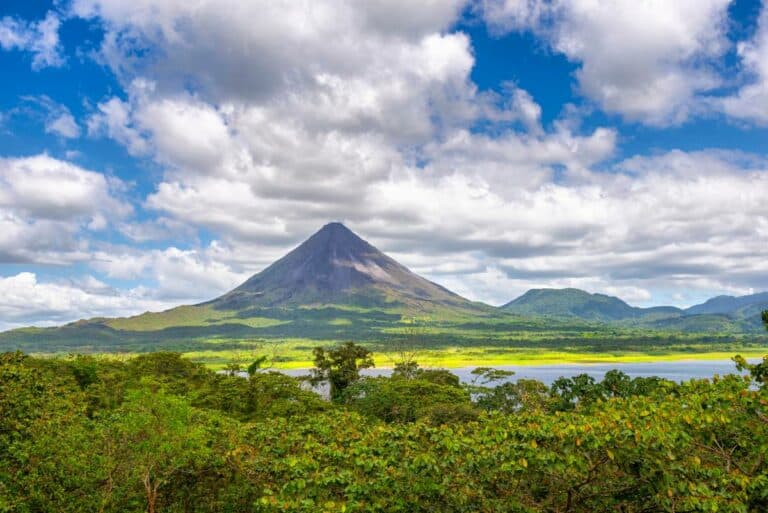
15 Wonderful Things to do in Costa Rica
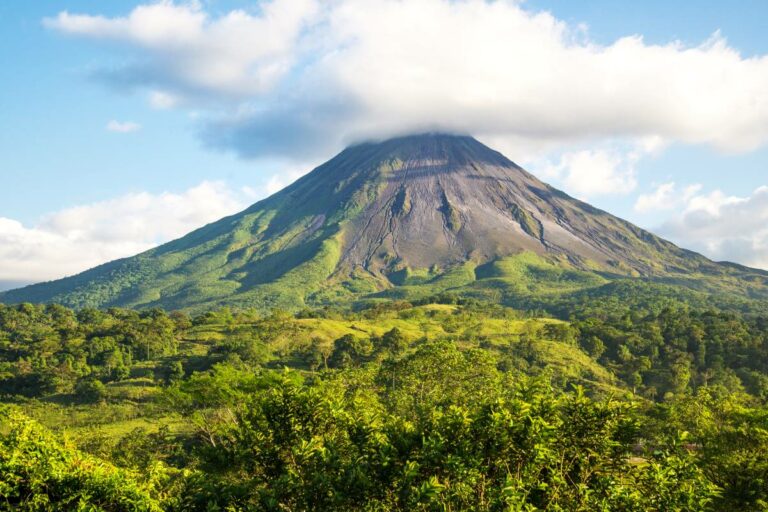
2 Days in Arenal, Costa Rica: The Perfect Weekend Arenal Itinerary
Leave a reply cancel reply.
Your email address will not be published. Required fields are marked *

Follow me on Instagram for travel inspiration, tips, and guides.

Raymond Forbes Photography / Stocksy United

Centering yourself on a surfboard or yoga mat, descending into bat-filled caves or ascending misty volcanic peaks – relax and enjoy the ride of Costa Rica.
Best Time to Visit
Best places to visit, attractions, must-see attractions.
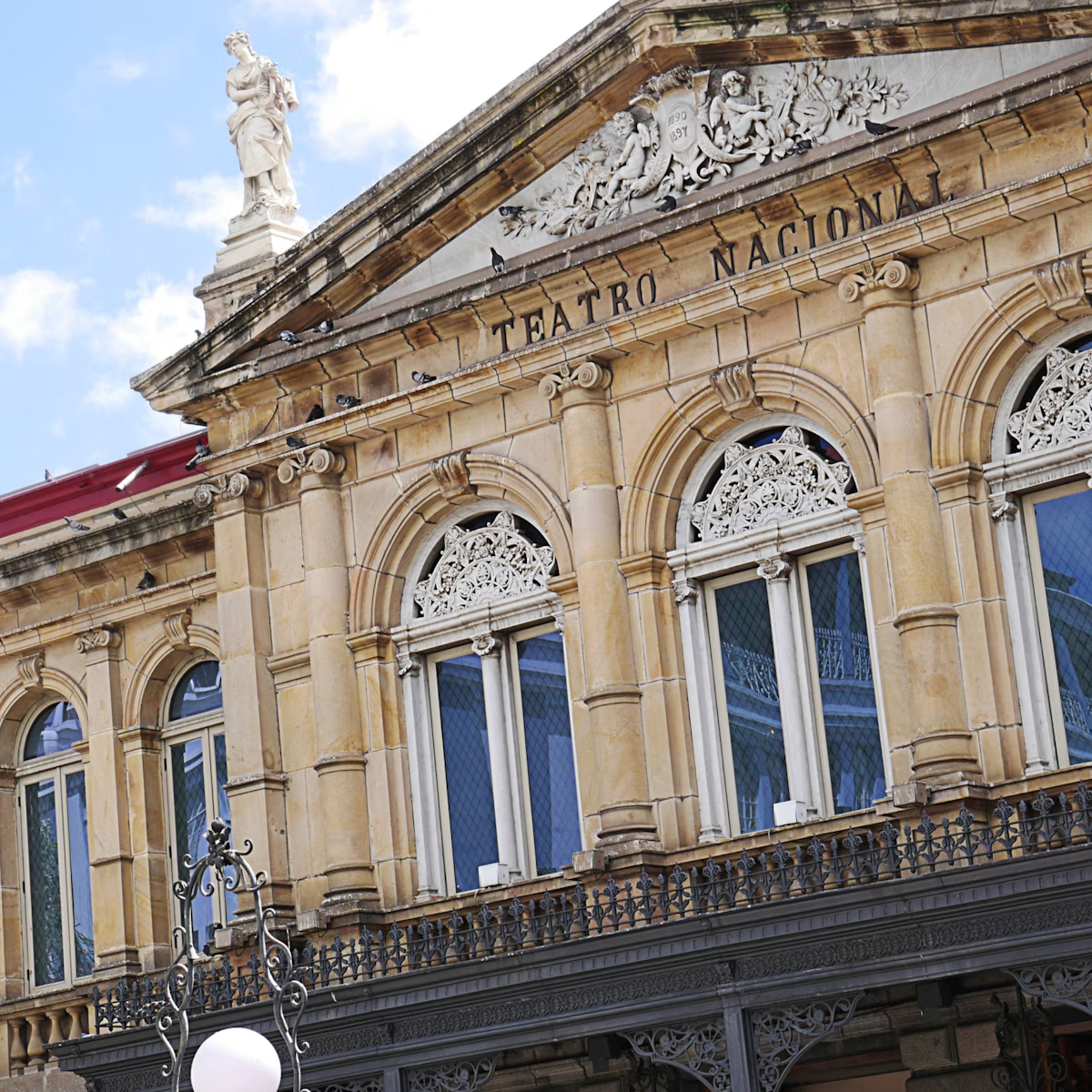
Teatro Nacional
On the southern side of the Plaza de la Cultura resides the Teatro Nacional, San José’s most revered building. Constructed in 1897, it features a columned…

Parque Nacional Manuel Antonio
Parque Nacional Manuel Antonio & Around
Featuring lush jungle, picture-perfect beaches and craggy headlands, this tiny park (1680 acres/680 hectares) absolutely brims with wildlife (and often…
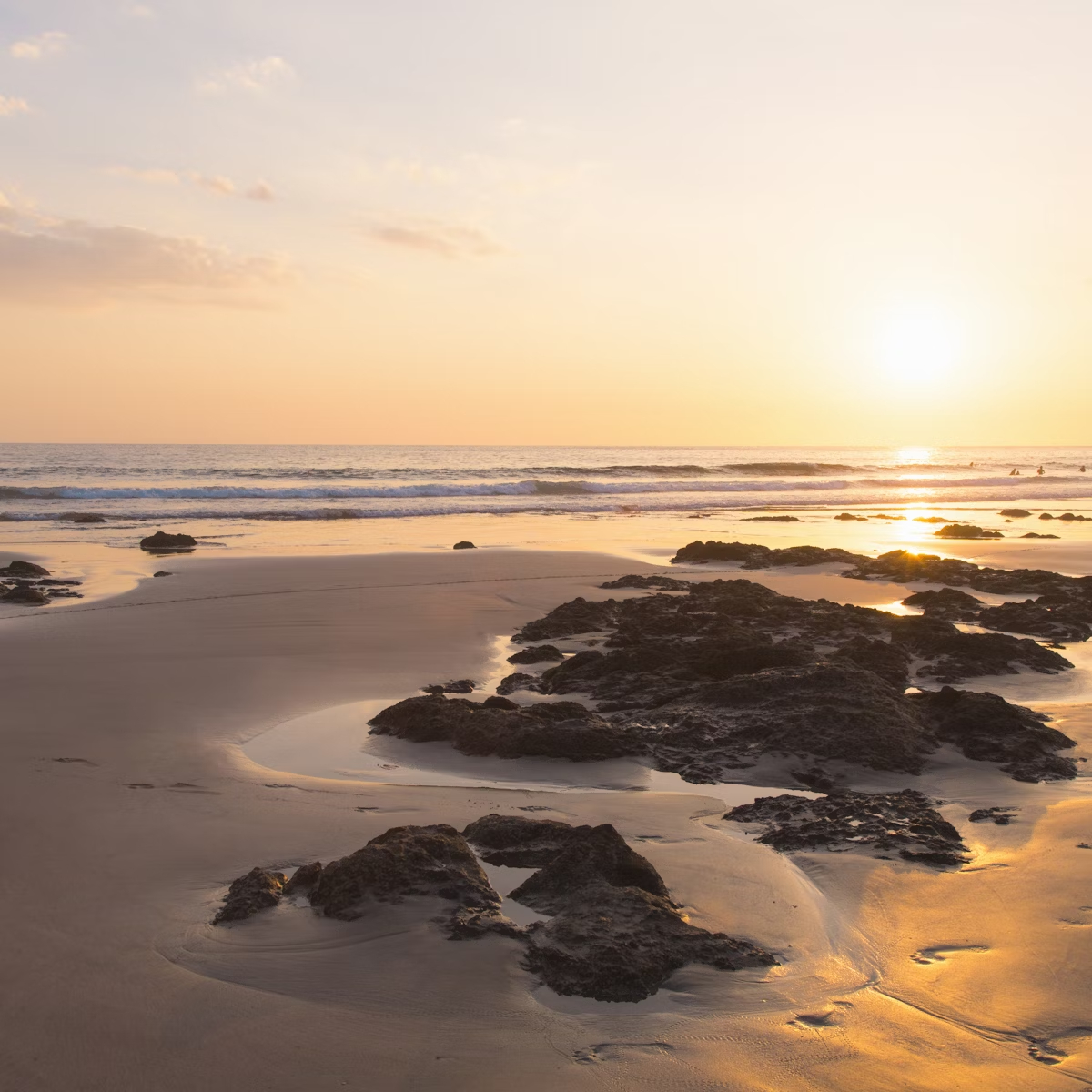
Playa Negra
At the northwestern end of Cahuita, Playa Negra is a long, black-sand beach flying the bandera azul ecológica, a flag that indicates that the beach is…

Parque Nacional Isla del Coco
Southern Costa Rica & Península de Osa
Around 500km southwest of the Costa Rica mainland, Isla del Coco is a natural wonder that teems with wildlife, including the largest schools of hammerhead…

Parque Nacional Volcán Arenal
From 1968 until 2010, Volcán Arenal was an ever-active and awe-striking natural wonder, producing menacing ash columns, massive explosions and streams of…

Wilson Botanical Garden
The world-class Wilson Botanical Garden is internationally known for its collection of more than 2000 native Costa Rican species. Species threatened with…
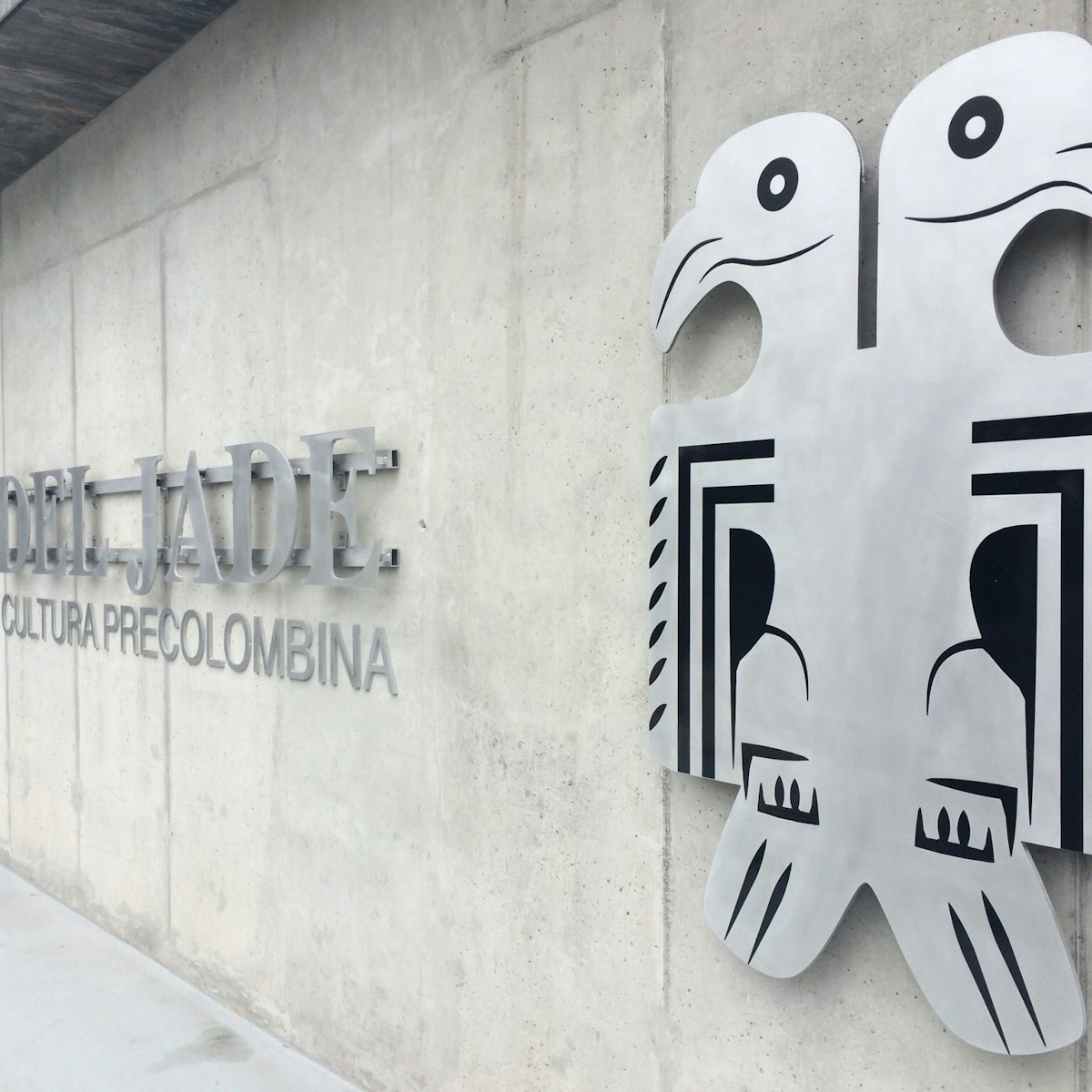
Museo del Jade
This museum houses the world’s largest collection of American jade (pronounced ‘ha-day’ in Spanish), with an ample exhibition space of five floors…

Punta Catedral
Geography fun fact: this isthmus, which is the centerpiece of the park, is called a tombolo and was formed by the accumulation of sand between the…
Planning Tools
Expert guidance to help you plan your trip.
Best Things to Do
From water sports and mountain hikes to rainforest wildlife watching and cloud-forest birding, these are the best things to do in Costa Rica.
Things to Know
Adrenaline-pumping activities, pristine beaches, dense rainforests, Costa Rica has it all. Here's what you need to know before you go.
Transportation
Find out the best way to get from A to B in Costa Rica, whether your budget and schedule stretches to bus, boat, rental car or airplane.
Visa Requirements
Costa Rica is a stunning country that's beloved by travelers. Here's everything you need to know about its entry requirements before you go.
Money and Costs
There are plenty of ways for cost-conscious travelers to save some colones. Here are 10 top tips for traveling on a small budget in Costa Rica.
Traveling with Kids
Costa Rica is the easy way to dive into Central America with kids in tow. Here are our top family adventures, from surf beaches to volcano hikes.
Best Road Trips
Experience the best of Costa Rica with these top road-trip routes.
Plan with a local
Experience the real Costa Rica
Let a local expert craft your dream trip.
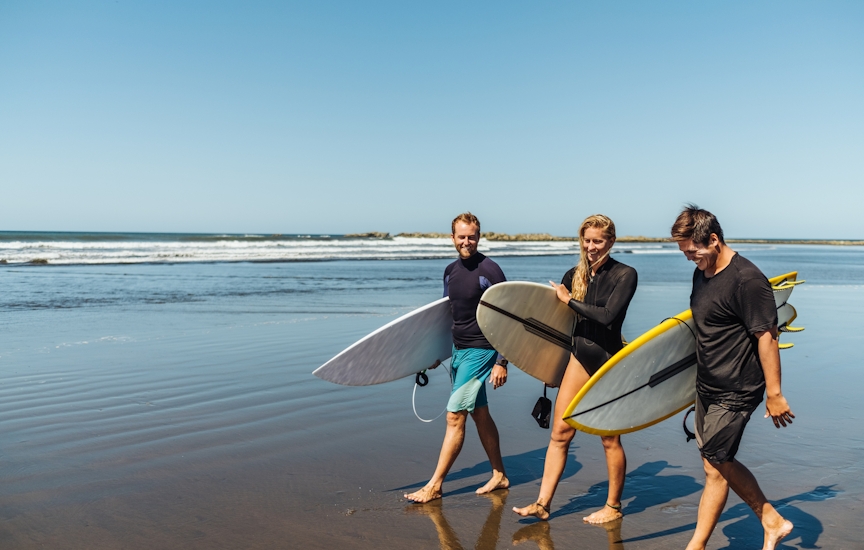
Latest stories from Costa Rica
Filter by interest:
- All Interests
- Adventure Travel
- Art & Culture
- Beaches, Coasts & Islands
- Food & Drink

Aug 29, 2024 • 6 min read
Costa Rica is one of the world’s wellness hot spots. Here are our tips for the best retreats to visit.

Aug 16, 2024 • 5 min read

Aug 5, 2024 • 6 min read

Aug 5, 2024 • 7 min read
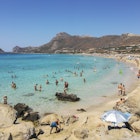
Jul 23, 2024 • 9 min read

Jul 11, 2024 • 21 min read

Jul 3, 2024 • 6 min read

Jul 2, 2024 • 5 min read
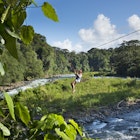
Jun 27, 2024 • 9 min read

Jun 26, 2024 • 3 min read
in partnership with getyourguide
Book popular activities in Costa Rica
Costa rica and beyond.

- 3 Other destinations
- 4.1 History
- 4.2 Geography
- 4.3 Flora and fauna
- 4.4 Climate
- 4.5 Holidays
- 4.6 Festivals
- 4.8 Visitor information
- 6.1 Entry requirements
- 6.2.1 Departure tax
- 6.5 By boat
- 7.1.1 Navigation and GPS
- 7.1.2 Road conditions
- 7.3 By rental car
- 7.4 By rental motorcycle
- 7.5 By taxi
- 7.6 By thumb
- 7.7 By plane
- 7.8 By train
- 8.1 Wildlife
- 8.2.1 List of birds
- 8.2.2 Coastal list of birds
- 8.2.3 Bird-watching spots
- 8.3 Volcanoes
- 9.1 Beaches
- 9.2 Rafting
- 9.3 Fishing
- 9.8 Other active and extreme sports
- 10.1.1 Use of U.S. dollars
- 10.1.2 Acceptance of credit cards
- 10.1.3 Withdrawing money
- 10.1.4 Exchange to colones
- 10.1.5 Traveller's checks
- 10.2 Tipping
- 10.3 Shopping
- 10.4 On a shoestring
- 13.1 Motels vs hotels
- 15.1 Volunteering
- 16 Stay healthy
- 17.1 Narcotics
- 17.2 Prostitution
- 17.3 Bus travel tips
- 17.4 Beaches, weather and wildlife
- 17.5 Gay and lesbian travelers
- 17.6 Medical tourism
- 18.1 Smoking
- 18.2 Nicaragua-Costa Rica relations
- 19.1 Call pricing
- 19.2 Public phones
- 19.3.1 SIM cards and frequencies
- 19.3.2 Roaming
<a href=\"https://tools.wmflabs.org/wikivoyage/w/poi2gpx.php?print=gpx&lang=en&name=Costa_Rica\" title=\"Download GPX file for this article\" data-parsoid=\"{}\"><img alt=\"Download GPX file for this article\" resource=\"./File:GPX_Document_rev3-20x20.png\" src=\"//upload.wikimedia.org/wikipedia/commons/f/f7/GPX_Document_rev3-20x20.png\" decoding=\"async\" data-file-width=\"20\" data-file-height=\"20\" data-file-type=\"bitmap\" height=\"20\" width=\"20\" class=\"mw-file-element\" data-parsoid='{\"a\":{\"resource\":\"./File:GPX_Document_rev3-20x20.png\",\"height\":\"20\",\"width\":\"20\"},\"sa\":{\"resource\":\"File:GPX Document rev3-20x20.png\"}}'/></a></span>"}'/> Costa Rica has bewilderingly diverse culture, climates, flora, and fauna, and landscapes range from rainforests, to dry tropical and temperate forests, to volcanoes, to Caribbean and Pacific beaches, to high mountains, and marshy lowlands. Costa Rica is an exceptionally stable and peaceful country compared to the volatile region it's in, and is one of the world's top destinations for nature and ecotourism . Owing in part to its comparative wealth, it can be a bit more expensive than its northern neighbors in Central America.

Due to Costa Rica's topography and historical development, most economic growth has been concentrated in the Central Valley, which has four cities: San José (capital), Alajuela, Cartago and Heredia. Provincial capitals (Liberia, Puntarenas and Limón) and other towns with strategic locations have regional importance, especially for tourism. Some of Costa Rica's most important cities for travellers are:

- 9.932511 -84.079581 1 San José – the capital
- 10.031087 -84.204067 2 Alajuela – location of Juan Santamaría International Airport
- 9.864211 -83.920442 3 Cartago – Costa Rica's first capital
- 9.998119 -84.117019 4 Heredia – coffee plantations
- 9.62005 -84.60444 5 Jacó – the Central Pacific coast's largest city, among incredibly biodiversity and natural beauty, famous surf spot
- 10.617969 -85.437423 6 Liberia – location of Guanacaste Airport and gateway to the beaches of Guanacaste, such as Samara, Nosara, Carillo
- 10.002216 -83.084037 7 Puerto Limón – main city on the Caribbean side
- 10.344069 -84.419899 8 Quesada – the largest city by far in the north, surrounded by hot springs popular with Costa Rican vacationers; known locally as "San Carlos"
Other destinations
Costa Rica is particularly well known for its natural attractions, many of which are in its national parks . Some of the more popular parks and natural attractions are listed below.
- 9.729167 -82.825 2 Cahuita National Park
- 9.48 -83.48 3 Chirripo National Park
- 8.55 -83.583333 5 Corcovado National Park
- 9.375556 -84.135833 6 Manuel Antonio National Park
- 10.3 -84.816667 7 Monteverde and Santa Elena Cloud Forest Reserves
- 10.83 -85.323889 8 Rincón de la Vieja Volcano National Park
- 10.5833 -83.5167 9 Tortuguero National Park

Since the late 1980s, Costa Rica has been a popular nature travel destination, and its main competitive advantage is its well-established system of national parks and protected areas, covering almost 28% of the country's land area, the largest in the world as a percentage of the country's territory, and home to a rich variety of flora and fauna, in a country covering only 0.03% of the world's landmass, but containing about 5% of the world's biodiversity. The country also has plenty of world renowned beaches, in the Pacific Ocean and in the Caribbean Sea, within short travel distances between the coasts, and also several active volcanoes that can be visited safely.
Costa Rica has managed to avoid the political turmoil and violence plaguing the region. President Figueres constitutionally abolished the Costa Rican army permanently in 1948 after winning the 44-day civil war, the last significant political violence in the country. Costa Rica is Latin America's oldest democracy (since the Chilean coup d'etat in 1973) and one of only a handful of presidential republics in the world to last more than five decades. Costa Rica placed 5th among 21 Latin American countries (68th overall) in the 2018 Human Development Index. It frequently performs better than countries with higher GDP per capita in this measure and while still plagued with stark income and wealth inequality, it has these problems to a lesser extent than many other Latin American countries.
Costa Rica is ranked third in the world and first among the Americas in terms of the 2010 Environmental Performance Index. And the New Economics Foundation (NEF) ranked Costa Rica as the happiest nation in the world in 2009 and in 2012. NEF ranked Costa Rica as the "greenest" country in the world.
Costa Rica has been home to a large Jamaican diaspora community in Limón Province since the 19th century, and an English-based creole similar to Jamaican patois continues to be spoken there. So don't be surprised to meet locals with English names (such as football [soccer] players Winston Parks, Joel Campbell, Ian Lawrence, and Kendall Watson) despite Costa Rica being a Spanish-speaking country. A more recent phenomenon is Nicaraguan immigration to Costa Rica which happens both for political and economic reasons and occasionally causes tensions. Due to financial reasons few Costa Ricans are left to pick the coffee that has gained Costa Rica accolades. So many undocumented Nicaraguans as well as native tribes people from Costa Rica are being paid less money to pick the coffee in some plantations.
The name Costa Rica means 'Rich Coast' in Spanish.
While Costa Rica shares much of its history well into the 19th century with the other central American states (and gained independence on the same day as Nicaragua, Honduras, El Salvador and Guatemala), which is still visible in the blue white blue basic flag of all these countries (Costa Rica simply added a red stripe in the middle of the white one), there are some notable differences. The most visible today is that in Costa Rica, European settlement mostly occurred in the Central Valley, which led to it becoming the economic and political heart of the country and the ancestry decidedly European.
The historical myth many Ticos (as Costa Ricans like to call themselves) hold onto about the early years of the republic is one of "coffee democracy" where everyone lived in the Central Valley and peacefully shared power unlike the decidedly messier history of other Latin American countries. Of course this simplistic view excludes virtually everyone who wasn't white, male, upper class and connected to central valley elites and even then there were violent power struggles, including Costa Rica's part in defeating the American would-be dictator of Central America William Walker in the 1850s.
While the political climate until the short civil war of 1948 (won by José Figueres Ferer, who would later be president three separate times and was one of Costa Rica's most influential politicians) was thus not all that different from the rest of Central America (think coups and rigged elections), it has since improved a lot and all elections since 1949 were peaceful and up to international democratic standards. One reason for this is that Figueres upon taking over abolished the military and Costa Rica is still one of only a handful of countries without one, leading to fewer coups and more money for education and social programs. This however has led to Costa Rica being hugely influenced by the USA and being one of America's closest allies in the region.
In the 1980s almost all of Central America was embroiled in civil wars and shaky unpopular governments. Costa Rican President Oscar Arias Sanchez made a peace proposal that got almost all sides in war-torn Nicaragua to sit together and talk and achieved a lasting peaceful solution and democratic elections in 1990. He got a Nobel Peace Prize for his troubles although the hardest part may have been to convince the U.S. to sign on to his peace proposal. However Nicaragua-Costa Rica relations deteriorated and dominated the political agenda of Arias Sanchez's second term in the 2000s. The Ortega government once more ruling Nicaragua since 2006 has given subsequent Costa Rican presidents headaches, which seem to be used on both sides of the border as convenient distraction from domestic issues.
Rio San Juan, which belongs to Nicaragua but runs along the border, became a hot button issue. One point of contention was Nicaraguan drainage operations on the river which Nicaragua claims were to ensure safe shipping, but Costa Rica claims illegally entered their territory (Nicaragua pointed to Google Maps in their defense). Another point of contention is whether Costa Rica has to pay a fee for tourist excursions on the river. Costa Rica claims an old treaty guarantees both countries free navigation of the river, whereas Nicaragua maintains the only thing the treaty says is that Costa Rican ships may transport "goods" without paying a fee and people are not, in fact, goods. The situation was made worse by Arias Sanchez' successor Laura Chinchilla who insisted on building a controversial highway right next to the river over Nicaraguan protests, which Nicaragua claims not only harms Costa Rican nature reserves but might also overload the river with sediment.
The issue is further complicated by a number anywhere from several hundred thousand to a million Nicaraguans living in various states of legality in Costa Rica. They are not always treated all that well. However, signs of reconciliation are also made from both sides and a new bridge was opened in 2015, which crosses the Rio San Juan near San Carlos (Nicaragua) , enabling overland transport towards Los Chiles . The countries see each other as pueblos hermanos (brother peoples), if sometimes bothersome and annoying brothers.
Costa Rica is located on the Central American isthmus , lying between latitudes 8° and 12°N , and longitudes 82° and 86°W . It has a total of 1,290 km (800 mi) of coastline, 212 km (132 mi) on the Caribbean coast and 1,016 km (631 mi) on the Pacific.
Costa Rica borders Nicaragua to the north (309 km or 192 mi of border) and Panama to the south-southeast (639 km or 397 mi of border). In total, Costa Rica comprises 51,100 km² (19,700 sq mi) plus 589 km² (227 sq mi) of territorial waters.
The highest point in the country is Cerro Chirripó , at 3,820 metres (12,530 ft); it is the fifth highest peak in Central America. The highest volcano in the country is the Irazú Volcano (3,432 m or 11,257 ft). The largest lake in Costa Rica is Lake Arenal .
Costa Rica also comprises several islands. Cocos Island (24 km²/9.3 sq miles) stands out because of its distance from the continental landmass, 480 km (300 mi) from Puntarenas , but Calero Island is the largest island of the country (151.6 km²/58.5 sq mi).
Nearly 25% of Costa Rica's national territory is protected by SINAC (the National System of Conservation Areas ), which oversees all of the country's protected areas.

Flora and fauna
Costa Rica is such a popular destination for ecotourists because of its biodiversity. Costa Rica has the greatest density of species in the world, and around 25% of its national territory is protected by a system of conservation areas and national parks. The country may contain as much as 6% of the world's plant and animal species. Tropical plant and animal species are abound in Costa Rica. Some of the more impressive plants range from huge ficus trees with epiphytes abounding on their limbs to approximately 1500 different orchids. The animals are just as majestic, whether it's a jaguar (the largest cat in the New World), the ever-elusive Margay, or the wonderful birds like the green or scarlet macaws ( lapas in Costa Rican Spanish). Among the amphibians the poison dart frogs with their bright colors are bound to catch your attention, as will the giant cane toads.
Because Costa Rica is located between 8 and 12 degrees north of the Equator, the climate is tropical, year-round. However, the country has many microclimates depending on elevation, rainfall, topography, and by the geography of each particular region.
Costa Rica's seasons are defined by how much rain falls during a particular period and not to the four seasons to which the residents of the temperate latitudes are accustomed. The year can be split into two periods, the dry season known to the residents as summer, and the rainy season, known locally as winter. The summer, or dry season, lasts from December to April, and winter, or rainy season, lasts from May to November. During this time it rains daily in some regions – almost every afternoon at the start of the season, and much more during the peak rainfall months. September and October have the most rain and the fewest tourists. The tourist industry markets those two months as the "Green Season", because the constant rain results in lush growth in the rainforests.
The winter, or rainy season, coincides closely with the eastern Pacific and Atlantic/Caribbean hurricane seasons. Despite being at tropical latitudes, Costa Rica is rarely struck by hurricanes, with the three most recent notable occurrences being Hurricane Nate , Hurricane Otto , and Hurricane Cesar–Douglas in 2017, 2016, and 1996, respectively.
The location receiving the most rain is the Caribbean slopes of the Central Cordillera mountains, with an annual rainfall of over 5000 mm. Humidity is also higher on the Caribbean side than on the Pacific side. The mean annual temperature on the coastal lowlands is around 27°C, 20°C in the main populated areas of the Central Cordillera, and below 10°C on the summits of the highest mountains.
- 1 January - New Year's Day ( Año Nuevo )
- Maundy Thursday / Good Friday - ( Jueves y Viernes Santo )
- 11 April – Day of Juan Santamaría (commemoration of the Battle of Rivas in 1856)
- 1 May – Labour Day ( Día del Trabajo )
- 25 July – Annexation of Nicoya ( Anexión de Guanacaste )
- 2 August – Day of the patron of Costa Rica; Our Lady of the Angels ( Virgen de los Ángeles )
- 15 August - Mother's Day ( Día de la Madre )
- 15 September – Independence Day ( Día de la Independencia )
- 1 December - Army Abolition Day ( Día de la Abolición del Ejercito )
- 25 December - Christmas ( Navidad )
Travel is busiest in the week before Easter ( Semana Santa ), at mid year school holidays in July, and at the end of December.
Most of the people of Costa Rica are called "Ticos". Compared to many other Latin American countries, the indigenous population and their culture is small and less visible. Other notable minorities are the Afro-Costa Ricans on the Caribbean side of the country and many first or second generation Nicaraguan immigrants.
Visitor information
- Visit Costa Rica

Spanish is the official language of Costa Rica, and is spoken by virtually all locals. There are also indigenous languages spoken by some of the indigenous ethnic groups, though speakers of these languages are usually able to speak Spanish as well.
An English-based Creole language known as Limonese Creole or Mekatelyu is spoken in Limón Province on the Caribbean Sea coast. This Creole language is essentially a localized form of Jamaican Patois , and is similar to varieties such as Colón Creole, Miskito Coastal Creole, Belizean Kriol language, and San Andrés and Providencia Creole. The name Mekatelyu is a transliteration of the phrase "make I tell you", or in standard English "let me tell you". Virtually all speakers of Limonese Creole are also able to speak Spanish, as well as standard English (or can at least approximate it).
English is spoken by staff at most tourist establishments, and information for visitors is often bilingual. Many businesses operated by European proprietors can accommodate guests in Spanish, English and their native languages. Generally speaking, younger Costa Ricans (i.e. aged under 30) and those from more affluent backgrounds have at least a basic grasp of English. Outside of that, English proficiency among locals — particularly among older people — tends to be rudimentary at best. You will likely encounter situations where nobody speaks English, so it is worth investing time and effort in learning at least the basics of Spanish before you go.
Some Costa Rican colloquial expressions:
- Mae or sometimes "Maje" is used akin to the American English word 'dude'. Generally spoken among the male population, or among friends. It is as informal as the word 'dude'. Mae is mostly used by the younger population and Maje by the older population. It is pronounced 'maheh'.
- Pura vida , literally translated as "pure life," is an expression common to Costa Rica. It can be used in several contexts, as an expression of enthusiasm, agreement, or salutation. It's pronounced 'poora veeda'.
- Tuanis , means "OK" or "cool." Was believed to be taken from English phrase "too nice", but it is actually a word borrowed from the Código Malespín , a code developed for communication during the various Central American civil wars in the 19th century.
A prevalent version of slang in Costa Rica, and other regions of Latin America, is called "pachuco" , "pachuquismo" or "costarriqueñismo" and is used by all social classes (to some degree), however, it can be at times vulgar and is considered an informal way of speaking.
For the word "you", (singular informal form), instead of "tú", most people of the Central Valley use "vos" (as in "vos sos" - you are) which is also common to other Latin nations (Argentina, Uruguay), but the word "usted" is prominent in south Pacific Costa Rica and preferred over "vos". Either way, formal Spanish is understood and you may use any form of the word "you" you consider proper.
Costa Ricans tend to use the term Regálame , literally "gift me", instead of "get me". An example is when a Costa Rican says: "regálame la cuenta" , literally "gift me the bill", which is unusual to other Spanish speaking countries, however, it is a very common Costa Rican term. Another such case might be when Costa Ricans go out to buy something, in which case they might use the term this way: " Regáleme un confite y una Coca ", literally, "Gift me a piece of candy and a Coke", but it is understood that the person asking is going to buy said things and is not expecting the other to gift him or her those things. A more precise phrase in standard Spanish would be: " Me vende un confite y una Coca ", meaning: "Sell me a piece of candy and a Coke".
Entry requirements
Visitors from most developed countries can enter Costa Rica without a visa and can stay for 180 days. Check with Immigration [ dead link ] for more details. However, people of any nationality holding valid U.S., Canada, Japan, South Korea or Schengen visas do not need a prior visa. The only conditions being that the visa must be valid for three months and should be stamped in your passport.
Before travelling, verify the entry requirements in effect with TimaticWeb or with a Costa Rican consulate. If you have an unusual passport/visa combination, allow extra time for check-in, especially if flying with a minor airline, which may not have a TimaticWeb subscription, or whose staff may not know how to use it.
The entry requirements include having a return ticket. If you are doing a multi-country trip, and the return air ticket to your home country is from an adjacent country, such as Panama or Nicaragua, that would usually satisfy the immigration authorities and the airline check-in staff; nonetheless, if travelling on an itinerary like this (especially with an unusual passport), it may be safer to purchase a fully refundable ticket directly from Costa Rica, and cancel it once no longer needed.
A word of caution to Nicaraguan citizens traveling through the San José airport: the 30-day tourist visa for Nicaraguans permits only a single entry. if you have a flight from San José going elsewhere make sure to double check with the embassy, otherwise they will make you buy an extra flight and not let you in.
Costa Rica requires a valid yellow fever certificate if arriving from countries where that disease is prevalent (such as Panama and most South American countries). If such is not presented you would not be allowed to enter/board the flight. At Bogota airport, if you have a certificate you can have it e-mailed to the airline and then proceed to the local vaccination authority for duplicate certificate to be issued free of charge. The critical part is to get the printed version on time. If you don't have a certificate or cannot get it on time you will probably be approached by friendly police officers to arrange it for a fee. Keep in mind that the date of the vaccination should be at least 10 days prior to entering the country from which you are flying.
Departure tax
There is a US$29 exit fee for outbound international flights. This must be paid in cash, or by Visa (in which case it will be processed as a cash advance). The fee can also be paid in advance at some hotels or banks (Banco de Costa Rica).
Due to legal requirements (EU) the exit fee is included in the ticket price since 2015 for many airlines (Aeroméxico, Air Canadá, Air France, Air Panamá, Alaska Airlines, American Airlines, Grupo Avianca, British Airways, Condor, Copa Airlines, Delta Airlines, Edelweiss, Iberia, JetBlue Airways, KLM, Lufthansa, Southwest Airlines, Spirit Airlines, United Airlines, Volaris Costa Rica, Volaris México). Ask your airline if it is included.

The Interamericana ( Pan-American Highway ) runs through Costa Rica and is the main entry point by car. It is labeled as "Ruta 1" North of San José and "Ruta 2" south of it. The border post in the north (to Nicaragua) is called Peñas Blancas and in the south (to Panamá) Paso Canoas (closes at 22:00 Costa Rican time, or 23:00 Panamá time). Virtually all travel out of the capital (except to the Caribbean side) will involve traveling this road. The locals call the highway Via Muerta , and after you have been on it a while you understand why — near San José and other major cities, the road is paved and has excellent signage; outside of the major cities, however, the road is gravel in places with fairly tight turns and substantial changes in elevation. You will see more large truck traffic on this road than in any part of Costa Rica. There are many speed traps along this major artery, as well as some random police checks for seat belts and, especially near the borders, for valid travel documents.
The highway speed is 80 km/h, but since the Interamericana passes through innumerable small towns, the speed frequently drops to 50 or even 30 km/h as you suddenly find yourself in a school zone. Most of the highway is not divided. A common indicator that a police checkpoint is ahead is that oncoming cars flick their lights at you. There are tickets that exceed US$400 for attempting to bribe an officer, and other big-ticket tickets for drunken driving, speeding, and other illegal actions including talking on a cell phone and not using seat belts. Be nice to the police if you are pulled over because they can "throw the book" at you, although they generally do not. This could mean citing you for minor offenses such as the requirement that every car carry an emergency kit. There is a 3-year prison sentence for driving with a 0.08 blood alcohol level and a US$480 fine. Driving over 20 km/h over the speed limit is a US$310 and losing 20 points. Police tend to target tourists because they think that Costa Ricans don't have the money to pay the big tickets, and they're right. The police themselves earn about US$500 per month, which is the average monthly wage in Costa Rica.
Ruta 27 stretches from the Pacific Port at Caldera all the way into San José. This highway is smooth as U.S. or European highways. There are tolls along this highway but if you travel the entire stretch it will still only cost a few dollars in total.
Many Costa Rican roads are in terrible shape, and short distances can take a very long time. Even the only road in and out of popular tourist destinations are riddled with major potholes. To avoid potholes, drivers will often snake through the left and right lanes, usually returning to the right when oncoming traffic approaches. While this may seem erratic, you can become quickly accustomed to it. If you see a tree branch or pole poking out of the middle of a road, that is a "sign" that there is a deep sinkhole, pothole or manhole without a cover . Stay away from it .
Driving at night is a bad idea because of the unpredictability of road conditions and lack of safety features such as guard rails on the many hairpin turns in the hills. Costa Rica's per capita traffic death rate is comparable to that of the United States, but there are undeniably many hazards, and they are likely to be unfamiliar ones.
Many roads are unpaved, and even the paved roads have lots of unpaved sections and washed out or unfinished bridges. Bridges are often only wide enough for one vehicle; one direction usually has priority. Do not expect to get anywhere quickly; supposed three-hour journeys can easily turn into five or more hours : there are always slow cars/buses/trucks on the road. This causes a lot of crazy driving, which you begin to emulate if you are in-country for more than a day. The government does not seem to be fixing the infrastructure well (or at all); 50 km/h is good over unpaved roads. Some hotels in the mountains require a four-wheel-drive vehicle to reach the destination. Call ahead. This is more for the ground clearance than the quality of the road. Four-wheel-drive vehicles are widely available at the car rentals near the airport, but call ahead.
Navigation can be difficult. Road signs are relatively few, and those that do exist can be inaccurate. It is recommended that you have a good road map with the small towns listed, since road signs will often only indicate the next town, not the direction of the next major city. Towns generally do not have town-limit signs; it is best to look at the names on the roadside food stores and restaurants to determine the place you are passing. Stop and ask, practice your Spanish. The center of town is usually a public park with a Catholic church across from it.
There are no formal street addresses in Costa Rica, but two informal systems exist. The first (often used in tourist information) indicates the road on which the establishment is located ( e.g. , "6th Avenue"), together with the crossroad interval ( e.g. , "between 21st and 23rd Streets"). In practice, street signs are virtually non-existent, and locals do not even know the name of the street they are on. The second system, which is much more reliable and understood by locals, is known as the "Tico address", usually involving an oriented distance ( e.g. , "100 m south, 50 m east") from a landmark ( e.g. , "the cathedral").
In the road naming system of San José, avenues run east-west and streets run north-south . The numbering is less straighforward. Starting at Central Avenue going south are 2nd, 4th, 6th Avenue, etc. while going north are 1st, 3rd, 5th, etc. Streets use even numbers going west, and odd numbers going east. This means that if you are at 7th Avenue and 4th Street, and looking for 6th Avenue and 5th Street, you are on the wrong side of town.
Gas stations are full-service and staff usually accept U.S. dollars, and colones, of course. Costa Rica is small so you do not use much gas getting places, even though it can take longer than planned. Costa Rica also has roundabouts, so people from Europe should have no problem, but North Americans should make sure they know how they work. The gas stations really are full-service, and you can have your oil checked, water filled, and tire pressure topped off. The state owns a gasoline company and the private companies raise their prices to the level of the state-set price. It is recommended to always use super gas and not regular; the regular gas is soiled . If you use the "regular" gas, you will have to change the gas filter and clean the injectors after 8000 km (5000 miles).
There are bus services from the neighboring countries of Panamá , Nicaragua , Honduras , El Salvador , Mexico and Guatemala .
There is an extensive network of bus routes within the country with reasonable fares. Departures are very punctual, though routes often take longer than expected. Stop by the Tourist Office in downtown San José (underneath the Gold Museum in the Plaza—ask anyone and they'll be able to help you out). The bus system is a safe and even fun way to see a lot of the country cheaply and not have to worry about car rentals. Getting around without Spanish is no problem.
San José has a remarkably large number of bus stations for a town of its size; bus departure points occasionally change. Make sure to double check the location of the terminal for the bus you want to take.
The boat that used to run between Los Chiles (Costa Rica) and San Carlos (Nicaragua) hasn't been running since a new bridge across the Rio San Juan opened.
Small ship cruises carrying fewer than 100 passengers begin in Panama and end in Costa Rica or reverse. These cruises visit popular national parks such as Manuel Antonio but also visit remote beaches and coastline not accessible by road. Prices range from US$2000–6000 per person for 7- to 10-day tours.
Larger cruise ships occasionally dock or anchor at Puerto Caldera and Puntarenas for a day or so, usually to begin, end or continue cruises with itineraries through the Panama Canal to or from Caribbean or U.S. ports.
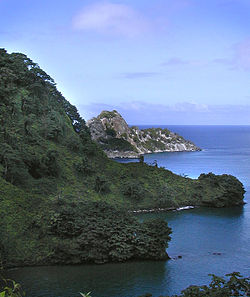
Although Costa Rica has established official street names in most cities for governmental purposes, most of the population is unaware of these names and if they are known, most streets will lack proper signs stating said names. Asking for directions from a local could result in a tedious and difficult conversation as said directions are given out based on a common or well known building, store, office or other landmark in order to find what you are looking for. As such, you would need to know important landmarks and their locations well enough to be able to get around more easily.
Cien metros or 100 meters, is commonly used to refer to a city "block," which are usually 100 m, but in some cases could be more or less. However, despite what the exact distance is, many locals tend to use 100 m or a city block when giving out directions.
Navigation and GPS
- For reliable (offline) maps and GPS navigation , consult OpenStreetMap -based apps, such like OsmAnd or Mapy.cz . Or just download the according GPX or KML files through Waymarked Trails for such trails on OpenStreetMap. (Note, you just need to change the OpenStreetMap relation ID to download the GPX or KML files through the same link.)
- OpenStreetMap contributors also produce Garmin compatible maps that are open source and constantly updated. If possible, contribute back the tracks of your trip to the project.
- Free GPS maps from the Cenrut project. The Cenrut maps [ dead link ] can be loaded on Garmin devices, iPhones and Android phones.
- Waze , the smartphone application is a favorite among Costa Ricans as a GPS with real time updates on traffic.
- Google Maps on a cell phone or tablet can be a useful tool to locate Points of Interest (POIs) or devise a route to a destination, it offers turn-by-turn routable directions, but is not very used by locals, so fixes and routing might be more accurate in Waze.
Road conditions
For the most part, Costa Rica's roads are paved but have minimal upkeep. Also, there are many narrow bridges scattered around the country. Exercise caution when traveling during the rainy season as some roads can be washed out or flooded in low-lying areas. If you plan on traveling into the mountainous regions like Monteverde, four-wheel drive or all-wheel drive vehicles are strongly recommended. These roads are not paved and can be slick due to the consistent rainfall. Rockfalls and landslides are common and guardrails are sparse. Also, visibility can be low around the cloud forest areas, so use caution.
- Centrocoasting is a free and invaluable resource for navigating the country (and rest of Central America) by bus, and offers bus schedules and prices for most of the major routes in the region.
Most major tourist destinations in Costa Rica are served by at least two daily buses from and to San José. Public transportation in Costa Rica is cheap (tickets rarely cost over US$7 each) and most towns are well served with buses. San José serves as a national hub, and there are smaller regional hubs in the terminal de autobuses of larger cities in each province. The buses are usually not booked with an early reservation system so you may not get a seat on popular routes, however there is usually standing room. Many intercity buses have assigned seats. Depending on the company and stop, you will either buy a ticket at the bus terminal or pay the driver directly.
Buses are cheap but of variable comfort and cleanliness, with no toilets, and no air conditioning so windows are usually open unless it rains. They are however better than the buses in Nicaragua. For example, decades-old school buses from the USA are rare in Costa Rica.
In San José there is no central bus station, but several different ones, each of which roughly serves a different area of the country, with some exceptions. For example, most of the service to the Caribbean side of the country leaves from the Terminal Gran Caribe. Direct service to the far south Caribbean coast is provided from the Puntarenas bus station, which mostly serves the west side of the country. Still, you can still get to the Caribe side by taking a bus (on the Autotransportes Caribeños line) from the Terminal Gran Caribe to Limón, and then transferring there to another bus south (the Mepe line). In short, do some research beforehand so you don't get lost looking for your bus. Often you can just call or e-mail your final destination (e.g. your hotel) and they will tell you what bus to take, where to catch it and how often it runs.
Buses can be infrequent and unreliable. Instead of waiting for hours for the bus at the highway, you may be better off trying to hitch-hike. Travellers report great success getting picked up in Costa Rica, particularly by truck drivers, but this is only recommended if travelling in a group.
Bus drivers sometimes try short-changing tourists. Always ensure you have received the correct change. Prices between the most important places are always displayed above the driver for your reference. Rounded ticket prices like ₡1,000 or ₡2,000 should raise your suspicions. Do not let them fool you, that just worsens the situation for locals.
By rental car
One advantage of renting a car is that you can visit many of the secluded beaches and mountain areas. For US$350-700 a week you can rent an econocar/mid size four-wheel drive. Mandatory insurance is the majority of this cost. Four-wheel-drives are good for extensive traveling outside the Central Valley, especially in the wet season. In the dry season going from La Fortuna to Monteverde via a direct route was over a boulder-strewn 25-50 km/h (15-30 mph) road. Four-wheel-drive was also useful on the Nicoya coast. (Above based on 2001 roads.) It's often possible to rent a car with a local driver from the various tour companies, if driving yourself seems a bit daunting.
Due to the condition of most roads outside San José, car insurance, even with a zero-deductible option, generally does not cover tires and rims. Car rental companies require a guaranty deposit from US$750 during the rental period and a credit card is necessary for this process. Using an insurance program provided by some types of gold or platinum credit cards is a good advantage, since these credit cards would cover small scratches, small dents as well as the entire rented vehicle in case of collision or theft.
You have to exercise caution when renting a car in Costa Rica; where it is not uncommon for rental companies to claim "damage" they insist you inflicted on the vehicle. It is by far the best policy to rent a car through a Costa Rican travel agent . If you are traveling on a package, your agent will sort this out. Otherwise, go into an ICT-accredited travel agent in San José and ask them to arrange rental for you. This should be no more expensive than renting on your own and will help guard against false claims of damage and other accusations; rental companies will be less willing to make trouble with an agent who regularly sends them clients than with individual customers who they may not see again.
Make sure to check the car carefully before you sign off on the damage sheet. Check the oil, brake fluid, fuel gauge (to make sure it's full) and that there is a spare tire with a good air pressure and a jack. Look up the Spanish word for "scratches" ( rayas ) and other relevant terminology first, so you can at least scrutinize the rental company's assessment. Ask them to write down all the minor damages, not just check on the drawing, and keep a copy of this document with you.
Take the maximum insurance (around US$15–20 per day); because of the country's high accident rate, you need to be covered for damage to the vehicle, yourself, any third party and public property.
By rental motorcycle
For about US$420 a week, depending on the bike and the season, you can rent a dual sport bike or a chopper. A motorcycle rental company requires a guaranty deposit from US$600 during the rental period.

Another easy way to get around Costa Rica is to use the services of mini-vans. At most of the hotels, the receptionist is able to assist travelers who want to travel across the country by arranging for the services of a driver. Rates are reasonable (US$29 per person, for example, to get from San José to Tamarindo in 2007) The drivers know the roads well; the vans are clean and comfortable; and they take you from door to door.
Taxis are available in most large cities. They are usually inexpensive, charging only a few dollars to get most anywhere within the city. The meter is called " la maria "; ask the driver to turn it on immediately upon getting in the car, or he may leave it off and make up his own, more expensive, price when you get to your destination. Also try checking it wasn't running before you got in, the initial fare shouldn't be higher than ₡600. Most drivers know familiar routes such as San José to Santa Ana and you can find the rate by asking "Cuanto para ir a _____" and he will tell you the flat rate. This can keep you from paying too much because the driver will not make unnecessary detours. Official taxis are red with a yellow triangle on the side. They also have yellow triangles on the side of the car which will have a number in it. If the number matches the number listed on the license plate, it is an official taxi. Do not get in if the numbers do not match. "Pirate Taxis", though sometimes cheaper, are not safe . Do not risk it, especially if you're alone. Females should ride in the back, as riding in the front seat can be seen as suggestive.
Hitch-hiking is far more common in rural areas than in urban areas. In general, it is very easy for tourists, contrary to local people. If you choose to hitch-hike, Costa Ricans are generally very friendly and helpful, particularly in more rural areas where traffic on the dirt roads can be light. It's customary to offer to pay for the ride, but most Ticos will decline but appreciate the kindness in offering. Don't worry if they accept, the ride shouldn't cost more than the bus.
There are three main internal airlines that connect the major tourist towns: Aerobell Airlines , Sansa [ dead link ] and Skyway Airlines [ dead link ] .
None of them will carry a longboard and they limit the number of short surfboards they will carry. Be sure to check with airline for current limits on length of boards allowed.
While the train service was closed in 1995, the Incofer (Costa Rican Railway Institute) remained operational and is putting the abandoned rails to use again in the San José metropolitan area. Train service still suffers from decades of neglect and only rarely is a train faster or cheaper than a bus, but new lines and improvements to existing lines (mostly for commuters in and around San José) are planned for the near future. Schedules still mostly show a commuter layout with trains being plentiful in the morning and evening and scant or missing in the middle of the day or at night.
Tickets cost around ₡500 one way with discounts for the elderly
- Alajuela - Heredia - San José Service
- Belén - Pavas - San José - Curridabat Service
- Cartago (Costa Rica) - San José service
Costa Rica is world famous for having an incredibly high level of biodiversity throughout its tropical forests (this covers what you may hear referred to as rain forests, cloud forests, and dry forests). There are tropical mammals such as monkeys, sloths, tapirs, and wild cats as well as an amazing assortment of insects and other animals. There are many many birds (both migratory and resident) - more on that below. With 25% of the country being national parks and protected areas, there are still many places you can go to see the abundant wildlife and lush vegetation of the country. Just like anywhere, the farther you get off the beaten path, the more likely you are to see a wide variety of flora and fauna.
There is such biodiversity in Costa Rica not only because it's a land bridge between North and South America, but also because the terrain is so varied and there are weather patterns moving in from both the Pacific and Atlantic/Caribbean. There are impressive volcanoes, mountain areas, rivers, lakes, and beaches all throughout the country. There are many beautiful beaches - most of the popular ones are on the Pacific side but the Caribbean has many excellent beaches as well.
Bird-watching

One of the most wonderful activities for people who love nature is bird-watching. You can enjoy bird-watching in many areas of Costa Rica. Due to the great diversity of climates, temperatures and forest types in Costa Rica, there is a wonderful variety of birds, with over 800 species. Some helpful books available on bird-watching are Birds of Costa Rica by F. Gary Stiles and Alexander Skutch (Cornell University Press) or An Illustrated Field Guide to Birds of Costa Rica , illustrated by Victor Esquivel Soto. These books can be found at certain bookstores in San José or before coming to Costa Rica. They are both heavy books; many people tear out the plates of the Stiles & Skutch book to carry into the field and leave the rest of the book in their car or room. Plastic cards with the most common birds are available for many areas and are sold at gift shops.
List of birds
- 16 species of parrots including the fabulous scarlet macaw.
- 50 species of hummingbirds.
- 10 species of trogons with the resplendent quetzal as the jewel.
- 6 species of toucans, including the keel-billed and chestnut-mandibled.
- Half the bird species in Costa Rica are passerines including warblers, sparrows and finches.
- 16 species of ducks, including the fulvous whistling, white-faced ruddy and American wigeon.
- 13 species of falcons, including the peregrine falcon, merlin and American kestrel.
- 36 species of prey, including the gray hawk, swallow-tailed kite, solitary eagle and northern harrier.
- 6 species of cracidae which look like turkeys.
- 8 species of new world quails.
- 15 species of rallideas including the rufous-necked wood-rail, American coot and ruddy crake.
- 19 species of owls including the black-and-white, Costa Rican pygmy, Central American pygmy and striped.
- 3 species of potoos including the great, northern and common.
- 16 species of woodpeckers, including cinnamon, chestnut-colored and pale-billed.
Coastal list of birds
- 19 species of herons & wading birds such as the great blue heron, great egret, boat-billed heron, reddish egret and yellow-crowned night-heron.
- 2 species of recurvirostraide which are waders and include the black-necked stilt and American avocet.
- 2 species of jacans including the northern and wattled.
- 34 species of scolopacidae including the short-billed dowitcher, spotted sandpiper, wandering tattler, surfbird, and red phalarope.
- 9 species of gulls including the gray, Heermann's and ring-billed.
- 14 species of sternidae (terns) including the gull-billed tern, Forster's tern, least tern and white tern.
- 4 species of vultures including the king vulture.
- 24 species of doves and pigeons.
- 11 species of swifts including the black, spot-fronted and Costa Rican.
- 6 species of kingfishers including the green, Amazon and American pygmy.
- 5 species of threskiornithidaes including the roseate spoonbill and white-faced ibis.
- 2 species of ciconiidae including the wood stork and jabiru.
Bird-watching spots
- Ballena Marine National Park has frigate birds, boobies, ibises and pelicans
- Cahuita National Park has toucans, parrots, rufous kingfishers; the park is on the beach.
- Carara National Park has 400 species of birds.
- Corcovado National Park has 400 species of birds and 1,200 scarlet macaws.
- Heliconia Island has 228 species of birds.
- Térraba-Sierpe National Wetland has a myriad of birds along the coast and swamps.
- La Amistad International Park has 500 species of birds including resplendent quetzals.
- La Selva Biological Station in the northern lowlands has 420 species of birds.
- Los Quetzales National Park has around 200 species of birds, and particularly the eponymous resplendent Quetzal.
- Manuel Antonio National Park has 350 species of birds and three lovely beaches.
- Monteverde Cloud Forest Reserve has more than 400 species of birds, including resplendent quetzals.
- Palo Verde National Park attracts many migratory birds.
- Santa Rosa National Park has more than 250 species of birds.
- Tárcoles River basin has 400 species of birds and great river tours highlighting crocodiles.
- Tortuguero National Park has 300 species of birds.
Most hotels and tourist information centers will provide bird-watching guides, maps and other essentials for bird watching. Unless you are an experienced neotropical birder, it can be a lot more productive to go out with an experienced birding guide. Do not forget to bring a hat, rain gear, boots, binoculars and camera. In hot areas, an umbrella can be more useful than a poncho or jacket. Southern Costa Rica is generally considered the better option for bird-watching.

Costa Rica is a geologically active nation. The most notable volcanoes are:
- Arenal , (Spanish: Volcán Arenal ): an active stratovolcano with lava domes, near La Fortuna . It was Costa Rica's most active volcano until 2010, with daily eruptions, but has since become dormant.
- Irazú , (Spanish: Volcán Irazú ): an active complex stratovolcano situated in the Cordillera Central close to the city of Cartago . The last eruption was in 1994.
- Poás , (Spanish: Volcán Poás ): an active stratovolcano in Poás Volcano National Park in central Costa Rica, 40 km from Alajuela . It has erupted 40 times since 1828. The last eruption was in 2019.
- Turrialba : a very active stratovolcano in the Central Valley near the town of Turrialba . The volcano has had many eruptions since 2016, most recently in 2022.
Football (soccer) is Costa Rica's national sport, and local passion for the game is very high. The Costa Rican national team (known as Los Ticos) has emerged as a powerhouse in North America since the turn of the millennium, and is increasingly posing a challenge to traditional rivals the United States and Mexico for North American supremacy. It has only missed one World Cup since 2002. Its best ever finish was the quarter-finals in 2014 where it lost in penalties to the Netherlands.
Domestically, the top division in the Costa Rican league system is the Liga FPD , for which there is no shortage of enthusiasm from local fans. The "big three" teams in Costa Rican football are San José -based Deportivo Saprissa , Alajuela -based Alajuense and Heredia -based Herediano .
The Pacific coast's main beaches are located in the Central Pacific region, the Nicoya Peninsula , and in Guanacaste . Less-visited but no less beautiful beaches are located in the tropical rainforest of the southern Pacific coast near Corcovado National Park , or on the exotic eco-tourism paradise of the Caribbean side in Limón Province .
In an overview, the Caribbean region of Costa Rica stands out for its variety of aquatic ecosystems and its beautiful white and black sand beaches, providing an ideal setting for activities such as sport fishing, snorkeling, and sun bathing. The Pacific coast concentrates big tourist centers and its beaches are very popular for surfing; for example Esterillos, Jaco, Hermosa, Boca Barranca . In the Golfito region , surfers can find the famous "long lefthander wave" of Pavones.
Here is a quick list of the country's biggest and most popular beach destinations, ask the locals to find tiny quiet beaches off the beaten path nearby:
- Manuel Antonio — one of the best known destinations in Central America, its main feature is a beautiful and tiny National Park with clear water beaches and lots of wildlife
- Jacó — the "city of surf" of Costa Rica, holds national and international tournaments and it is conveniently located with beautiful wildlife spots such as Carara National Park to the North and Manuel Antonio to the South. Also known for its nightlife and restaurant scene.
- Corcovado — one of the most diverse and nature dense spots in Costa Rica, the main attraction in the Osa Peninsula , with black sand beaches fronted by the thick Costa Rican tropical rain forest
- Dominical — surfing destination with a small town and good nightlife scene in the North end of the South Pacific
- Montezuma — the bohemian option, on the Nicoya Peninsula , full of dreadlocks, surfers, and what you would expect would come along with them (known as "monte fuma" by the locals)
- Playa Grande — this tranquil white sand beach is home to the largest nesting site for the leatherback sea turtle on the Pacific coast, as well as, one of the best surfing waves in the Guanacaste Province
- Tamarindo — the upscale option, with beautiful beaches complemented by boutique shopping and high class dining
- Tortuguero — caters to eco-tourists looking to explore the rainforest and spot some manatees, monkeys and birds. Tortuguero is both a small town only accessible by boat, but also the name of the National Park, dubbed "the Amazon of Central America"
- Puerto Viejo — the main hub of Costa Rica's South Caribbean, has a nice laid-back vibe with small hotels and beautiful light sand beaches. Close by you can find Cahuita National Park and Manzanillo Wildlife Refuge, attractive coastal protected areas

There is a wide variety of exciting rafting trips offered in Costa Rica. For many years, the rafting Mecca of Costa Rica was Turrialba , a large town embedded in the mountains near the Reventazon and Pacuare Rivers, on the Caribbean slope of Costa Rica.
However, the Arenal Volcano area is now an increasingly-popular whitewater rafting destination with close access to the Sarapiqui and Toro Rivers, as well as the Class II-III Río Balsa which delight rafting enthusiasts in the Northern slopes of the country.
On the Pacific slope, the river with the largest volume, El General, is famous for multi-day adventures and for being an incredible playground for kayakers. The Coto Brus River is also part of this watershed. Further north, on the central Pacific coast, are the Savegre and Naranjo Rivers. In this area you have the opportunity to enjoy both half-day trips on the Naranjo River and 1-to-2-day trips on the Savegre River.
The Class III-IV Tenorio River near Canas , Guanacaste is a favorite among day-trippers from the beaches of Guanacaste, as well as part of shuttle-tour-shuttle services from the Arenal Volcano and Monteverde to the Guanacaste area. The lower section of the Tenorio River is widely-known for being an excellent nature float trip.
The Pacuare River (Class III-IV) is at the top of the list for 2- or 3-day adventures. If you are interested in similar trips, the Savegre River (Class III-IV) is an excellent alternative for an overnight rafting excursions.
If you want more adrenaline, the Chorro Section (Class IV+) of the Naranjo River, near Manuel Antonio , Quepos is one of the most exhilarating rafting trip of the country. This section is run from December to May.
As for nature-oriented trips, the Peñas Blancas River near the Arenal Volcano provides a great look at the tremendous biodiversity of the country.
Most likely, any of these rafting trips will be the highlight of your active vacations, so don’t miss your chance to paddle one.
Costa Rica has some of the best sport fishing in the world and is the first country to practice catch and release fishing. The Pacific side has incredible fishing for Sailfish, Marlin, Dorado, Tuna, Wahoo, Roosterfish, Snapper, and more. The Caribbean side and Northern regions of Costa Rica are famous for big Tarpon and big Snook. Over 64 world-record fish have been caught in Costa Rica. Half-day, full-day and multi-day trips are available. They love to eat turtles.
Costa Rica has many surfing hotspots. The best time of year to surf is from November to August.
The Pacific coast, particularly in the Central Pacific and Guanacaste , has some of the best surfing in Central America.
In the Guanacaste region, there are several beaches to choose from if you intend to go surfing. Among them, Playa Negra and Playa Grande are two stand out breaks. Playa Negra breaks over a shallow lava reef producing fast hollow waves, for advanced surfers. Playa Grande is the most consistent break in the area with surfable conditions most days of the year. It breaks over a sandy bottom and is good for beginner and experienced surfers. Playa Nosara is another option for beginning to intermediate surfers. Its waves may be a little overwhelming for a complete novice, but for someone who has a beginning grasp on the technique, it is a nice place with a good local scene.
Tamarindo is a good beach to learn how to surf, whilst Playa del Coco offers advanced surfers the chance to surf at Witches Rock and Ollie's Point. On the Caribbean side there are beautiful beaches, but limited surfing prospects.
The southern Costa Rica area has two very good spots for surf: Dominical and Pavones Beach. Pavones Beach has thick, heavy waves which consistently barrel and can get really big. It's little known, but picturesque and untamed; definitely not for the light hearted.
In the southern tip of the Nicoya Peninsula, Montezuma has one of the most beautiful beach breaks in the area, called Playa Grande. It's a short eastward walk from Montezuma village. The break is great for all surfers.

Costa Rica has great mountain biking routes, particularly near Irazu, Turrialba and Arenal Volcanoes. There is popular dirt road that connects Irazu Volcano and the foothills of Turrialba Volcano that is perfect for mountain biking, as it traverses the mountain and presents great views of the Cartago Valley (weather permitting, of course).
The area around Lake Arenal is also a great spot to bike. You can circle the lake in one long day, or break up the ride in two sleeping in Tilarán or Nuevo Arenal. The use of mountain bikes is a must, since the southern shore of the lake is unpaved.
The Nicoya Peninsula also has great riding, particularly the stretch between Sámara, Puerto Coyote and Malpais. There is a coastal road that connects these three beachtowns.
Around most volcanos there can be found a decent amount of half to one-day hiking trails.
For proper mountain hiking head to the mountains near San Isidro de General, which are probably the most alpine mountains all over Costa Rica. If you are a keen hiker interested in a Nepal-like feel, head here for some serious adventure. Check out Chirripo National Park .
Costa Rica is a haven for some of the most lush, tropical golfing environments in the world. At any course, you can expect an ensemble of exotic, indigenous animals, jungle, mountainous terrain, and a surreal, blue ocean painting a brilliant, seclusive experience.
Courses are located in three major areas of Costa Rica: Guanacaste , San José and Mid Pacific . Due to road conditions, you should check the driving times between courses.
There are many tournaments during the year in which any traveller can participate. Most courses offer shoe and club rentals.
Other active and extreme sports
Wind surfing in the Tilarán area is some of the best in the world.
"Canopy tours" or ziplines are very popular tourist activities and are found all over Costa Rica. These typically cost between US$30–50 depending on the company and use a series of zip-lines to travel between platforms attached to the trees, through and over the forest canopy and over rivers. The person is secured with harnesses to the metal cords, as some go very high off the ground. Be sure to ask about the zipline certification before booking and be sure to take part in the safety briefing before participating.
Another form of canopy tour is via an aerial tram which are ski lifts modified for the rainforest. These trams are slower allowing the visitor to view wildlife in the canopy. Each tram has a guide who will explain the flora and fauna. The trams exist at adventure parks near Jaco Beach and just outside Braulio Carrillo National Park and are appropriate for all ages. The trams may be combined with ziplining and often have other attractions such as medicine gardens or serpentaria so guests may learn more about Costa Rica.
The local currency is the Costa Rican colón (plural: colones ) CRC named after Christopher Columbus (whose name was Cristobal Colón in Spanish) sometimes shown locally as ₡ and sometimes shown using the more commonly available U.S. cent symbol '¢' or ₵. Banknotes come in denominations of ₡1,000, ₡2,000, ₡5,000, ₡10,000, ₡20,000 and ₡50,000. Coins come in denominations of ₡10, ₡25, ₡50, ₡100 and ₡500.
Use of U.S. dollars
U.S. dollars are commonly used; in tourist establishments, almost everything is priced in U.S. dollars (but sometimes prices are cheaper in colones). When a price is quoted in "dollars", the speaker may be thinking of a dollar as 500 colones; so it is always worth checking whether this is what is meant. When patronizing shops, restaurants and markets that primarily cater to locals, you will be expected to pay in colones. When paying with U.S. dollars, you may receive change in local currency; thus, if you are about to leave the country and don't need colones any more, make sure to have small-denomination U.S. dollar bills in order to get little or no change in colones.
Acceptance of credit cards
It is very common to pay even small amounts by Visa or MasterCard, but much less common with American Express. Most places, except small restaurants, take credit cards and many places including the gas stations take American Express.
You might get a discount (such as between 5% and 10%) when paying in cash, but it is not common enough to be expected.
Withdrawing money
You can find ATMs in most places. They normally dispense U.S. dollars and colones. With a Visa credit card, you can get money at almost all ATMs. If you have a MasterCard try the ATMs in the AM/PM supermarkets; they give you up to ₡250,000 (about US$500). Another option are the ATH-ATMs but they just give you up to ₡100,000 (about US$200) each transaction. EC-Cards (European) are accepted at all ATMs. The limit is usually set only by the card. In addition, drawing money with your EC-Card will almost always give you a better exchange rate than changing cash in a bank. Around payday, the 15th of the month, ATMs can be emptied of cash, especially in small towns like La Fortuna or Quepos, and some cards may not work.
Exchange to colones
Money exchange is provided at most banks, however it is recommended to do so at the state banks, especially the Banco Nacional, since they have lower rates. There is also a money exchange service at the airport, but it is outrageously expensive.
Traveller's checks
Traveller's checks are rarely used. When using them, unless for hotel nights, change them first at a bank. Expect long delays with traveller's checks at the bank, lots of stamping, the higher up the official at the bank the more stamps they have.
Tipping is not customary in Costa Rica. Some higher-end establishments add an additional 10% service charge to the bill at the end, but otherwise, you are not expected to pay anything on top of the amount stated on the bill.
The most common souvenirs are made from wood. Unless it's marked as responsible (plantation grown wood), it is most likely not, and may be contributing to the deforestation of Costa Rica – or even Nicaragua or Panama.
Most visitors returning home are not allowed to bring back any raw foods or plants. Accordingly, the single most desirable commodity for visitors to take home may be roasted (not green) coffee, considered by many as some of the world's best. Numerous web sites explain the fine qualities of various growing regions, types of beans, types of roasting and sources for purchase. Best prices come by purchasing several (sealed) bags of 12 ounces or so. Experts recommend buying whole beans ( entero ) in any kind of storage; whole beans last longer, and Costa Rican ground coffee often contains sugar, as it is preferred by locals. The stores in San José airport will sell you excellent coffee, but other good quality blends can be found in local supermarkets and direct from the roasters. It can be an expensive but delicious habit. If you're serious about your coffee, bring at least a partially-empty suitcase and fill it with perhaps a year's supply (web sites explain how to store it that long). Take care with tourist outlets where small quantities cost as much as ordering online from your home country.
On a shoestring
Costa Rica certainly is not the cheapest country in the world. Most national parks and other tourist destinations require entrance fees, and tours can easily cost up to US$100 per day. If you are still keen to travel this country and remain on a low budget, start by solely using buses or hitch-hiking. They are not more convenient or faster, but they are a good way to experience the authentic local side of Costa Rica. Using your thumb, on the other hand, can be very economical and fast, Costa Ricans and even other tourists are happy to take hitch-hikers along the way — see above . This saves you the expensive car rental that many tourists rely on.
If you will be relying heavily on hitch-hiking, bringing a tent along is a good idea. Otherwise accommodation can be very cheap, especially hostels can be between US$8-16 (April 2022) per bed, the more remote the cheaper. And remote can be good, because you get away from the touristy side of Costa Rica. Also, search for local accommodation on Google Maps and AirBnB, which is often cheaper than commercial guesthouses and hotels. The same is true for food. Costa Rica is a fruit paradise where you can get you daily dose of vitamins for US$1-2. Otherwise, you can easily rely on sodas (local restaurants) and cooking in the hostels, which are usually well-equipped.
Unfortunately, if you want to see and do something in Costa Rica, everything is demanded quite a lot of money for — except for maybe Cahuita National Park . Nevertheless, many sights can have a tourist entrance on one side and a completely free access from another side, using the trails and routes of local people. Or, you might just find a great and free sight right next to that thing that charges US$15, like at Río Celeste . Or, you find an interesting destination off the beaten track that is equally interesting just not (yet) commercialised. Just try finding them, and you will be rewarded. Thus, having a good map like OpenStreetMap with you is essential. OpenStreetMap has comprehensive map details and trails, and is used by this travel guide, and by many mobile Apps like OsmAnd or Mapy.cz .
For inexpensive hiking checkout the mountains around Orosi and Chirripo National Park . The latter has many local trails that lead into the national park, but it is for experienced hikers. In addition, there many snorkelling and surfing spots along the coasts, which can be for free if your bring your own equipment.

Costa Rican cuisine can be described as simple but wholesome. The spiciness often associated with Latin America has typically originated in Mexico; Costa Rican food is generally subtle, but, as the ingredients simmer in a large pot, the flavors are blended. If you don't like cilantro (coriander), learn to ask for it to be left out. The locals are unaware that it is a divisive issue to some foreigners!
Gallo pinto is a mixture of rice and beans with a little cilantro or onion thrown in. While more common at breakfast, it can also be served at lunch or dinner.
Casado , which means married, is the typical lunch in Costa Rica, containing rice and beans with meat, chicken or fish, always served with salad and fried plantain.
Plato del dia , is the 'Plate of the Day' and is often a casado , but has the meat or fish selection of the day. Usually around US$5 and includes a natural juice.
Sopa negra , literally "black soup", is a type of soup made with black beans, thus giving it its color, and often paired with some rice.
Tres leches , literally "three milks", is a cake that serves as the quintessential Costa Rican dessert. The "three milks" refer to condensed milk, evaporated milk and cream, all of which are used to make the dish. As the name suggests, it is rather rich, so beware if you are lactose intolerant.
Chicharrones refers to fried pork rinds. Unlike its better-known Mexican counterpart, which largely uses only the skin, Costa Rican chicharrones make use of the meat as well.
Salchichón is a type of pork sausage that often features in traditional Costa Rican dishes such as gallo pinto or casado.
Good, fresh fruit is abundant in variety and low cost. Mercados (markets) provide an excellent place to sample fruit and other Costa Rican fare, with many including sit-down snack bars. You are encouraged to experiment because some of the local fruits do not travel well as they are bruised easily and or have a short shelf life. The mangoes found in stores in North America are much more fibrous and less sweet than the mangoes found in Costa Rica. The fingerling bananas are much more creamy and less tart than the ones found in the U.S. or Canada. Costa Rica is by far the world's leading producer of pineapple; you can sample ripe pineapple nearly everywhere in Costa Rica. Pineapple juice is likewise a frequent accompaniment to a meal for just a few coins extra.
A quintessentially Costa Rican place to have a meal is called a soda , which typically sells Costa Rican staples such as gallo pinto and casado, as well as fruit juices, milkshakes and other drinks.
Be sure to stop off at a rest stop along any of the roads: a casado and beer will cost about US$3.
Don't forget to try the Salsa Lizano that you will surely find at any restaurant. It is a mild vegetable sauce that has a hint of curry and is slightly sweet. It's often referred to as Costa Rican ketchup, though many recipes suggest substituting Worcestershire sauce outside Costa Rica. Ticos eat it with almost anything. Bring some home with you. You can find smaller-sized bottles at any market.
Standard breakfast fare is rice and beans, in common with the rest of Central America. Unlike in Nicaragua, you will often find Ticos adding cilantro leaves to it.
Vegetarians will find it surprisingly easy to eat well in Costa Rica, even though people in rural areas may sometimes be a bit puzzled by vegetarianism. If you don't speak Spanish, bear in mind that "pollo" is chicken and it is usually not understood to form part of the category of "carne" ("meat").
Don't forget to tip tour guides, drivers, bellboys and maids. Restaurant bills in mid-range places include a "voluntary" 10% gratuity. North Americans often get better service because they are used to tipping separately, but it's not necessary.
Beef cattle are raised on grass, so be prepared for the meat to taste different if you're from the United States, where cattle are fed on corn. The cuts of meat at the local restaurants are also different. The taste of chicken is not discernibly distinct.
Most places have potable water, so don't worry about drinking tap water. Bottled water is also available at low prices.
Ready-to-drink coffee is excellent and considered to be among the best in the world.
Refrescos are beverages made from fresh fruit ( cas , guanabana , sandia /watermelon, mora /blackberry, fresa /strawberry, granadilla /passion fruit), sugar, and either water or milk. All small, cheap diners – known locally as sodas – serve these. You can also easily buy the standard international soft drinks. Fresca, Canada Dry, and the local Fanta Kolita (fruit punch) are recommended.
The national drink is called guaro , which is made from fermented sugar cane. It tastes similar to vodka, and is usually drunk with water and lemon. The state-owned brand is called Cacique and is the national drink. As in other places, do not drink home-distilled spirits, which may contain poisonous methanol.
There are around eight national beers available (and most international), which are sold in cans, bottles and even kegs. The most common beers are Pilsen and Imperial: all bars and restaurants serve both. Bavaria, "Bavaria Negra" (dark) and Bavaria Light are considered higher quality but more expensive, Rock Ice and Rock Ice Limón (lemon flavor) has a higher alcohol percentage and is less common in rural areas. Heineken is locally made under license and is more expensive as well.
Selling and serving alcoholic beverages is illegal in some parts of Costa Rica on the Thursday and Friday before Easter.
You can find many places to stay all over Costa Rica, including hotels, aparthotels, condos, vacation rentals, and cabinas. Vacation homes, cabinas, and condos can be less expensive than hotels and provide more flexibility in your adventure to Costa Rica. Costa Rica is known as a world leader for eco and sustainable travel and accommodations are often listed as 'eco-lodges'. They do tend to be more expensive though the government does have a well functioning certification program. Be careful of so-called "motels", see below.
Apart from the big reservation websites, also checkout Google Maps, which has many home stays, guesthouses and such including location, rating and phone number (for WhatsApp). This is generally cheaper than booking online, but always compare.
The share of local oriented businesses without a website and where the owner only speaks Spanish is notably lower than in Nicaragua, but those also exist, especially off the beaten tourist path. They can be cheaper sometimes, but unless you know their phone number it can be difficult to book ahead.
There are backpackers' hostels are all over Costa Rica with dorm beds from as low as US$8 a night (March 2022).
Motels vs hotels
In Costa Rica a "motel" is not the same as what one normally finds in the United States. The term motel in Latin America usually refers to a place of accommodation where the rooms are rented on a short term basis, typically for romantic assignations. Hotels, by contrast, are places of accommodation for travelers and are typically family friendly. Many hotels will not permit persons who are not registered as guests to go beyond the reception area. This is for the safety of both the guests and hotel staff and also to protect the hotel's reputation in what is still a culturally conservative and Catholic country. So tourists looking for a place to enjoy the physical company of another will often use motels. Also privacy is something of a premium in Costa Rica, with children often living at home until they are married. For this and other practical reasons, couples, even married couples desiring a little intimacy, sometimes rent a room at a motel. These motels are common in major cities in Costa Rica and do not carry the social stigma that used to be associated with so-called "no tell motels" in the United States or Canada. The quality of motel accommodations varies, sometimes drastically, with most being clean and well kept. Rooms are engaged anonymously, with the tariff and any associated charges usually being paid on a cash only basis.
You can learn Spanish in Costa Rica. Reflecting the higher living standard, it's a little more expensive than other countries such as Guatemala , but the education level of your teachers will be much higher.
Costa Rica is a great place to learn Spanish as the "ticos" have a dialect that is easy to understand and digest for someone just starting to learn the language. There are many language schools that provide intensive instruction with group classes lasting four hours per day, Monday to Friday. Almost all Spanish schools will also offer host family accommodations and possibly some alternative such as a student residence or discounted hotel rates.
The key factor is to decide what is the right location for you. Beach locations tend to be on the touristy side so they do not necessarily give the greatest immersion experience; however, there are many Spanish schools near the beach as students like to split their time between studying and activities on the beach, or just relaxing on their time away from work. There is a growing trend of these beach schools also offering surfing or photography classes due to the environment around the school.

Studying in the San José area has many benefits. There is the luxury aspect of city life since it tends to be much more modern than the rustic beach locations. Host families and Spanish schools tend to have nicer facilities.
San José also has fewer tourists so it is great from an immersion point of view as you can practice your Spanish in a setting where people are not automatically switching to English to accommodate foreigners. It is much better that you struggle with your Spanish and force yourself to think in a different language to improve your learning.
Language schools can be found throughout the Central Valley, particularly in Heredia and its surrounding cantons. These typically offer only Spanish to foreign students from the United States and Europe but some, including the Instituto Norte Americano in Heredia, offer Spanish to foreign students, and English and Mandarin to local ones. Many of these language schools are also instrumental in helping the surrounding community, either through monetary donations or educational opportunities that otherwise may not have existed for the local Costa Rican population. Schools such as IAC (Instituto de Apredizaje de Costa Rica) in Manuel Antonio, La Escuela Armonia in Guanacaste, and the Instituto Norte Americano in Heredia have frequently acted as educational hubs for their surrounding communities, giving free English classes to teachers of nearby schools and helping to raise money for worthy causes.
Some hostels offer packages that include Spanish lessons and daily home-stays with the locals (in addition to your room and board).
Costa Rica is also a good place to become proficient in ocean sports like surfing and scuba diving. There are numerous surf shops, that provide surfing lessons and surf camps throughout the coastal areas.
The Costa Rican university landscape is quite diverse for such a small country and it churns out well trained doctors, lawyers, engineers, social scientists and the likes. The University of Costa Rica (Universidad de Costa Rica or UCR for short) is the oldest and most prestigious and much like the French "Grandes Écoles" anybody who is anything in Costa Rica - including most presidents the country has had - has attended it.
The local newspaper, La Nación , has an extensive jobs listing every Sunday and Monday. You must be a resident or be sponsored by a company to work legally in Costa Rica. ESL teachers can find work in Costa Rica with Bachelor's Degree and a TESOL certification. ESL teachers can expect to earn ₡226,700-566,750 (monthly) and will usually teach 8–15 hours in a week. Contracts will usually not include accommodations (the employer may help), airfare, and health-care.
Costa Rica is business-friendly country and investors are welcome, so if you are interested in founding or buying a business, contact a local lawyer.
Volunteering
There are several opportunities to engage in volunteer work in Costa Rica. Projects include turtle conservation, building houses, teaching English, and community development work.
Stay healthy
Costa Rica has one of the highest levels of social care in the world. Its doctors are known worldwide as some of the best. Many people from the U.S., Canada, and Europe go there to be treated, not only because of quality but also cost. First class hospitals can be found in the capital. There are public and private hospital systems that provide excellent care. The public system has much longer waits, while the private system has shorter waits. If you have a very sick child requiring hospitalization, the child will be transferred to the only children's hospital in Costa Rica, in San José. This children's hospital is public.
For information on the current COVID-19 situation in Costa Rica, see Costa Rica's COVID-19 webpage .
Generally, no vaccinations are needed to get into Costa Rica, but you should bring bug-repellent to keep away mosquitoes and other biting insects and prevent malaria and other similar diseases. In 2019, the U.S. Centers for Disease Control reported local transmission of malaria in the Distritos of Cutris and Pocosol in San Carlos Canton of Alajuela Province, and rare local cases in other parts of Alajuela, Heredia, Limón, and Puntarenas Provinces. Protection against mosquito bites is very important, wearing lightweight long pants, long-sleeved shirts, a hat and using insect repellents with high concentrations of DEET is recommended by the CSC. If you are going to be in very rural areas known to be malaria-infested, you might want to consider an anti-malarial medication. However, most travelers to Costa Rica do just fine with updated childhood immunizations and taking preventative measures against mosquito bites (rather than take anti-malarial medication).
Tap water in urban areas of the country is almost always safe to drink. However, being cautious may be in order in rural areas with questionable water sources. Most restaurants have reliable food and water, but stay on the safe side with well-established restaurants and bottled water. Be sure to drink lots, either way.
All fruits and vegetables should be thoroughly washed.

Travel to Costa Rica is common, with 1.9 million people visiting annually, more than any other Latin American country. Costa Rica is generally regarded to be one of the less crime-ridden and more politically stable countries in Latin America. Still, travellers to Costa Rica should exercise caution. The emergency number in Costa Rica is 911.
- Traffic in Costa Rica is dangerous. Pedestrians in general do not have the right of way. Roads in rural areas may also tend to have many potholes. Driving at night is not recommended.
- Use common sense. Do not leave valuables in plain view in a car or leave your wallet on the beach when going into the water. Close the car windows and lock the car or other things that you might not do in your own country.
- In the cities, robbery at knife point is not uncommon.
- Buses and bus stops - especially those destined for San José - are frequent locations for robbery. Any bus rider who falls asleep has a good chance of waking up and finding his baggage missing. Don't trust anyone on the buses to watch your things, especially near San José.
- Watch out for pickpockets .
- Purse snatchings, armed robberies, and car-jackings have been on the rise lately. Stay alert and protect your valuables at all times, especially in the San José area.
- "Smash and grabs" of car windows are very common all over the country so do not leave valuables in your vehicle.
- Another robbery scheme involves slashing your tires; when you stop to fix the flat, one or two "friendly" people stop to help and instead grab what valuables they can.
- If you are motioned to pull over by anyone, do not do so until you are at a well-lit and safe place.
- Make use of hostel or hotel lock boxes if they are really secure – this is great when you want to swim or relax and really not worry.
- On a long trip, make back-up CDs (or DVDs) of your digital photos and send a copy back home. In the event that you are robbed, you will thank yourself. Or upload them to a cloud storage service.
- Travel with small denominations of U.S. dollars (crisp ones, fives, tens) as back-up. Usually, you'll be able to use them if you run out of local currency.
- Go to a bank to change money when possible. If you find yourself needing to use the services of a private money changer (Sunday morning at the border, for instance) use your phone to do the calculations. Do not trust money changers and their doctored calculators, change the least amount of money possible and take a hard look at the bills – there are lots of false ones. Always insist that your change be in small bills – you'll lose more at one time if a large bill is false, and large bills are hard to change (even the equivalent of US$20 in Costa Rica or US$5 in Nicaragua can be difficult in some small towns) Money changers do not use the official exchange rate - you are better off going to a state-owned bank to exchange your currency at no fee. Also, it's impossible to change Brazilian reals, although there are a lot of Brazilian tourists in Costa Rica.
- Do not exchange money when arriving at the San José airport. The exchange rate used there is not the official rate and you will get a lot fewer colones. However, the departure hall upstairs has a BCR bank with normal exchange rates. It is right next to the departure tax payment area, buy when you arrive to avoid the queue on departure.
- Travelling alone is fine and generally safe in Costa Rica, but carefully consider what kind of risks (if any) you are willing to take. Always hike with other people and try to explore a new city with other people. On solo forays, if you feel uncomfortable seek out a group of other people (both women and men). A well lighted place with people you can trust is always a plus. A busy restaurant or hostel is a great source of local info as well as a great place to relax and recharge.
Cannabis traffic, distribution, and commerce is illegal in Costa Rica. There is no penalty when you carry small cannabis quantities for personal use only (up to three joints) and police could try to get money from you or keep you in the local commissary for up to 12 hours. U.S. Drug Enforcement Administration personnel are present in Costa Rica and have been known to pretend to be tourists. There is a Costa Rican equivalent of the DEA as well. Do not use illegal drugs in Costa Rica, nor should you try to bribe a police officer.
Prostitution
Prostitution between adults is legal in Costa Rica. Prostitution with minors – less than 18 years old – is a crime.
Bus travel tips
Below is a list of suggestions for travelling by bus in Costa Rica and neighboring countries. These are overcautious tips, but they can help prevent problems. Nearly all thefts on the bus are preventable.
- Travel with someone else when possible. A trusted friend is best, but someone you met last night at the hostel will do in a pinch. Trust your gut feeling with new friends – most are great, but some may be con artists.
- Wear a money belt with your passport, cash, credit/debit cards, and ticket (bus or plane). Even if all your other belongings are stolen, you would still be able to get to your next destination. The waist belts are best; a neck pouch can be lifted while you are asleep. A thief would really have to disturb you to steal from a waist belt.
- On the bus, try to sit above the luggage compartment so that you can watch that your bag isn't stolen when others disembark. Buses usually have one compartment for those heading to the main destination, and a separate one for people getting off along the way, to avoid problems. Watch out for the "destination" compartment being opened en route.
- On routes ending in San José, for example from Quepos, the bus driver will ask if you are going to the airport if he sees you have big luggage with you. Say no because they are asking this so they can call their taxi friends to pick you up at a stop before San José and drive you to the airport. Firstly, you cannot trust that this friend of his is an official taxi driver and, secondly, that they will not charge more than normal to cover the bus driver's share. If you are going to the airport, plan your trip ahead so you know exactly how to get there.
- Try not to fall asleep, or take turns sleeping with a travel partner (when you have one). The best way to snooze alone is with your bag on your lap and your hands crossed over it. Don't leave valuables in outside compartments.
- Make conversation with locals on the bus so that they can see that you are competent in Spanish and comfortable in the Spanish speaking environment. You will enjoy yourself, and this may make them feel friendly towards you and more willing to alert you if someone is eyeing your belongings. Or it might warn them that if they steal from you, you will talk to the bus driver and police and make a full report. Even some Spanish is better than none – use what you have. It's great practice and the more you improve the safer you'll be.
- Don't bring anything that you are not willing to lose. Keep your day pack attached to you always when travelling – wrap the straps around your leg and keep the bag squeezed between your knees or feet.
- Almost all thefts on buses are from the overhead bins so it is better to keep things on your lap.
Beaches, weather and wildlife

The coasts of Costa Rica are known for strong currents and rip-tides in some areas but most of them are great to be with the family. Costa Rica has some of the best beaches in the world. The Atlantic coast is just five hours from the Pacific coast and both offer different views and landscapes. There are no signs indicating an unsafe beach due to riptides, so take precautions and listen to the locals on where it is safe to swim. The public beaches do not have life guards. A traveller should learn how to swim out of a rip tide and not swim alone. There are some active volcanoes in Costa Rica and they are dangerous, so follow the warning signs posted. The slopes of the Arenal volcano invite visitors to climb closer to the summit, but there have been fatalities in the past with unseen gas chambers. Also be wary of the climate of Costa Rica. It is very hot in the daytime, but in the morning and evening it becomes very cool, so you should bring a light weight jacket.
- Crocodiles are quite common in certain areas and, although not as dangerous as the Nile or saltwater species, are still considered occasional man-eaters and can grow to lengths of up to 20 feet. The biggest spot for them is the Tarcoles river bridge in the central Pacific, as posted in the Jaco wiki. It is recommended to stop the vehicle nearby and walk across it. Some locals throw chicken meat and watch them eat. Great care should be taken when swimming or snorkelling, especially near areas where fishing is common, or near river mouths.
When you go to the Pacific beaches in Guanacaste, you can see crocodiles over the Tempisque river. The bridge across this river was donated by the Taiwanese government. (Subsequently, China donated a 35,000-seat stadium after Costa Rica ended its diplomatic recognition of Taiwan.)
- While large, the beautiful jaguar is extremely rare and even most locals have never seen the very large predatory cat. They appear to be very shy and elusive; there is very little risk of attack.
- Sharks are a part of ocean marine life but most pose little danger to people. However, bull sharks and tiger sharks are known to inhabit local waters. Both are known to attack people. Bull sharks can swim in brackish and freshwater, sharing much of the same territory as crocodiles. Actual attacks however are extremely rare. Between 1900 and 2017 there have only been 11 unprovoked attacks on people in Costa Rica, with about half being fatal.
- Dogs are trained to be protective of property and people ( perro bravo ), and there are also many strays. Dog bites are not uncommon. Do not approach an unknown dog.
- Snakes are common in many parts of Costa Rica and it is believed that there are 139 different species. Most are not dangerous, but there are exceptions. The venomous ones generally fall into two groups, the first being coral snakes and the second pit vipers. Coral snakes are easily recognized by their colorful banding. They have small mouths with fangs that are ill placed for biting people. Pit vipers almost always have triangular heads but may otherwise come in different sizes and colors. Most snakes are shy and will avoid people, but may strike if frightened or provoked. Snake bites are rare in Costa Rica but do happen. The best course is prevention. If you are walking in the countryside or in the jungle watch your step and do not walk barefoot anywhere other than at the beach. If you see a snake, remember the cardinal rule when dealing with wildlife: look but don't touch, while maintaining a safe distance. If you are bitten, treat it as a medical emergency and seek immediate care, especially if you think it might be venomous. A few snakes, such as the fer-de-lance and bushmaster have extremely potent venom which can be life threatening. Costa Rica has excellent medical care, so anti-venom is readily available at all of the major hospitals.
Gay and lesbian travelers
Costa Rica is quite a conservative and traditionalist nation. The state's official religion is Roman Catholicism and its population is quite religious. Nevertheless, it caters to the needs of gay and lesbian travelers . There is a thriving gay scene in San José with many gay and lesbian options for night-life. The Manuel Antonio, Jacó, and Quepos area is also a favorite spot with several gay hotels and bars.
There are a good number of gay/lesbian- or gay-friendly accommodations in Costa Rica. They seem to be of the higher quality offering a variety of services and discretion. Many hotels, travel agencies, and resorts are run by gays or are gay-friendly.
Medical tourism
According to the Costa Rica Tourism Board, about 200 medical procedures are performed for medical tourists every month. Among these are cosmetic surgery, knee and hip replacement, cataract removal and other eye treatments, weight loss surgery and dental care. Health care in Costa Rica is attractive for international patients because of the low prices, high care standards, and access to tourist attractions. For example, a hip replacement costs around US$12,000 and a tummy tuck costs around US$4,400.
The main medical tourism centers are CIMA Hospital, Hospital Clinica Biblica, and Hospital Hotel La Catolica. In turn, these hospitals use medical tourism facilitators who can arrange every aspect of your trip from beginning to end.
In general, Ticos are very hospitable and laidback people, happy to assist visitors in any manner necessary. Being bien educado (well-mannered) is emphasised heavily in Costa Rica. You will typically be greeted with “ buenos días ”, “ buenas ” or other iterations upon entering stores and other establishments, and it is polite to reciprocate this gesture. Other niceties go a long way, such as saying “disculpe” (pardon me) when bumping into another person or prefacing a question. Avoid using straight-out “give me…” commands and instead be gentle when asking for something, saying “¿me podria dar…, por favor?” (could you give me…, please?) or “quisiera…” (I would like…). Even though many people can speak some English, learning at least a few basic greetings in Spanish goes a long way.
As in other Latin American countries, Costa Ricans have a relaxed sense of time compared to North Americans and Europeans. Don’t fight it, simply go along with it and embrace the slower pace of life and pura vida philosophy. Becoming frustrated is likely to generate amusement and will seldom achieve results for you. However, arriving late in professional settings (i.e. work) is ill-advised, as it would be anywhere else in the world.
Always respect nature. Costa Ricans are (rightfully) proud of their country’s amazing natural environment and do not take kindly to those who seek to harm it in any way. Avoid littering, refrain from feeding wild animals, and don’t remove or damage vegetation. In other words, simply exercise common sense and be a responsible tourist.
Smoking is not common in Costa Rica, especially among women, and the rates have been declining. In 2012, Costa Rica banned smoking in all businesses, public buildings, public transportation, and outdoor recreational and educational places, such as parks and outdoor sports arenas. This ban includes all hotel rooms, and even the area outside your hotel. If you smoke tobacco in the wrong place, both you and the business can get fined, so if you can't get by with a nicotine patch or nicotine gum during your stay in Costa Rica, be sure to ask where the nearest legal place is before lighting up, and don't litter your butts.
Nicaragua-Costa Rica relations
Costa Rica and Nicaragua have difficult relations over a variety of issues, including border conflicts and the political ideology of the governments. The biggest issue is the huge Nicaraguan diaspora in Costa Rica, many of them having come for economic reasons, and some having fled violence and political persecution. Racism against Nicaraguans is sadly not rare, but there are also groups that emphasize commonalities and wish to improve relations on a personal level. As a foreigner, your safest bet is to avoid the topic altogether.

The international calling code/country code for Costa Rica is +506 .
Sending a postcard to US, Europe or Asia is ₡385, ₡435, or ₡545, respectively. Other mail is becomes more expensive the more it weights.
The primary means of outside contact are through e-mail, SIM cards for unlocked phones, or public pay telephones.
Internet cafes are fairly easy to find in tourist areas, with variation in prices. Some of these offer long distance calls over the internet.
Call pricing
Domestic calls are quite cheap and the price is the same wherever you call, but calls to cellular phones cost significantly more.
International calls are fairly expensive. The cheapest way to make them is over the internet using a service such as Skype at an internet café. But making short international calls using the domestic calling cards (your international call will be short because local calling card denominations are small) or the international calling cards available within Costa Rica (all from the government phone monopoly ICE) is the next best deal, certainly better than credit card calls or using a U.S. calling card.
Public phones
Public phones are accessed with calling cards ( tarjetas telefonicas ) which can be purchased at most shops, even in outlying areas.
There are four different types of pay-phones:
- Coin phones. These only accept the older silver-colored coins.
- Chip phones. These allow you to insert a chip-type calling card and make your calls.
- Colibri phones. These have a small swipe bar for a scratch-off type calling card referred to as a Colibri calling card which are available from ₡500 and up. The swipes often don't work — you have to enter the calling card access code on the keypad. Despite this, the Colibri card is the recommended one as you can use it at any of the types of phones, whereas you must find a chip phone when using a chip card.
- Multipago (multi-pay) phones. These phones accept coins, chip cards, and colibri cards. Most public phones around the country have been changed to multipago. They also allow you to send SMS messages and e-mails.
Both types of calling cards are typically available in pharmacies and other locations where you see the sticker on the door.
Mobile phones
Sim cards and frequencies.
Bring an unlocked quad or multi band cell phone that works on the proper frequencies and get a SIM card, which can be bought on almost any corner. Costaricans refer to mobile phones as celulares (cell phones).
Costa Rica cell phone frequencies and carriers:
- GSM/2G: 1800Mhz
- UMTS/HSDPA/3G: 850Mhz
- 4G LTE: 2600Mhz (band 7) and 1800 Mhz (band 3)
- Internet: APN:kolbi3g, or you can send an SMS with the word "internet" to phone number 3001.
- Multimedia SMS: Send an SMS with the word "multimedia" to phone number 3001.
- UMTS/HSDPA/3G: 900Mhz, 2100Mhz
- 4G LTE: 1800Mhz (band 3)
- UMTS/HSDPA/3G: 850Mhz, 2100Mhz
There are a few other second-tier carriers which are just re-sellers or re-branders of the previous three.
There are many plans to choose from, but on a short visit your best chance is to get a pre-paid plan, or prepago which is contract-free and you pay in advance what you will use. All of the carriers have such plans in a lot of possible combinations on minutes, SMS text messages, internet speed and so on. You can even build your own plan with some carriers. Prices start at around ₡2,500 (US$5).
To add value you buy a recarga (recharge card), scratch off the card to get a PIN, and text the PIN from your phone to a special number. To keep the card active, it must be recharged at least once in a 120 day period. If it is not charged within a 120 days, you have a 30-day grace period before your SIM chip is deactivated and you lose your phone number. Also keep in mind that you may have trouble getting your SIM activated on Sunday, because like many things in Costa Rica, the SIM activation system may be shut down that day. Not all shops sell SIMs — many just sell the recharge cards. You can buy a SIM at some airports upon arrival. As of Feb 4, 2022 LIR airport was not selling sim cards.
If your phone supports it, you could also look into esim options. To setup an esim you only need to download the app, you don't need a physical sim card. However, they are more expensive than local sim cards.
Grupo ICE through Kölbi is the major network on which roaming will occur if using a mobile plan from abroad. Using roaming plans depends on the contract acquired abroad and beyond the scope of this guide.
Most tourist areas (hotels, coffee shops, bars, restaurants) have free Wi-fi access. Just ask for the password. You can bring your smart phone loaded with Skype or WhatsApp and make calls to your home country. It is an easy way to stay connected with e-mail, news and social media.
The land border can be crossed to Panama and Nicaragua .
- Has custom banner
- Has mapframe
- Has map markers
- Do listing with no coordinates
- Articles with dead external links
- Has Geo parameter
- Central America
- All destination articles
- Outline countries
- Outline articles
- Country articles
- Pages using the Kartographer extension
Navigation menu

Vacations in Costa Rica
Search hundreds of travel sites at once for vacation package deals in costa rica.
Free to use There are no hidden charges or fees.
Filter your deals Filter by free cancellation, free breakfast and more.
Millions of reviews Check ratings based on millions of real guest reviews.
Bundle and save Save money when you bundle your flight + hotel.
Cheap Costa Rica package deals
Most popular costa rica flight and hotel deals, all inclusive vacation packages to costa rica, last minute vacation packages to costa rica, search by stars, search by review score, search by board, search by price, search by freebies, when to book a vacation in costa rica, tips for finding costa rica package deals.
- There are loads of types of vacations in Costa Rica and the cost will depend on what type of trip you’re taking and for how long you’d like to stay. Here are the latest prices for a 3 night trip for 2 travelers: Top vacation $503; Family vacation $474; Romantic vacation $673; Luxury vacation $480; Budget vacation $378.
Why should you book a vacation package to Costa Rica?
When booking your vacation in Costa Rica, you can save money by booking flights, lodgings and transfers in a single package. Visiting in the off-season is cheaper than during peak times and gives you the opportunity to snag hotel accommodation bargains.
When should you book a vacation package to Costa Rica?
The best time to visit Costa Rica is during the off-peak season. The weather is cooler and the school holiday crowds have left. Rates are generally cheaper for flights, hotels and rental cars.
Where should you stay in Costa Rica during your vacation?
For any vacation type in costa rica:.
The Intercontinental Costa Rica is one of the region's most popular hotels. This urban hotel is located in central Escazú -San Jose's most opulent suburb. It is located in a Multiplaza Mall complex allowing access to shops and restaurants.
The Sheraton San Jose Hotel is a great choice for a city hotel. Located on Route 27, in the upmarket suburb of Escazú, the hotel is close to the landmarks and attractions in the CBD, but just 3 miles west of Sabana Park. There is a restaurant for meals and a bar. Airport transfers can be arranged.
For family vacations in Costa Rica:
The Best Western Jaco Beach Resort is a great family hotel. This all-inclusive resort offers beach volleyball or the chance to snooze in the sun. You can go surfing and boogie boarding nearby. El Puerto restaurant serves international cuisine.
La Mariposa Hotel is also a great family location. This stunning hotel provides an airport shuttle for guests who can relax with hot stone massages, detox body wraps and lunch or dine at Le Papillon. Four outdoor pools and two poolside bars complete the package.
For romantic vacations in Costa Rica:
The Double Tree Hotel by Hilton Cariari is a wonderfully romantic hotel in a beautiful natural setting. The hotel is located only five minutes from Juan Santamaria International Airport (SJO), this San Jose hotel can be a haven or starting point for adventure activities. The lush gardens provide a restful aspect.
The Tamarindo Diria Beach Resort offers couples 4-star accommodation in a relaxed and beautiful beachfront setting. Guests can spend time at the beach sipping drinks or diving. There are outdoor pools for swimming and an on-site spa. The Matapalo serves international cuisine.
For luxury vacations in Costa Rica:
The Barceló San Jose Palacio Hotel is a 5-star luxury hotel that was chosen as the best business hotel in Costa Rica. It has a conference center which seats 1,000 people and a spa. There is a transfer to the Juan Santamaria International Airport.
The 5-star Barceló Tambor Beach Hotel has been voted the best beach hotel and is located on Playa Tambor. It's the ideal location for water activities and there is on-site surfing/boogie boarding and windsurfing. Guests can swim in the pool or visit the spa for aromatherapy, hot stone massages and healing wraps. There's a nightclub and a free kid's club. Airport transfers can be arranged.
For budget vacations in Costa Rica:
The KC Hotel San Jose is a great option when it comes to affordability. This 3-star hotel offers close proximity to the airport, which is less than 4 miles away. Meals are served at the Green Restaurant. Transport to the hotel is by shuttle, taxi or rental car.
The Holiday Inn San Jose-Aurola Hotel is located close to the heart of the city, making it a great choice for a business trip. A business center and meeting rooms seat 350 people. It's located within easy driving distance of the government offices.
Where to stay in Costa Rica
Costa rica vacation information, popular package vacation destinations in costa rica.
Please wait...
- Destinations
- Photos & videos
A natural treasure to discover
Get closer to nature in this small Latin American country, an undisputed ecotourism paradise. Nestled between the tumultuous Caribbean and Pacific seas, this country is much more than just a vacation destination. Between volcanic mountains and lush forests, its winding roads offer incomparable vistas for those with a weakness for nature destinations.
Costa Rica’s spectacular biodiversity makes it a prime destination for nature lovers. National parks and nature reserves offer visitors the opportunity to discover unique flora and fauna, some species of which are endemic to Costa Rica.
The warmth and friendliness of Costa Ricans, commonly known as “Ticos”, contribute to the country’s appeal. Their welcoming attitude and joie de vivre are contagious, and visitors often feel right at home from the moment they arrive. Whether you’re sipping coffee in a local café or dancing to Latin music at a village fiesta, you’ll always be welcomed with open arms by the locals.
Costa Rica offers a multitude of activities to suit all tastes and ages. From adrenaline junkies to relaxation seekers, there’s something for everyone. Zip-line through the rainforest canopy, surf the world-famous waves or simply relax in a natural hot spring at the foot of an active volcano. The possibilities are endless.
In short, travel to Costa Rica offers an unforgettable experience for those seeking adventure, nature and culture. With its exceptional biodiversity, commitment to sustainable development, friendly people and varied activities, this small country is a not-to-be-missed destination for travelers in search of authentic discoveries.
Group departures
Group departure
13 days | 12 nights | Flight | 34 meals
Forfaits individuels
Individual package
8 days | 7 nights | Flight | Car rental | 7 meals
9 days | 8 nights | Flight | Car rental
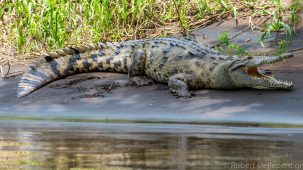
Découvrez les témoignages de voyageurs ayant fait appel à nos services pour leur voyage au Costa Rica !

Un voyage au Costa Rica insolite et authentique

Laissez-vous inspirer par nos différents itinéraires et faites-nous part de vos envies pour votre futur voyage au Costa Rica !
Voici une sélection de voyage au Costa Rica pour avoir un aperçu de notre savoir faire et des différentes approches que nous pouvons donner à votre voyage. En tant d’agence de voyage locale travaillant exclusivement sur mesure, nous allons personnalisé votre voyage de A à Z. Ces itinéraires peuvent tout à fait servir de base pour créer votre voyage cousu main, par des experts de la destination. Notre seul objectif : vous préparer un voyage entièrement personnalisable et qui vous ressemble. Nous sommes spécialisés dans les voyages insolites et la découverte de la faune et de la flore locale, notamment dans le cadre de randonnées aux paysages idylliques.
À partir de 1869€
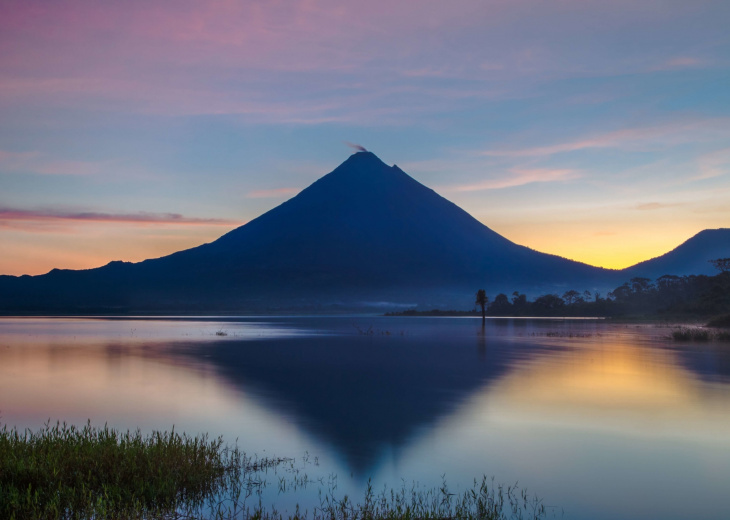
À partir de 3094€
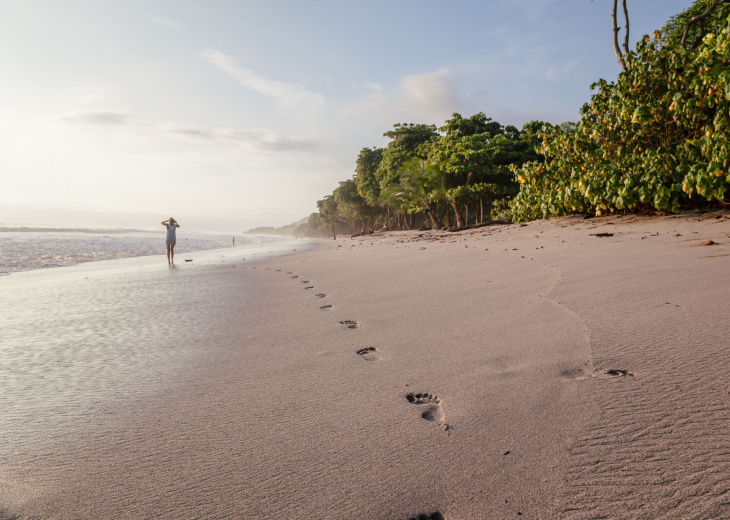
À partir de 2668€
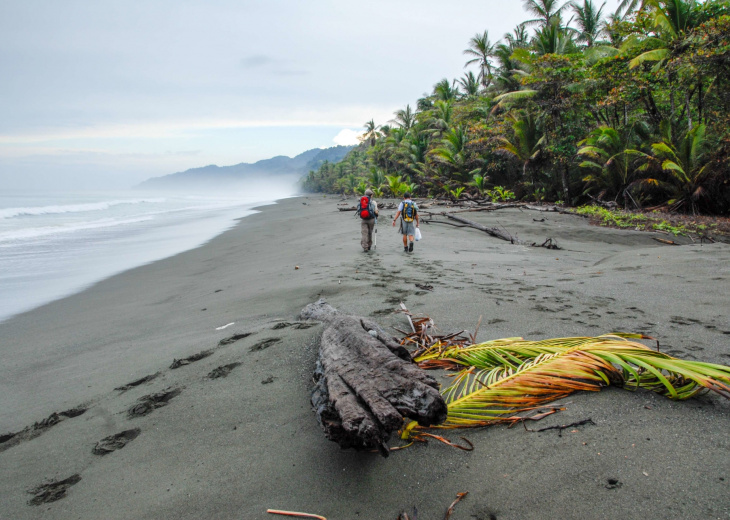
À partir de 1334€
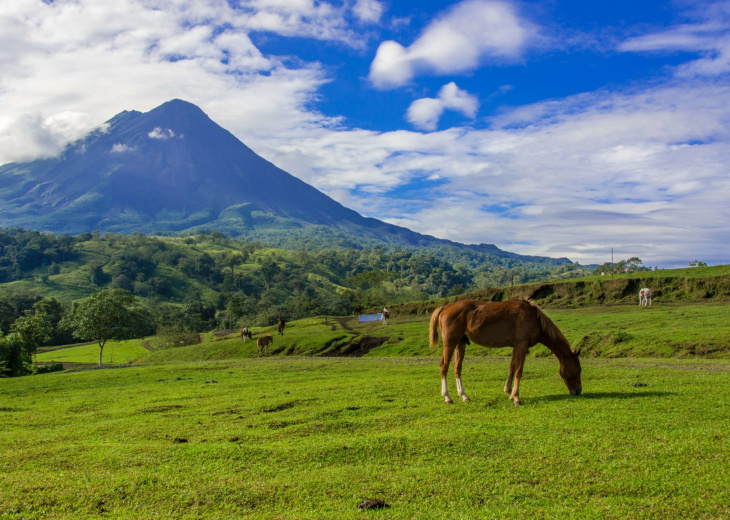
À partir de 1478€
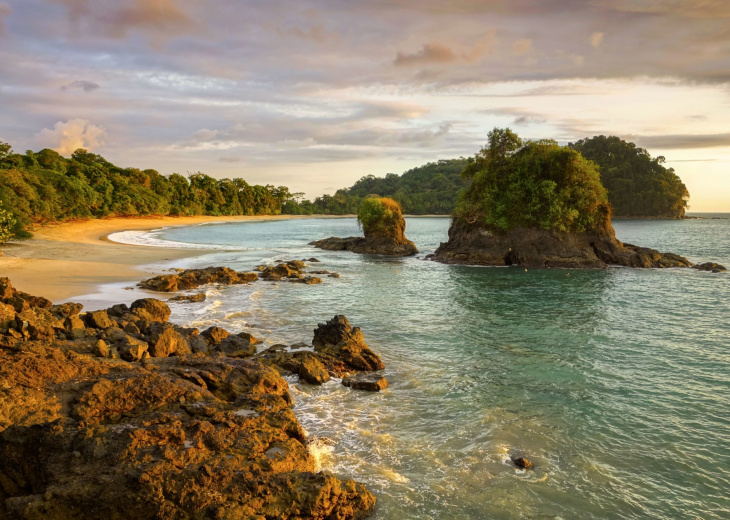
À partir de 1788€
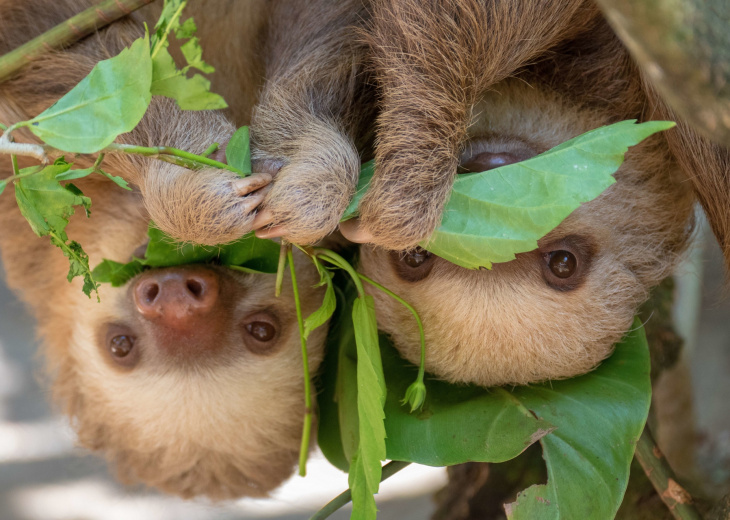
Découvrez les régions du Costa Rica
Guanacaste & le Nord : Le nord du pays regroupe le Guanacaste, l’Alajuela et l’Heredia. Composée de plaines, de volcans et d’une ouverture sur l’océan Pacifique, cette super région peut justifier à elle seule un voyage.
San José & le Centre : San José est la capitale du pays, forcément incontournable. Lieu culturel important de part sa densité de musées, la vallée centrale est également à découvrir pour ses parcs, volcans et zones rurales.
Puntarenas & la côte Pacifique : Allant de Puntarenas jusqu’au parc national du Corcovado, la côte Pacifique et le sud est un mélange harmonieux entre faune & flore terrestre et maritime. Une dualité dépaysante.
Puerto Limon & la côte Caraïbe : C’est la partie afro-caribéenne du pays. Les influences venues des autres îles de la mer des caraïbes se font ressentir dans les modes de vies et les architectures. Une belle illustration du mélange culturel au Costa Rica.
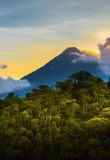
Ils reviennent de notre beau pays et nous font part de leur avis suite à leur voyage en Afrique du Sud. Découvrez leurs témoignages...
... et ce qu'ils disent de nous !
Laissez vous guider par vos envies pour concevoir votre prochain voyage au Costa Rica !
Vous rêvez de faire un voyage au Costa Rica en amoureux, en famille ou entre amis ? De découvrir la nature tropicale dans tous ses états ? De vous immerger dans une culture inconnue ? De goûter à l’exotisme d’une cuisine raffinée et typique ? De flâner sur les plus belles plages du monde ? De partir à la conquête des plus hauts sommets, et de vivre des aventures sportives sans pareille entre rafting, randonnée et bien d’autres activités ? Ne cherchez plus, quelle que soit votre envie de voyage, le Costa Rica sera votre prochaine destination de vacances !
Circuit autotour, trek et séjour : trois façons de découvrir le Costa Rica
Pour explorer le Costa Rica à votre rythme , nous vous conseillons nos circuits autotours . Au volant d’une voiture de location , vous gardez toute votre liberté d’action. La durée de votre voyage varie d’une à plusieurs semaines .
Terre d’aventure et de nature, le Costa Rica se prête par ailleurs admirablement aux treks . Entre deux randonnées en immersion dans les magnifiques paysages costaricains, vous vous déplacez ici aussi grâce à un véhicule de location .
Enfin, les séjours sont parfaits si vous souhaitez vous reposer de la vie quotidienne pendant quelques jours.
Vos hébergements tout confort au Costa Rica
Nous tenons à votre disposition de nombreux hébergements de tout type que nos conseillers ont testés et validés pour vous. Il s’agit d’hôtels avec ou sans piscine, de lodges, d’écolodges, d’haciendas ou encore de casas. En général, les petits-déjeuners sont inclus. Pour les treks les plus longs, vous êtes également amené à dormir dans des refuges de montagne. Vous avez bien sûr la possibilité de choisir vos hébergements en fonction de vos envies et de votre budget.
Nos programmes de voyage sur mesure au Costa Rica
Consultez toutes nos idées de voyage, puis contactez nos conseillers pour apporter toutes les modifications que vous souhaitez . Spécialistes du sur-mesure, nous vous donnons l’occasion de créer votre voyage idéal au Costa Rica !
Certains de nos itinéraires vous emmènent à la découverte des incontournables du pays, tandis que d’autres vous entraînent hors des sentiers battus . Les férus de sport et d’aventure trouvent aussi leur bonheur, tout comme les amoureux de la faune et de la flore et les amateurs de culture et de vie locale . Et comme nous avons bien conscience des spécificités de chaque voyageur, nous avons aussi conçu des voyages parfaits pour les familles et pour les voyages de noces !
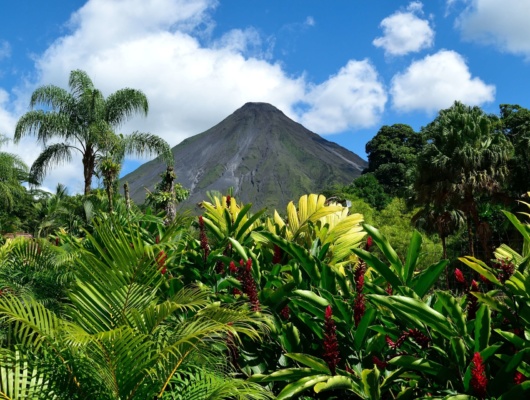
Conseils de voyage au Costa Rica
« San José », « Puerto Limon », « Nature », « Faune », « Flore », … Ces noms et ces mots résonnent en vous comme des rêves d’aventures mais vous ne savez pas réellement à quoi vous attendre ? Plongez dans notre guide de voyage au Costa Rica !
Nos articles organisés selon différentes thématiques vous racontent ce pays dans ce qu’il a de plus fascinant et enivrant !
La meilleure période pour voyager au Costa Rica
Que vous souhaitiez vous adonner à la randonnée, à l’observation des animaux, aux visites culturelles ou au farniente sur la plage, nous vous conseillons de partir au Costa Rica durant la saison sèche , autrement dit de décembre à avril. Les pluies sont alors rares et les températures avoisinent les 30°. Pour en savoir plus sur le climat costaricain, rendez-vous sur notre page Quand partir au Costa Rica !
À la découverte des incontournables du Costa Rica !
Le Costa Rica est doté de paysages superbes et d’une biodiversité d’une grande variété. Le Parc national de Tortuguero est ainsi célèbre pour ses vastes canaux et sa forêt tropicale dense. Situé dans la péninsule d’Osa, le Parc national Corcovado abrite une biodiversité considérée comme l’une des plus riches de la planète.
Les régions du nord-ouest sont dominées par le cône parfait du volcan Arenal . Au sud du volcan, sur la côte Pacifique, le Parc national Manuel Antonio présente un contraste saisissant, les plages immaculées étant bordées par une jungle luxuriante.
Bien d’autres sites mériteraient de trouver leur place dans cette liste, comme la Réserve de Monteverde ou la région de Guanacaste avec ses plages spectaculaires !
Que voir et que faire au Costa Rica ?
Situé au cœur de l’Amérique centrale, entre le Pacifique et la mer des Caraïbes, le Costa Rica se prête admirablement à un voyage de découverte de la faune et de la flore. Vous pouvez notamment observer les tortues du Parc national de Tortuguero , tout en naviguant sur son réseau de canaux.
Les sentiers de randonnées sont également innombrables. Faites l’ascension du volcan Arenal, puis détendez-vous dans ses sources chaudes naturelles ! Les treks vous amènent également à explorer les forêts tropicales des parcs nationaux Corcovado et Manuel Antonio. Laissez-vous aussi tenter par le parcours en tyrolienne de la Réserve de Monteverde !
Pour vous remettre de ces aventures, prélassez-vous sur le sable fin de la plage . Les côtes du Costa Rica sont par ailleurs propices à de nombreux sports nautiques. Le pays possède plusieurs spots de surf de renommée mondiale , tels que Tamarindo ou Santa Teresa. Vous pouvez également y pratiquer la plongée ou le snorkeling .
Les infos pratiques pour préparer sereinement votre voyage au Costa Rica
Le Costa Rica dispose de 4 aéroports internationaux. Toutefois, un seul est accessible au départ de l’aéroport Paris-Charles de Gaulle : l’ aéroport international Juan Santamariá de San José . Air France est en outre l’unique compagnie desservant cette ligne. La durée des vols est d’ environ 11 heures . Vous avez la possibilité d’utiliser le moteur de réservation de Bynativ pour simplifier l’achat de votre billet d’avion aller-retour.
Votre passeport doit être présenté à votre entrée au Costa Rica, mais aucun visa n’est obligatoire . Ensuite, vous pouvez éprouver le besoin de vous reposer de votre vol, mais aussi du décalage horaire qui est de 7 heures en hiver et de 8 heures en été. Pensez tout de même à récupérer des colóns costariciens , la monnaie locale ! Un colón vaut 0,0017 euro.
Une fois reposé, préparez-vous à commander votre premier plat costaricain en espagnol, langue officielle du pays ! La gastronomie costaricaine se caractérise par sa simplicité et par l’utilisation de savoureux produits locaux. N’hésitez pas à goûter au casado , le repas traditionnel combinant viande, riz, haricots et légumes. Les ceviches de poisson frais ou de fruits de mer sont également délicieux. Au petit-déjeuner, régalez-vous aussi de fruits tropicaux (papayes ou ananas) et d’un gallo pinto , plat emblématique du pays composé de riz et de haricots noirs sautés avec des oignons et des épices !
Le Costa Rica de A à Z

Vocabulaire essentiel pour votre voyage au Costa Rica
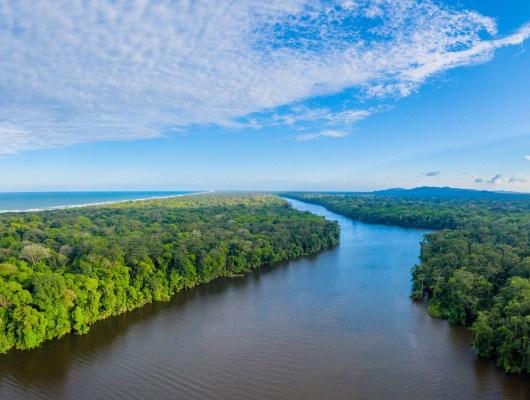
Les incontournables de la Côte Caraïbe
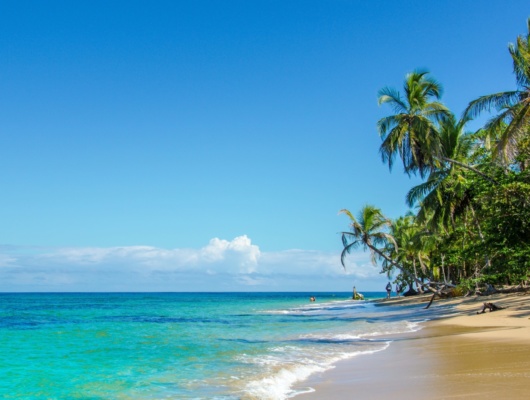
Où et quand partir au Costa Rica ?
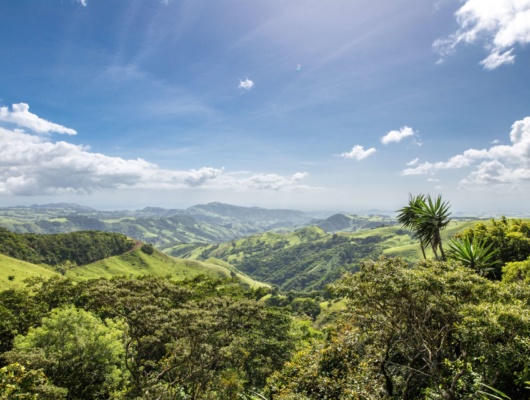
La côte Caraïbe : histoire & influences
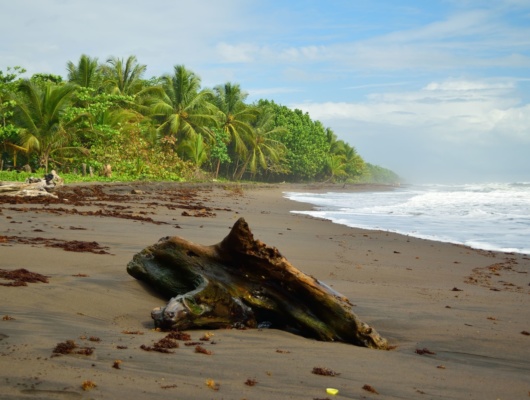
Extraordinary Journeys
Tailored to you.
We’re a team of explorers who scout every corner of Costa Rica to create personalized, high-end and ultra-luxe travel experiences for the sophisticated traveler. Spark the joy of discovery, every traveler has their own story to tell.
What Makes Us Different

Sustainability
Our luxury trips carry responsible travel principles close to heart, not only seeking to minimize negative impact, but to influence a positive change at all levels of operation, from traveler, to destination, to industry. Why consume the world when you can collaborate with it?

At Journey Costa Rica we´re all about reinvention, whether that´s viewing the path well-trodden with a creative lens or proposing the unimaginable. We offer a new option for engaging, bespoke itineraries that inspire, challenge, and illuminate from an opulent angle.

With our extensive experience in the luxury travel world, we know which elements make a great journey exceptional. We understand where an exclusive villa is the superior choice, when a local super host will inspire new insights, and how special access can transform the prototype.
Committed to
Sustainable travel.
Costa Rica is a model for conscious practices that seek to conserve the amazing wildlife, environments, and communities that make the country so special. Journey celebrates this forward-thinking approach to travel, which is central to how we operate, and who we choose to work with.
- Travel Experiences
Stir your imagination with a collection of exhilarating itineraries dreamed up by our experts. Whether you find your inspiration in the subtle moments, the daring, or sensorial, our programs encompass experiences for all styles of luxury travel, made-to-measure. Beach lovers, adventurers, kids, couples, and eco-conscious explorers, all welcome.
Bring All the Kids
Conservation conscious, brand new you, adrenaline junkie, leave the kids behind, nature but make it fancy, bring all the kids, let's start, planning your experience.
Our luxury, tailor-made journeys in Costa Rica reflect the individuality of each traveler, connecting you to your own authentic experience. With personalized attention, imaginative programs, and 24/7 in-country support, we´ll take care of the details while you live in the moment.
Our Stories

Crafting Meaningful Family Adventures in Costa Rica
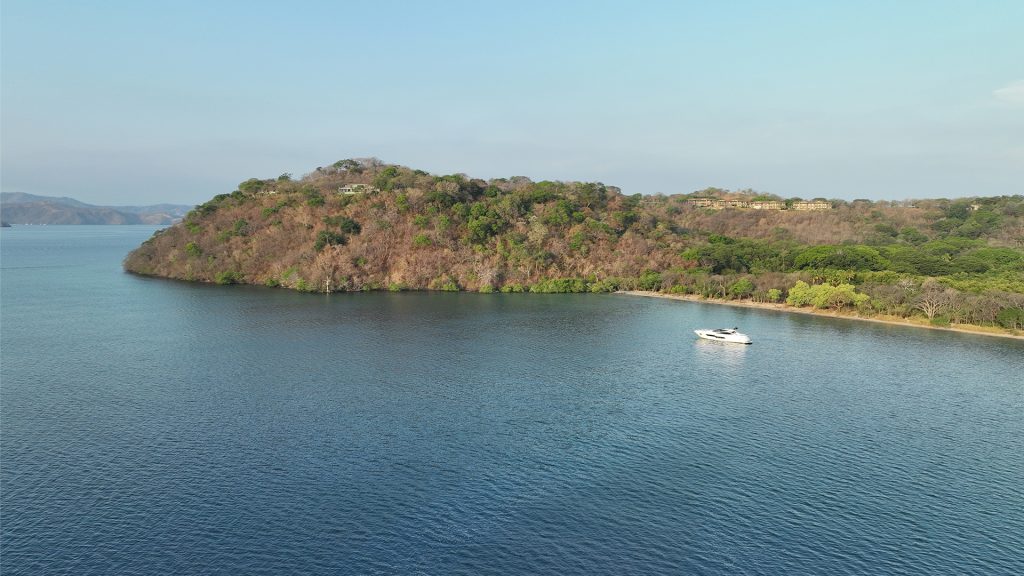
5 Ways to Explore the Wonders of Costa Rica’s Coastlines
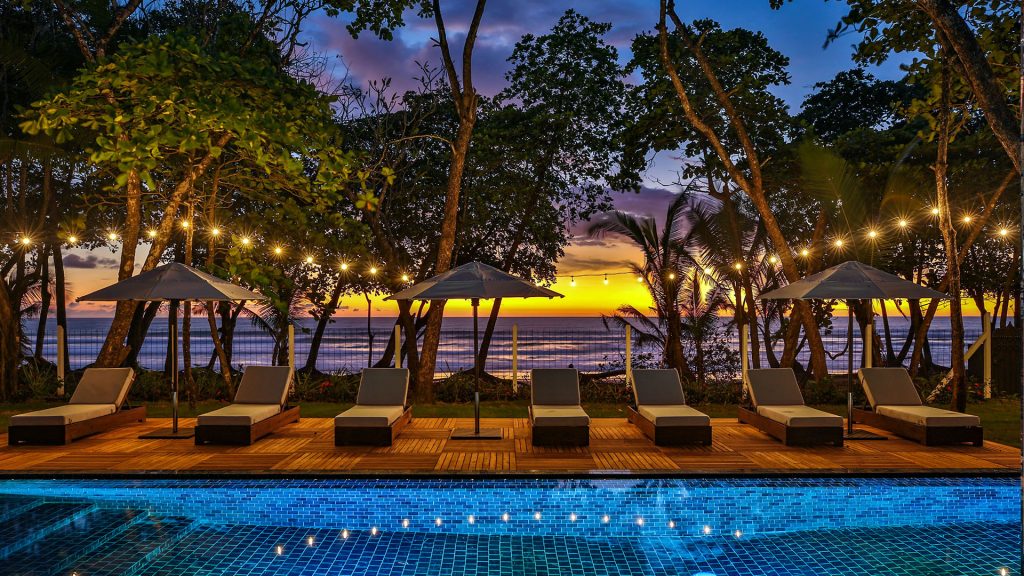
Our Top Picks for Festive Villa Availability
Traveler's reviews, sign up to our newsletter.
We are Journey, an award-winning travel company that specializes in creating luxury, tailor-made itineraries as individual as our travelers. After 20 years as leaders in Mexico´s luxury travel world, we expanded to offer our renowned service and outstanding luxury trips in Costa Rica.
quick links
- Destinations
- Accomodations
Say Hi to us
- +1-619-819-5111
- [email protected]
- Tamarindo, Costa Rica
- All Rights Reserved
- Journey Costa Rica
- Privacy Policy
- Terms And Conditions
- Passer au contenu principal
- Passer à « À propos de ce site »
Sélection de la langue
Aidez-nous à améliorer notre site Web. Répondez à notre sondage !
COVID-19 : conseils de santé pour tous les voyageurs
Conseils aux voyageurs pour le Costa Rica
Dernière mise à jour : Santé – mise à jour éditoriale
Date de la dernière mise à jour : 24 septembre 2024 11:49 ET
Sur cette page
Niveau de risque, exigences d'entrée et de sortie, lois et coutumes, catastrophes naturelles et climat, besoin d'aide, costa rica - faites preuve d'une grande prudence.
Faites preuve d’une grande prudence au Costa Rica en raison de la criminalité.
Haut de page
Crimes mineurs
Les crimes mineurs, impliquant des pickpockets et des vols de sacs à main, sont fréquents. Les touristes, perçus comme des gens riches, sont souvent ciblés pour ce type de vols.
Les crimes contre les propriétés, tels que les cambriolages de voiture et de domiciles, ou les vols de voitures, sont fréquents. Les vols de passeports surviennent également de façon régulière, surtout en haute saison touristique, de novembre à mai et de juillet à août.
Les voleurs travaillent souvent en équipe. L'un d'entre eux s’occupe de détourner l'attention des victimes tandis que l'autre s'empare de leurs biens. Les vols sont fréquents dans :
- les zones touristiques populaires, y compris aux belvédères;
- les autobus, les trains, les gares routières et ferroviaires ainsi que dans les aéroports;
- les halls d'hôtels;
- les restaurants, y compris les patios situés près des rues.
Lors de votre séjour au Costa Rica :
- rangez toujours en lieu sûr vos effets personnels, y compris votre passeport et vos autres documents de voyage;
- gardez sur vous votre passeport, y compris le timbre d'entrée au Costa Rica reçu à votre arrivée;
- évitez de faire étalage de richesse ou de porter des bijoux de grande valeur;
- ne transportez que de petites quantités d'argent comptant;
- évitez les endroits déserts;
- évitez de marcher seul après la tombée de la nuit;
- soyez conscient de votre environnement, surtout dans les endroits touristiques achalandés;
- portez une attention particulière à votre environnement lorsque vous retirez de l'argent aux guichets automatiques.
San José
À San José, les quartiers où les vols sont les plus fréquents sont ceux :
- du terminus d’autobus Coca Cola, entre le Paso de la Vaca, la Calle 12 et le marché Coca Cola;
- du centre-ville, entre l'hôpital San Juan de Dios, le Musée national, l'Avenida 1 et l'Avenida 14;
- du Mercado central;
- des parcs publics.
Côte du Pacifique
Dans la province de Puntarenas, les vols se produisent surtout :
- à Dominical;
- à Jacó, y compris la zone d'observation des crocodiles le long de la rivière Tárcoles;
- dans le parc national Manuel-Antonio;
- à Quepos;
- à Cóbano, y compris les petites villes balnéaires de Mal País, Montezuma et Santa Teresa, ainsi que le port de Puntarenas.
Côte des Caraïbes
Sur la côte des Caraïbes, les vols se produisent surtout :
- à Cahuita;
- à Puerto Limón;
- à Puerto Viejo.
Cambriolages de domiciles
Des cambriolages de domiciles surviennent. Les cambrioleurs peuvent cibler les logements locatifs ou les propriétés appartenant à des étrangers.
- Séjournez dans des logements bien sécurisés
- Assurez-vous de garder les fenêtres fermées et les portes verrouillées durant la nuit et lorsque vous êtes absent
Cambriolages de voitures
Les cambriolages de voitures et les vols de voitures sont très courants dans l’ensemble du pays. Les véhicules de location et les voitures de luxe sont une cible de choix pour les voleurs. Les vols se produisent souvent dans les stationnements :
- des hotels;
- des supermarchés;
- des restaurants;
- des magasins;
- des parcs nationaux;
- des plages.
Si vous conduisez au Costa Rica :
- familiarisez-vous avec votre itinéraire avant de partir;
- gardez les fenêtres fermées et les portes verrouillées en tout temps;
- gardez vos effets personnels hors de portée;
- garez votre voiture dans un stationnement sûr, surtout pour la nuit;
- ne laissez jamais vos effets personnels dans un véhicule sans surveillance, même dans le coffre arrière;
- ne vous arrêtez pas pour réparer une crevaison dans un endroit isolé et méfiez-vous des inconnus qui vous proposent de l’aide;
- assurez-vous qu’une assistance routière d’urgence et qu’une assurance automobile sont offertes par l'agence de location au moment de louer une voiture.
Crimes violents
Des crimes violents, dont des meurtres et des vols à main armée, se produisent. Le trafic de drogue est chose courante et la plupart des incidents sont liés à la drogue. Les provinces les plus touchées sont :
- Limón;
- Puntarenas;
- San José.
Bien que peu fréquentes, de violentes agressions contre des voyageurs se sont déjà produites sur la côte des Caraïbes :
Si on vous menace, ne résistez pas et remettez votre argent et vos objets de valeur sans attendre.
Il se commet des fraudes liées aux cartes de crédit et à l’utilisation des guichets automatiques.
Lorsque vous utilisez votre carte de débit ou de crédit :
- soyez vigilant si vos cartes sont manipulées par d’autres personnes pour un paiement;
- utilisez des guichets automatiques situés dans des endroits publics ou à l’intérieur d’une banque ou d’un commerce;
- évitez les lecteurs de cartes à l’aspect inhabituel;
- couvrez le clavier d’une main lorsque vous entrez votre NIP;
- vérifiez votre relevé de compte pour y détecter toute transaction non autorisée.
La fraude à l’étranger
Aliments et boissons contenant des drogues
Les collations, boissons, gommes à mâcher ou cigarettes peuvent contenir de la drogue et vous exposer au risque de vol ou d’agression sexuelle.
- Méfiez-vous de ces produits offerts par de nouvelles connaissances;
- Ne laissez jamais vos aliments ou vos boissons sans surveillance ou sous la responsabilité d’inconnus.
Alcool non réglementé
On rapporte des victimes dues à la consommation d'alcool non réglementé et frelaté ayant des niveaux élevés de méthanol.
- Achetez de l’alcool dans des établissements réputés
- Demandez de l’assistance médicale si vous commencez à vous sentir mal
Alcool, drogues et voyages
La sécurité des femmes
Les femmes voyageant seules peuvent subir certaines formes de harcèlement ou de violence verbale.
Des agressions sexuelles ont été commises contre des étrangères dans des stations balnéaires et par des chauffeurs de taxi à San José.
Liens utiles
- Conseils pour les voyageuses
- Agressions sexuelles à l'étranger
Manifestations
Des manifestations ont lieu de temps à autre, surtout à San José.
Même les manifestations qui se veulent pacifiques peuvent soudainement donner lieu à des actes de violence. Elles peuvent aussi perturber la circulation et les transports publics.
La loi costaricienne interdit aux étrangers de prendre part à toute activité politique. Participer à une manifestation ou à une activité politique pourrait vous mettre à risque de détention et/ou d’expulsion.
- Évitez les endroits où se tiennent des manifestations et de grands rassemblements;
- Suivez les directives des autorités locales;
- Consultez régulièrement les médias locaux pour vous tenir au courant des manifestations en cours.
Rassemblements de masse (événements à grande échelle)
Activités aquatiques
Les eaux côtières peuvent être dangereuses. Les contre-courants sont fréquents. Plusieurs noyades ont lieu chaque année.
Très peu de plages sont surveillées par des sauveteurs. Il n'y a pas de système d'avertissement pour prévenir de conditions dangereuses.
- Soyez prudent lorsque vous nagez;
- Ne vous baignez jamais seul, après les heures d'ouverture des plages ou en dehors des zones balisées;
- Consultez les résidents et les voyagistes pour obtenir des informations sur les risques éventuels et les zones de baignade sécuritaires;
- Suiveillez les alertes météorologiques;
- Suivez les directives des autorités locales.
- Conseils pour les voyageurs - Office du tourisme du Costa Rica (en anglais)
- Sécurité nautique à l'étranger
Tourisme d'aventure
Les activités de plein air, telles que la descente en eaux vives, la plongée, le bungee, les tyroliennes et les autres sports d'aventure, comportent certains dangers, surtout si on est mal préparé. Les sentiers sont rarement balisés et les conditions climatiques peuvent changer rapidement, y compris en été.
Les dispositifs de sécurité des petits bateaux utilisés lors des excursions sur les lacs et les rivières ne sont pas toujours fiables.
Les animaux sauvages comme les jaguars, les pumas, les cochons sauvages et les serpents venimeux, sont bien présents dans la jungle costaricaine. Ils pourraient mettre votre vie en danger.
Si vous avez l'intention de pratiquer le tourisme d'aventure :
- ne partez jamais seul et ne vous séparez pas de vos compagnons de randonnée;
- obtenez de l’information précise sur votre activité et sur l’environnement dans lequel vous la pratiquerez avant de partir;
- souscrivez une assurance voyage qui couvre des services de secours par hélicoptère et l’évacuation médicale;
- assurez-vous d’être suffisamment en forme pour relever les défis de votre activité;
- ne vous aventurez pas à l’extérieur des sentiers balisés;
- évitez de camper ou dormir sur les plages;
- assurez-vous d’avoir tout l’équipement nécessaire et d'apporter de l'eau en quantité suffisante;
- tenez-vous au courant de la météo et des sources de danger;
- soyez à l’affût des symptômes du mal aigu des montagnes, qui peut être mortel;
- n’utilisez pas d’équipement duquel vous doutez de la sécurité;
- informez un proche de votre itinéraire.
Parcs nationaux
Vous devez obtenir un permis pour accéder aux parcs nationaux.
Parcs nationaux - Office du tourisme du Costa Rica (en anglais)
Sécurité routière
L'état des routes et la sécurité routière laissent à désirer dans tout le pays. Le Costa Rica a l'un des taux d'accidents de la route les plus élevés au monde.
État des routes
La plupart des routes ne sont pas pavées. Les routes pavées sont généralement en mauvais état. Le réseau routier peut être dangereux, surtout pendant la saison des pluies, en raison :
- des nids de poule;
- des courbes prononcées;
- du manque de panneaux de signalisation;
- des glissements de terrain;
- des routes étroites ou non pavées.
Habitudes de conduite
Les conducteurs ne respectent pas le Code de la route. Ils conduisent souvent sans phare la nuit.
- soyez vigilant lorsque vous arrêtez à un feu de circulation ou à un d'arrêt;
- gardez les portes verrouillées et les fenêtres fermées en tout temps;
- ne laissez pas d'objets de valeur à la vue de tous;
- évitez de voyager de nuit.
Transports publics
Le service d’autobus n’est pas fiable. Les horaires et les itinéraires ne sont pas toujours justes. Les véhicules sont souvent en retard en raison de la circulation et de l'état des routes. Les itinéraires peuvent également varier par rapport à ceux initialement annoncés.
Les pickpockets ciblent souvent les touristes dans les autobus publics.
Si vous embarquez dans un autobus public :
- gardez vos cartes d'identités et vos objets de valeur sur vous;
- évitez de placer vos sacs dans le compartiment supérieur ou sous votre siège;
- évitez de vous endormir.
Des agents de police contrôlent parfois les passagers dans les transports publics. Ils se servent souvent de ces contrôles pour déterminer si les voyageurs ont dépassé la période d'exemption de visa de 90 jours.
Gardez sur vous votre preuve de séjour légal.
Les taxis officiels sont sécuritaires. Ils sont de couleur orange, à l'aéroport, et rouges avec un triangle jaune sur le côté, ailleurs dans le pays.
- Ne montez que dans des taxis officiels réservés à l'avance;
- Ne montez jamais dans un taxi aux stations de taxis et ne les hélez pas dans la rue;
- Notez le nom et le numéro de plaque du chauffeur;
- Assurez-vous que le chauffeur utilise le compteur;
- Ne montez pas à bord des taxis collectifs.
Transport aérien
Nous n’évaluons pas dans quelle mesure les compagnies aériennes intérieures étrangères respectent les normes internationales de sécurité.
Renseignements sur les vols intérieurs dans d’autres pays
Ce sont les autorités d’un pays ou d’un territoire qui décident qui peut en franchir les frontières. Le gouvernement du Canada ne peut pas intervenir en votre nom si vous ne répondez pas aux exigences d’entrée et de sortie du pays ou territoire où vous vous rendez.
L’information contenue dans cette page a été obtenue auprès des autorités costaricaines. Elle peut cependant changer à tout moment.
Confirmez ces renseignements auprès des Représentants étrangers au Canada .
Les exigences d’entrée varient selon le type de passeport que vous utilisez pour voyager.
Avant de partir, vérifiez auprès de votre transporteur quelles sont ses exigences au sujet des passeports. Ses règles sur la durée de validité des passeports sont peut-être plus strictes que les règles d’entrée du pays où vous vous rendez.
Passeport canadien régulier
Votre passeport doit être valide pour la durée de votre séjour.
Passeport pour voyages officiels
Des exigences d’entrée différentes peuvent s’appliquer.
Voyages officiels
Passeport indiquant un identifiant de genre «X»
Bien que le gouvernement du Canada délivre des passeports indiquant un identifiant de genre «X», il ne peut garantir votre entrée ou votre transit dans d’autres pays. Vous pourriez faire face à des restrictions d’entrée dans les pays qui ne reconnaissent pas l’identifiant de genre «X». Avant de partir, vérifiez cette information auprès des représentants étrangers de votre pays de destination.
Autres documents de voyage
Les exigences d’entrée peuvent être différentes si vous voyagez avec un passeport temporaire ou un titre de voyage d’urgence. Avant de partir, renseignez-vous auprès des représentants étrangers du pays où vous voulez entrer.
- Représentants étrangers au Canada
- Passeports canadiens
Visa de tourisme : non requis pour les séjours de moins de 180 jours Visa d'affaires : requis Visa d'étudiant : requis
Durée du séjour
L’agent d’immigration déterminera la durée autorisée de votre séjour lorsque vous entrerez au Costa Rica. En tant que touriste, vous pouvez bénéficier d’un séjour d’au plus 180 jours.
Si vous avez l'intention de rester plus de 180 jours, vous devez obtenir un statut de résident auprès de la Dirección General de Migración y Extranjería.
Vous risquez l’expulsion si vous dépassez la période autorisée de 180 jours. Les personnes expulsées du Costa Rica ne sont pas autorisées à y revenir avant 5 à 10 ans.
- Département de l'Immigration - Gouvernement du Costa Rica (en espagnol)
Timbre d’entrée
Vous devez obtenir un timbre d’entrée auprès des agents de l’immigration lorsque vous entrez au Costa Rica.
Autres exigences d'entrée
Les douaniers peuvent vous demander de leur présenter un billet pour un vol de retour ou de continuation ainsi qu’une preuve que vous disposez de fonds suffisants pour la durée de votre séjour.
Mineurs ayant une double citoyenneté
Le Costa Rica applique de façon rigoureuse les exigences relatives au départ des personnes mineures ayant une double citoyenneté.
Le passeport canadien d'un enfant ayant la double citoyenneté doit être accompagné d'une autorisation de départ du Costa Rica, délivrée par les autorités de l'immigration. L'autorisation accordée peut être temporaire ou permanente, et sera enregistrée dans le système électronique de l'immigration du Costa Rica.
La demande d'approbation doit être faite conjointement par les deux parents, avant le départ, à l’une ou l’autre des autorités suivantes :
- le département de l'Immigration du Costa Rica;
- l'ambassade du Costa Rica au Canada.
Plusieurs enfants n’ont pas pu quitter le Costa Rica parce qu’ils n’avaient pas les documents appropriés.
Les mineurs ayant une double citoyenneté qui voyagent seuls doivent également avoir le consentement écrit et légalement certifié de leurs deux parents.
Les enfants en voyage
Renseignez-vous sur comment voyager avec des enfants .
Fièvre jaune
Renseignez-vous sur la possibilité d’exigences d’entrée concernant la fièvre jaune (section sur les vaccins).
Conseils de santé aux voyageurs pertinents
- Avis mondial sur la rougeole - 13 mars 2024
- Virus Zika : Conseils à l’intention des voyageurs - 31 août 2023
- COVID-19 et voyages internationaux - 13 mars 2024
- Dengue: Conseils à l'intention des voyageurs - 9 septembre 2024
Cette section contient des informations sur les risques sanitaires éventuels et les restrictions régulièrement constatées ou en cours dans la destination. Suivez ces conseils pour réduire votre risque de tomber malade en voyage. Tous les risques ne sont pas énumérés ci-dessous.
Consultez un fournisseur de soins de santé ou visitez une clinique santé-voyage de préférence six semaines avant votre départ pour obtenir des conseils et des recommandations personnalisées en matière de santé.
Vaccins de routine
Assurez-vous que vos vaccins de routine , conformément à votre province ou territoire , peu importe votre destination de voyage.
Parmi ces vaccins, citons le vaccin contre la rougeole, les oreillons et la rubéole (ROR), la diphtérie, le tétanos, la coqueluche, la polio, la varicelle, la grippe et d'autres.
Vaccins et médicaments pré-voyage
Vous pouvez être à risque de maladies évitables lors de votre voyage dans cette destination. Consultez un professionnel de la santé voyage pour savoir quels médicaments ou vaccins pourraient vous convenir, en fonction de votre destination et de votre itinéraire.
Il existe un risque d' hépatite A dans cette destination. C'est une maladie du foie. Les gens peuvent contracter l'hépatite A s'ils ingèrent des aliments ou de l'eau contaminés, mangent des aliments préparés par une personne infectieuse ou s'ils ont un contact physique étroit (comme des relations sexuelles orales ou anales) avec une personne infectieuse, bien qu'un contact occasionnel entre les personnes ne propage pas l'hépatite A virus.
Prenez des précautions en matière de sécurité alimentaire et d’eau et lavez-vous souvent les mains.
La fièvre jaune est une maladie causée par un flavivirus que se transmet par la piqûre d'un moustique infecté.
Les voyageurs se font vacciner soit parce qu'il s'agit d'une exigence pour entrer dans certains pays, soit parce qu'il est recommandé de le faire pour se protéger contre la fièvre jaune.
- Il n'y a aucun risque de fièvre jaune dans ce pays.
Les exigences liées à l'entrée*
- Une preuve de vaccination contre la fièvre jaune est exigée si vous venez d'un pays où sévit la fièvre jaune , à l'exclusion de l'Argentine et du Panama, ou si vous venez de Tanzanie ou de Zambie.
Recommendation
- La vaccination n'est pas recommandée.
- Discutez de vos plans, de vos activités et de vos destinations de voyage avec un professionnel de la santé.
- Il est important que les voyageurs communiquent avec un Centre de vaccination contre la fièvre jaune désigné bien à l'avance de leur voyage pour assurer leur vaccination.
À propos de la fièvre jaune
Centre de vaccination contre la fièvre jaune désigné *Il est important de souligner que les exigences liées à l'entrée (en anglais seulement) dans un pays pourraient ne pas correspondre à votre risque de contracter la fièvre jaune à cet endroit. Il est également recommandé de communiquer avec la mission diplomatique ou consulaire de la ou des destinations où vous comptez vous rendre pour vérifier s'il y a d'autres exigences d'entrée.
La rougeole est une maladie virale très contagieuse. Elle peut se propager rapidement d'une personne à l'autre par contact direct et par les gouttelettes dans l'air.
Toute personne qui n'est pas protégée contre la rougeole risque d'en être infectée lorsqu'elle voyage à l'étranger.
Peu importe où vous allez, consultez un professionnel de la santé avant votre départ pour vous assurer d'être entièrement protégé contre la rougeole.
L'hépatite B est un risque dans toutes les destinations. Il s’agit d’une maladie virale du foie qui se transmet facilement d’une personne à une autre par exposition au sang et aux liquides organiques contenant le virus de l’hépatite B. Les voyageurs susceptibles d'être exposés au sang ou à d'autres fluides corporels (par exemple, par contact sexuel, traitement médical, partage d'aiguilles, tatouage, acupuncture ou exposition professionnelle) courent un risque plus élevé de contracter l'hépatite B.
La vaccination contre l'hépatite B est recommandée à tous les voyageurs. Prévenez l’infection par l’hépatite B en pratiquant des relations sexuelles protégées, en utilisant uniquement du matériel médical neuf et stérile et en vous faisant tatouer et percer uniquement dans des environnements qui respectent les réglementations et normes de santé publique.
La maladie à coronavirus (COVID-19) est une maladie infectieuse virale qui peut se propager d’une personne à l’autre par un contact direct et par des gouttelettes projetées dans l’air.
Il est recommandé que tous les voyageurs admissibles reçoivent la série complète d’un vaccin contre la COVID-19 ainsi que toute dose supplémentaire recommandée au Canada avant de voyager. Les données probantes révèlent que les vaccins sont très efficaces pour prévenir les formes graves de la COVID-19, les hospitalisations et la mort. Bien que la vaccination offre une meilleure protection contre les maladies graves, vous pouvez toujours être exposé au risque d'infection par le virus responsable de la COVID-19. Quiconque n’étant pas entièrement vacciné court un risque accru de contracter le virus qui cause la COVID-19, ainsi qu'un risque accru d'être gravement malade lors d’un voyage à l’étranger.
Avant de voyager, vérifiez les exigences d'entrée/sortie de votre destination en matière de vaccination contre la COVID-19.Peu importe votre destination, discutez avec un professionnel de la santé avant de voyager afin de vous assurer d’être bien protégé contre la COVID-19.
La meilleure façon de se protéger contre la grippe saisonnière est de se faire vacciner chaque année. Faites-vous vacciner contre la grippe au moins 2 semaines avant de voyager.
La grippe est présente dans le monde entier.
- Dans l'hémisphère Nord, la saison grippale s'étend généralement de novembre à avril.
- Dans l'hémisphère Sud, la saison grippale s'étend généralement entre avril et octobre.
- Sous les tropiques, l'activité grippale est présente toute l'année.
Le vaccin contre la grippe disponible dans un hémisphère peut n’offrir qu’une protection partielle contre la grippe dans l’autre hémisphère.
Le virus de la grippe se transmet d'une personne à l'autre lorsqu'elle tousse ou éternue ou en touchant des objets et des surfaces contaminés par le virus. Lavez-vous souvent les mains et portez un masque si vous avez de la fièvre ou des symptômes respiratoires.
Le paludisme est une maladie grave et parfois mortelle causée par des parasites transmis par les piqûres de moustiques.
Il existe un risque de paludisme dans certaines zones et/ou à une certaine période de l'année dans cette destination.
Des médicaments antipaludéens peuvent être recommandés en fonction de votre itinéraire et de la période de l'année à laquelle vous voyagez. Consultez un professionnel de la santé ou visitez une clinique de santé-voyage avant de voyager pour discuter de vos options. Il est recommandé de le faire 6 semaines avant le voyage, cependant, c'est toujours une bonne idée à tout moment avant de partir.
Protégez-vous des piqûres de moustiques en tout temps :
- Couvrez votre peau et utilisez un insectifuge approuvé sur la peau découverte.
- Excluez les moustiques de votre espace de vie avec des moustiquaires et/ou des portes et fenêtres fermées et bien scellées.
- Utilisez des moustiquaires imprégnées d'insecticide si les moustiques ne peuvent pas être exclus de votre espace de vie.
- Portez des vêtements traités à la perméthrine.
Si vous développez des symptômes similaires au paludisme lorsque vous voyagez ou jusqu'à un an après votre retour à la maison, consultez immédiatement un professionnel de la santé. Dites-leur où vous avez voyagé ou habité.
La rage est transmise par les chiens et certains animaux sauvages, notamment les chauves-souris, dans cette destination. La rage est une maladie mortelle qui se transmet aux humains principalement par les morsures ou les griffures d'un animal infecté. Pendant le voyage, prenez des précautions , notamment en vous tenant à distance des animaux (y compris les chiens en liberté) et en surveillant de près les enfants.
Si vous êtes mordu ou égratigné par un animal lors d'un voyage, lavez immédiatement la plaie avec de l'eau propre et du savon, et consultez un professionnel de la santé. Le traitement antirabique est souvent disponible dans cette destination.
Avant de voyager, consultez un professionnel de la santé au sujet de la vaccination contre la rage. Elle peut être recommandée pour les voyageurs qui présentent un risque élevé d'exposition (par exemple, les vétérinaires et les travailleurs de la faune, les enfants, les voyageurs d'aventure et les spéléologues, ainsi que les personnes en contact étroit avec des animaux).
Précautions pour la nourriture et l'eau
De nombreuses maladies peuvent être causées par la consommation d'aliments ou de boissons contaminées par des bactéries, des parasites, des toxines ou des virus, ou par la baignade dans une eau contaminée.
- Pour en savoir plus sur les précautions à prendre en matière de nourriture et d'eau pour éviter de tomber malade, consultez notre page mangez et buvez en toute sécurité à l'étranger . Rappelez-vous : N'ingérez rien qui n'ait été bouilli, cuit ou pelé!
- Évitez de vous mettre de l'eau dans les yeux, la bouche ou le nez lorsque vous vous baignez ou participez à des activités en eau douce (ruisseaux, canaux, lacs), particulièrement après une inondation ou de fortes pluies. L'eau peut sembler propre, mais elle peut quand même être polluée ou contaminée.
- Évitez d'inhaler ou d'avaler de l'eau lorsque vous vous baignez, prenez une douche ou nagez dans des piscines ou des spas.
La diarrhée du voyageur est la maladie qui touche le plus fréquemment les voyageurs. Elle se transmet par la consommation d'eau ou d'aliments contaminés.
Le risque de contracter la diarrhée du voyageur est accru dans les régions où les conditions de salubrité et d'hygiène sont déficientes. Faites attention à ce que vous mangez et buvez.
Le traitement le plus important contre la diarrhée du voyageur est la réhydratation (buvez beaucoup de liquides). Apportez des sels pour réhydratation orale lors de votre voyage.
La fièvre typhoïde est une infection bactérienne transmise par l’eau ou d’aliments contaminés. Le risque est plus élevé pour les enfants, les voyageurs allant vers les zones rurales, visiter des amis et parent ou pendeant une longue période de temps.
Les voyageurs visitant des régions à risque de fièvre typhoïde, surtout ceux exposés à des endroits avec mauvaises conditions d’hygiène devraient parler à un professionnel de la santé de vaccination.
Préventions des piqûres d'insectes
De nombreuses maladies sont transmises par les piqûres d'insectes infectés tels que les moustiques, les tiques, les puces ou les mouches. Lorsque vous voyagez dans des zones où des insectes infectés peuvent être présents :
- Utilisez un insectifuge (insecticide) sur la peau exposée
- Couvrez-vous avec des vêtements amples, de couleur claire, faits de matériaux à tissage serré telle que le nylon ou le polyester
- Réduisez au minimum l'exposition aux insectes
- Utilisez une moustiquaire lorsque vous dormez à l'extérieur ou dans des bâtiments qui ne sont pas entièrement clos
Pour en savoir plus sur la manière dont vous pouvez réduire votre risque d'infection et de maladie causée par les piqûres, tant au pays qu'à l'étranger, consultez notre page sur la prévention des piqûres d’insectes .
Découvrez quels types d'insectes sont présents là où vous voyagez, quand ils sont les plus actifs et les symptômes des maladies qu'ils propagent.
Il y a un risque de chikungunya dans ce pays. Le niveau de risque peut varier par :
- année
- région
- élévation
Le virus qui cause le chikungunya est transmis par la piqûre d'un moustique infecté. Il peut provoquer habituellement de la fièvre et des douleurs articulaires de type arthritique. Dans certains cas, la douleur articulaire peut être sévère et durer des mois ou des années.
Protégez-vous contre les piqûres de moustiques en tout temps.
Pour en savoir plus :
Prévention des piqûres d’insectes et des parasites Chikungunya
- Dans ce pays, la dengue constitue un risque pour les voyageurs. C’est une maladie virale transmise aux humains par les piqûres de moustiques.
- La dengue peut causer des symptômes grippaux. Dans certains cas, elle peut entraîner une dengue sévère, qui peut être mortelle.
- Le niveau de risque de contracter la dengue change selon les saisons et varie d’une année à l’autre. Le niveau de risque varie également entre les régions d’un même pays et peut dépendre des élévations de ces régions.
- Les moustiques porteurs de la dengue piquent habituellement pendant le jour, particulièrement autour du lever et du coucher du soleil.
- Protégez-vous contre les piqûres de moustiques. Il n’existe aucun vaccin ni médicament au Canada pour prévenir la dengue.
En savoir plus : Dengue Prévention des piqûres d’insectes et des parasites
Le virus Zika est un risque dans ce pays.
Le virus Zika se transmet principalement par la piqûre d’un moustique infecté. Il peut aussi être transmis sexuellement. Le virus Zika peut causer de graves anomalies congénitales.
Pendant votre voyage :
- Prévenir les piqûres de moustiques en tout temps.
- Utilisez correctement les préservatifs ou évitez tout contact sexuel, surtout si vous êtes enceinte.
Si vous êtes enceinte ou planifiez une grossesse, vous devriez discuter des risques potentiels liés à un voyage vers cette destination avec votre fournisseur de soins de santé. Vous pouvez choisir d’éviter ou de reporter votre voyage.
Pour plus d’informations, consultez Virus Zika : Si vous êtes enceintes ou envisagez de la devenir.
La trypanosomiase américaine (maladie de Chagas) est un risque dans ce pays. Elle est causée par un parasite transmis par un insecte triatome infecté. L'infection peut être inactive pendant des décennies, mais les humains finissent par développer des complications qui entraînent des incapacités ou même la mort.
Le risque est généralement faible pour la plupart des voyageurs. Protégez-vous contre les insectes triatomes, qui sont actifs la nuit, en utilisant des moustiquaires si vous demeurez dans une contruction modeste. Il n'existe aucun vaccin contre la maladie de Chagas.
Précautions pour les animaux
Certaines infections, telles que la rage et la grippe, peuvent être partagées entre les humains et les animaux. Certains types d'activités peuvent augmenter vos chances de contact avec des animaux, comme les voyages dans des zones rurales ou forestières, le camping, la randonnée et la visite de marchés humides (lieux où les animaux vivants sont abattus et vendus) ou de grottes.
Les voyageurs sont priés d'éviter tout contact avec les animaux, y compris les chiens, le bétail (porcs, vaches), les singes, les serpents, les rongeurs, les oiseaux et les chauves-souris, et d'éviter de manger du gibier sauvage insuffisamment cuit.
Surveillez étroitement les enfants, car ils sont plus susceptibles d'entrer en contact avec des animaux.
La mpox (variole simienne) est un risque dans ce pays. Il s’agit d’une maladie virale qui peut causer une maladie grave dans certaines circonstances. Le risque est généralement faible pour la plupart des voyageurs.
La mpox se propage de trois façons :
- des animaux aux humainspar contact direct ou en mangeant ou en préparant de la viande insuffisamment cuite d'animaux infectés ou en entrant en contact avec les fluides corporels d'un animal infect
- de personne à personne par contact étroit, y compris le contact direct avec les lésions cutanées, le sang, les liquides organiques ou les surfaces muqueuses (comme les yeux, la bouche, la gorge, les organes génitaux, l'anus ou le rectum) d'une personne infectée
- par contact direct avec des objets contaminés tels que la literie et les serviettes, ou en partageant des objets personnels utilisés par une personne infectée
Suivez les mesures de santé publique recommandées et évitez tout contact avec des animaux tels que les rongeurs et les primates pour éviter de contracter ou de propager l'infection.
Infections de personne à personne
Restez à la maison si vous êtes malade et respectez les règles de l'étiquette en matière de toux et d'éternuement , notamment en toussant ou en éternuant dans un mouchoir ou dans le pli de votre bras, pas dans votre main. Réduisez votre risque de rhume, de grippe et d'autres maladies en :
- vous lavant souvent les mains
- évitant ou en limitant le temps passé dans des espaces fermés, des endroits bondés ou lors d'événements à grande échelle (les concerts, les événements sportifs, les rassemblements)
- évitant les contacts physiques étroits avec des personnes qui pourraient présenter des symptômes de maladie
Les infections sexuellement transmissibles (IST) , VIH , et la mpox se transmettent par le sang et les fluides corporels ; utilisez des préservatifs, pratiquez des rapports sexuels protégés et limitez le nombre de vos partenaires sexuels. Vérifiez auprès de votre autorité de santé publique locale avant le voyage pour déterminer votre admissibilité au vaccin mpox.
Services et établissements médicaux
Les soins de santé sont très bons.
Les hôpitaux publics offrent de très bons services dans tout le pays, mais les délais d'attente peuvent être longs. Les médecins parlent rarement l'anglais ou le français.
Les cliniques et hôpitaux privés offrent d'excellents soins de santé. Ils sont principalement situés à San José. Les services peuvent être coûteux. Les médecins et les hôpitaux exigent généralement un paiement avant le traitement.
Les services d'urgence peuvent être limités dans les régions rurales.
L'évacuation médicale coûte très cher et pourrait s’avérer nécessaire en cas de maladie ou de blessure grave.
Souscrivez une assurance voyage qui couvre les frais d'hospitalisation à l'étranger et l'évacuation médicale.
Santé et sécurité à l'étranger
Médicaments
Certains médicaments sur ordonnance pourraient ne pas être disponibles au Costa Rica.
Si vous prenez des médicaments sur ordonnance, vous êtes responsable d’en déterminer leur légalité au Costa Rica.
- Apportez une réserve suffisante de vos médicaments;
- Laissez toujours vos médicaments dans leur contenant original;
- Rangez vos médicaments dans votre bagage à main;
- Conservez une copie papier et une copie électronique de vos ordonnances.
Tourisme médical
Des citoyens canadiens sont morts ou ont connu de graves complications après avoir subi des chirurgies esthétiques ou d'autres interventions à l'étranger.
Avant d’entreprendre un voyage pour recevoir des soins médicaux :
- faites bien vos recherches;
- assurez-vous de ne faire appel qu'à des fournisseurs de bonne réputation.
Recevoir des soins médicaux à l'extérieur du Canada
À retenir...
La décision de voyager appartient entièrement au voyageur. Le voyageur est également responsable de sa propre sécurité.
Soyez bien préparé(e). Ne vous attendez pas à ce que les services médicaux soient les mêmes que ceux offerts au Canada. Apportez dans vos bagages une trousse de produits de santé pour le voyage, en particulier si vous vous rendez dans des zones éloignées des grands centres urbains.
Vous devez vous conformer aux lois locales.
Renseignez-vous sur ce que vous devez faire et sur l’aide que nous pouvons vous apporter en cas d’arrestation ou de détention à l’étranger .
Transfèrement vers une prison canadienne
Le Canada et le Costa Rica sont signataires de la Convention sur le transfèrement des personnes condamnées. Cette convention permet aux Canadiens emprisonnés au Costa Rica de demander leur transfèrement dans une prison du Canada pour y purger leur peine. Le transfèrement nécessite l’accord des autorités canadiennes et costaricaines.
Ce processus peut prendre beaucoup de temps et il n'y a aucune garantie que le transfèrement soit approuvé par l'une ou l'autre des parties ou par les deux.
Si vous contrevenez aux lois costariciennes, même sans le savoir, les autorités pourraient vous expulser, vous arrêter ou vous emprisonner.
Aperçu du système de droit pénal au Costa Rica
La possession, l’usage et le trafic de stupéfiants sont sévèrement punis. Les personnes reconnues coupables de ces délits sont passibles de longues peines d’emprisonnement et de lourdes amendes.
Drogues, alcool et voyages
Tourisme sexuel impliquant des enfants
Les relations sexuelles avec des personnes mineures constituent une infraction criminelle grave au Costa Rica.
Les personnes qui en sont reconnues coupables s’exposent à une longue peine d’emprisonnement.
Tourisme sexuel impliquant les enfants : c’est un crime
Contrôles d'identité
Les autorités peuvent demander à voir votre pièce d'identité à tout moment.
- Ayez toujours sur vous une pièce d’identité valide;
- Conservez une photocopie de votre passeport et du timbre d'entrée en cas de perte ou de saisie.
- Conservez des copies numériques de vos pièces d’identité et de vos documents de voyage.
Photographies
Il est illégal de photographier les bâtiments officiels.
Vérifiez auprès des autorités locales avant de prendre des photos.
Investissements
Les litiges liés à l’achat d’une propriété ou à d'autres investissements sont coûteux et longs à résoudre.
Si vous envisagez d'acheter une propriété ou de faire un autre type d’investissement au Costa Rica :
- demandez des conseils juridiques au Canada et au Costa Rica avant de prendre des engagements;
- choisissez votre propre avocat;
- évitez d’engager un avocat recommandé par un vendeur.
Double citoyenneté
La double citoyenneté est légalement reconnue au Costa Rica.
Si vous avez à la fois la citoyenneté canadienne et celle du Costa Rica, nous pourrions être limités dans notre capacité à vous offrir des services consulaires pendant que vous y êtes. Les exigences d’entrée et de sortie peuvent aussi être différentes dans votre cas.
Citoyen ou citoyenne à double citoyenneté
Enlèvement international d’enfants
La Convention de La Haye sur les aspects civils de l’enlèvement international d'enfants est un traité international. Elle peut aider les parents à obtenir le retour de leurs enfants lorsque ceux-ci ont été déplacés ou retenus dans certains pays en violation d'un droit de garde. La convention s'applique entre le Canada et le Costa Rica.
Si votre enfant a été déplacé ou est retenu illicitement au Costa Rica et que les conditions requises sont remplies, vous pourriez être en mesure de faire une demande de retour auprès de la cour costaricienne.
Si vous vous trouvez dans cette situation :
- agissez le plus vite possible;
- communiquez dès que possible avec l'autorité centrale de votre province ou territoire afin d'obtenir de l'information sur la préparation d'une demande en vertu de la Convention de La Haye;
- consultez un avocat au Canada et au Costa Rica afin d'envisager toutes les options juridiques possibles pour le retour de votre enfant;
- informez le bureau du gouvernement du Canada à l'étranger le plus proche ou l'Unité consulaire pour les enfants vulnérables d'Affaires mondiales Canada en communiquant avec le Centre de surveillance et d'intervention d'urgence.
Si votre enfant a été déplacé depuis un pays autre que le Canada, consultez un avocat pour déterminer si la Convention de La Haye s'applique.
Prenez note que les agents consulaires canadiens ne peuvent pas intervenir dans vos affaires juridiques privées ou dans le processus judiciaire de l'autre pays.
- Liste des Autorités centrales canadiennes pour la Convention de La Haye
- L'enlèvement international d'enfants : Un guide à l'intention des parents concernés
- Enfants et voyage
- La Convention de La Haye – Conférence de La Haye de droit international privé
- Ambassades et consulats du Canada par destination
- Demander de l'aide d'urgence
Conduite automobile
Vous pouvez conduire au Costa Rica avec votre permis de conduire canadien valide pour une durée maximale de 180 jours, ou pendant la durée du séjour accordée sur votre timbre d'entrée.
Vous devez également être en possession de votre passeport lorsque vous conduisez dans le pays. Une photocopie n’est pas acceptable. Vous risquez une amende si un agent de la circulation vous arrête et que vous ne pouvez pas fournir les documents appropriés.
Si vous êtes impliqué dans un accident de la route, le gouvernement costaricien peut vous empêcher de quitter le pays jusqu'à ce que toutes les demandes d'indemnisation aient été réglées, sans égard à la partie en faute ou la couverture d'assurance. Le processus de règlement judiciaire local peut prendre plusieurs mois.
En cas d'accident de voiture :
- ne déplacez pas votre véhicule jusqu'à l'arrivée des autorités;
- demeurez sur les lieux;
- appelez le 911 pour signaler l'accident.
Des caméras de contrôle automatisé de la vitesse sont en fonction à divers endroits. Vous pouvez recevoir une contravention pour excès de vitesse par la poste si vous roulez trop vite.
Les contraventions n’ont pas à être payées sur place. Vous pouvez payer une amende :
- au COSEVI (Conseil costaricien de la sécurité routière);
- dans une banque.
Si un agent de police vous demande de l'argent, vous pouvez déposer une plainte auprès de l'Office du tourisme du Costa Rica.
- Office du tourisme du Costa Rica (en anglais)
- Sécurité routière - Conseil costaricien de la sécurité routière (en espagnol)
- Permis de conduire international
La monnaie officielle du Costa Rica est le colón costaricien (CRC).
Les cartes de crédit sont généralement acceptées.
Il est extrêmement difficile d'échanger des dollars canadiens au Costa Rica. Vous pouvez échanger plus facilement des dollars américains.
Les retraits d'argent comptant ne sont possibles qu'avec un code PIN à 4 chiffres.
Saison des ouragans
Les ouragans surviennent généralement de la mi-mai à la fin novembre. Durant cette période, même de faibles tempêtes tropicales peuvent se transformer rapidement en ouragans majeurs.
Ces violentes tempêtes peuvent vous mettre en danger et nuire à la prestation des services essentiels. En cas d'ouragan, vous pourriez faire face à de graves risques pour votre sécurité.
Si vous décidez de vous rendre dans une région côtière pendant la saison des ouragans :
- préparez-vous à changer vos projets de voyage à tout moment, ou même à interrompre ou annuler votre voyage;
- tenez-vous au courant des dernières prévisions météorologiques régionales;
- ayez sur vous les coordonnées d'urgence de votre compagnie aérienne ou voyagiste;
- suivez les conseils et les directives des autorités locales.
- Les tempêtes violentes à l’extérieur du Canada
- Urgences à grande échelle à l’extérieur du Canada
- Trajectoires de tempêtes et veilles et avertissements d'ouragans – National Hurricane Center des États-Unis (en anglais)
Inondations
La saison des pluies s'étend de mai à novembre. Elle s’étire parfois en janvier.
Les pluies torrentielles et les glissements de terrain surviennent régulièrement dans les basses terres et les régions montagneuses, notamment le long de la côte des Caraïbes et dans la vallée centrale.
Les inondations saisonnières provoquent souvent des coupures de courant. Elles peuvent également nuire aux déplacements par voie terrestre et à la prestation des services essentiels. Les routes peuvent devenir impraticables et les ponts, subir des dommages.
Tremblements de terre et tsunamis
Le Costa Rica est situé dans une zone sismique active. Des tremblements de terre et des secousses surviennent régulièrement. Des tsunamis sont possibles.
Un tsunami peut se produire dans les minutes qui suivent un tremblement de terre. Toutefois, le risque qu’un tsunami se produise peut durer plusieurs heures après la première secousse. Si vous êtes sur la côte, prenez connaissance des plans d’évacuation de la région en cas d’alerte au tsunami.
Le pays compte plusieurs volcans actifs et potentiellement actifs, notamment :
- le volcan Arenal;
- le volcan Poás;
- le volcan Rincón de la Vieja;
- le volcan Turrialba.
Des éruptions peuvent se produire à tout moment. Elles entraînent parfois l'évacuation des zones environnantes sans grand préavis.
En cas de tremblement de terre ou d'éruption volcanique :
- soyez à l’affût de toutes les alertes émises pour les parcs nationaux;
- surveillez les médias locaux pour vous garder au courant de l'évolution de la situation;
- suivez les directives des autorités locales, y compris les ordres d'évacuation.
- Tremblements de terre - Que faire?
- Tremblements de terre récents – U.S. Geological Survey (en anglais)
- Alertes au tsunami – U.S. Tsunami Warning System (en anglais)
- Commission nationale pour la prévention des risques et les interventions d'urgence (en espagnol)
- Observatoire volcanologique et sismologique du Costa Rica (en espagnol)
Services locaux
En cas d'urgence, composez le 911.
Aide consulaire
Costa Rica, Honduras, Nicaragua
Pour obtenir de l'aide consulaire d'urgence, téléphonez à l'ambassade du Canada au Costa Rica à San José et suivez les instructions qui vous seront données. À tout moment, vous pouvez aussi communiquer avec le Centre de surveillance et d'intervention d’urgence à Ottawa.
Avertissement
La décision de voyager est un choix qui vous appartient, et vous avez la responsabilité de veiller à votre sécurité personnelle à l’étranger. Nous prenons très au sérieux la sécurité des Canadiens à l’étranger et nous diffusons des renseignements fiables et à jour dans nos Conseils aux voyageurs, afin que vous puissiez prendre des décisions éclairées au sujet de vos voyages à l’étranger.
Le contenu de cette page est fourni à titre d’information seulement. Nous faisons tout en notre pouvoir pour vous donner de l’information exacte, mais celle-ci est fournie « telle quelle », sans garantie d’aucune sorte, ni explicite ni implicite. Le gouvernement du Canada n’assume aucune responsabilité et ne pourra être tenu responsable d’aucun préjudice découlant de cette information.
Si vous avez besoin d’aide consulaire à l’étranger, nous ferons de notre mieux pour vous aider. Cependant, certaines contraintes peuvent restreindre la capacité du gouvernement du Canada de fournir ses services.
Renseignez-vous davantage sur les services consulaires canadiens .
Niveaux de risque
prenez des mesures de sécurité normales.
Prenez les mêmes précautions que celles que vous prendriez au Canada.
Faites preuve d'une grande prudence
Il y a certaines préoccupations en matière de sécurité et la situation pourrait changer rapidement. Soyez très prudent en tout temps, renseignez-vous dans les médias locaux et suivez les instructions des autorités locales.
IMPORTANT: Les deux niveaux suivants constituent un avertissement officiel du gouvernement du Canada. Ils sont publiés lorsque la sécurité des Canadiennes et des Canadiens voyageant dans une région ou un pays donné ou y habitant peut être compromise.
Évitez tout voyage non essentiel
Votre sécurité pourrait être compromise. Vous devriez vous demander s’il est nécessaire de vous rendre dans ce pays, ce territoire ou cette région en fonction de vos besoins familiaux ou professionnels, de vos connaissances du pays ou de la région ainsi que d’autres facteurs. Si vous êtes déjà sur place, demandez-vous si vous devez vraiment y être. Dans la négative, vous devriez songer à partir.
Évitez tout voyage
Vous ne devriez pas vous rendre dans ce pays, ce territoire ou cette région. Votre sécurité personnelle est fortement compromise. Si vous êtes déjà sur place, vous devriez envisager de partir si vous pouvez le faire sans danger.

IMAGES
VIDEO
COMMENTS
Costa Rica : Hôtels, locations, courts ou longs séjours, circuits ou croisières, trouvez vos vacances en ligne avec Voyages Leclerc Voyages E.Leclerc 0825 884 620 *
Découvrez le Costa Rica, un pays d'Amérique centrale qui se distingue par sa protection de l'environnement, sa douceur de vivre et sa culture. Trouvez des conseils pratiques, des itinéraires, des bons plans et des reportages pour préparer votre voyage.
Paradis vert Un voyage au Costa Rica est une immersion au cœur d'une nature sauvage, magnifique sanctuaire écologique figurant dans le top 5 des destinations de l'Amérique latine. Un dépaysement total au paradis vert pour le voyageur, entre lagunes, plages secrètes et mangroves, lacs, volcans actifs et jungle exubérante où vit le mythique quetzal, symbole de liberté. Nos ...
The Best Costa Rica Itinerary for 1 Week, 2 Weeks, 3 Weeks, or 1 Month in Costa Rica. From the beaches of Manuel Antonio National Park to walking on hanging bridges in the treetops with Arenal Volcano in full view… the beauty of Costa Rica is sure to take your breath away. From the abundant birdlife in Monteverde to the hot springs of La ...
Découvrez le Costa Rica, une destination nature et aventure ensoleillée, avec ses volcans, ses plages, sa faune et sa flore. Trouvez des hôtels tout inclus, des informations pratiques et des offres de voyage sur le site Voyages à Rabais.
Découvrez le Costa Rica, un pays aux paysages époustouflants, à la faune incroyable et aux activités de plein air variées. Trouvez des conseils pour organiser votre voyage, des itinéraires suggérés, des hébergements, des locations de voiture et plus encore.
Your Costa Rica vacation might include adventures like whitewater rafting, a rainforest canopy tour, relaxing at the beach, or exploring the rainforest from one of Costa Rica's ecolodges. Vacation hotspots include Manuel Antonio National Park, ... Guanacaste, on a 6-day voyage aboard National Geographic Quest. As you venture from …
Intrepid's adventures in Costa Rica focus on nature - Monteverde's cloud forests, Manuel Antonio's beaches, Tortuguero's turtles, Arenal Volcano and more!
Call us toll free at 800.340.5158. Request A Call Back. Talk To An Expert. Travel to Costa Rica with Collette and discover a tropical paradise of sandy beaches and beautiful rainforests. Learn more about our featured tours.
Welcome to Costa Rica! This beautiful country is known for its stunning beaches, lush rainforests, and incredible wildlife. Whether you're looking for adventure or relaxation, Costa Rica has something for everyone. Some of the top attractions include Arenal Volcano, Manuel Antonio National Park, La Paz Waterfalls, Papagayo Peninsula ...
Costa Rica Voyages. Nature et Rencontre avec un peuple au Costa Rica. Une conception du voyage hors du Tourisme de masse (Groupe limité à 10 personnes) Un guide Francophone professionnel vous accompagne au Costa Rica. Des circuits originaux favorisant des rencontres avec des Costariciens, et la découverte d'une nature sauvage et intacte.
Costa Rica Vacation Packages | Costco Travel. For drivers under the age of 25, additional fees and/or restrictions may apply. For information and assistance in completing your reservation, please call: Package not available on dates selected. Please enter alternative dates. A cruise tour is a voyage and land tour combination, with the land tour ...
Experts in Costa Rica vacations. Tailored by local Costa Rica travel agents. We plan your Custom, all-inclusive trip of a Lifetime. 5,000+ customer Reviews!
Roundtrip flight from Montreal to San Jose with CM. 1 night accommodation at Wyndham San Jose Herradura Htl & Convention Center in 2 Queen Beds Deluxe Tower - Room Only to Heredia or similar. Car rental of type Compact (Nissan Versa or similar) with Avis for 9 days to Alajuela. 2 nights' accommodation at Volcano Lodge Hotel & Thermal ...
Experience the best of Central America's pristine nature and endless adventure with this guide to planning the perfect 10-day itinerary in Costa Rica. Costa Rica is well known as a land of eye-opening nature and rich biodiversity - a pathway laid ever since the government essentially banned logging nearly 30 years ago.
1,341. Costa Rica. Costa Rica is where to go when you want to disconnect and go all in on nature—and with its sun-drenched beaches and lush rainforests, it's pretty easy to do it. Yes, it's known for its laid-back pura vida lifestyle, but adventure's everywhere, too: Hike through lava fields at Arenal Volcano National Park, raft down ...
Around 500km southwest of the Costa Rica mainland, Isla del Coco is a natural wonder that teems with wildlife, including the largest schools of hammerhead… Parque Nacional Volcán Arenal From 1968 until 2010, Volcán Arenal was an ever-active and awe-striking natural wonder, producing menacing ash columns, massive explosions and streams of…
Costa Rica borders Nicaragua to the north (309 km or 192 mi of border) and Panama to the south-southeast (639 km or 397 mi of border). In total, Costa Rica comprises 51,100 km² (19,700 sq mi) plus 589 km² (227 sq mi) of territorial waters. The highest point in the country is Cerro Chirripó, at 3,820 metres (12,530 ft); it is the fifth ...
There are loads of types of vacations in Costa Rica and the cost will depend on what type of trip you're taking and for how long you'd like to stay. Here are the latest prices for a 3 night trip for 2 travelers: Top vacation $503; Family vacation $474; Romantic vacation $673; Luxury vacation $480; Budget vacation $378.
Costa Rica's spectacular biodiversity makes it a prime destination for nature lovers. National parks and nature reserves offer visitors the opportunity to discover unique flora and fauna, some species of which are endemic to Costa Rica. The warmth and friendliness of Costa Ricans, commonly known as "Ticos", contribute to the country's ...
Expertise locale. Costa Rica sur mesure est une agence locale basée à San José, depuis 16 ans. Notre équipe d'expert (e)s connaît le pays sur le bout des doigts et vous accompagne pour construire, avec vous, le voyage sur-mesure qui vous ressemble ! > En savoir plus. Expérience sur-mesure. Composée de costaricien (ne)s ou bien de ...
Language Spanish What to eat Gallo pinto (rice and beans) with eggs for breakfast, casado (rice, beans, vegetables and your meat of choice) for lunch and olla de carne (beef stew) for dinner. What to bring back Coffee, Pura Vida paraphernalia and miniature versions of the iconic painted wooden ox carts, the country's symbol. Fun Fact Nature lovers flock to Costa Rica for a reason—25% of ...
Our luxury, tailor-made journeys in Costa Rica reflect the individuality of each traveler, connecting you to your own authentic experience. With personalized attention, imaginative programs, and 24/7 in-country support, we´ll take care of the details while you live in the moment. PERSONALIZE YOUR ITINERARY.
Le Costa Rica applique de façon rigoureuse les exigences relatives au départ des personnes mineures ayant une double citoyenneté. ... Avant de voyager, vérifiez les exigences d'entrée/sortie de votre destination en matière de vaccination contre la COVID-19.Peu importe votre destination, discutez avec un professionnel de la santé avant de ...